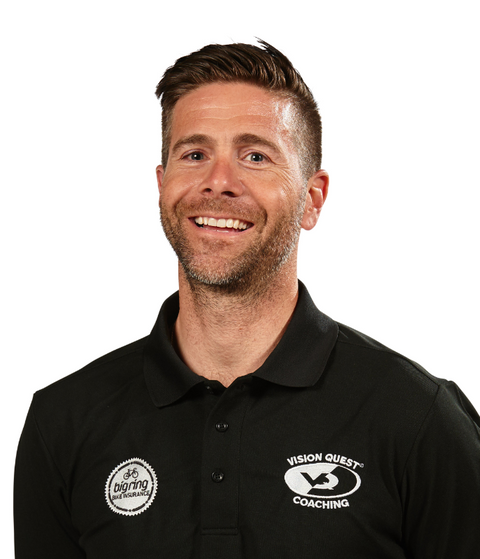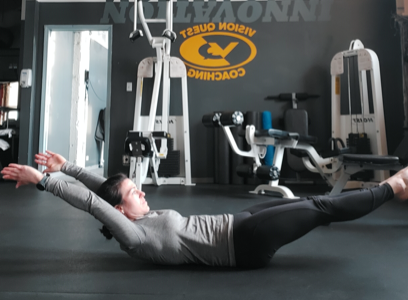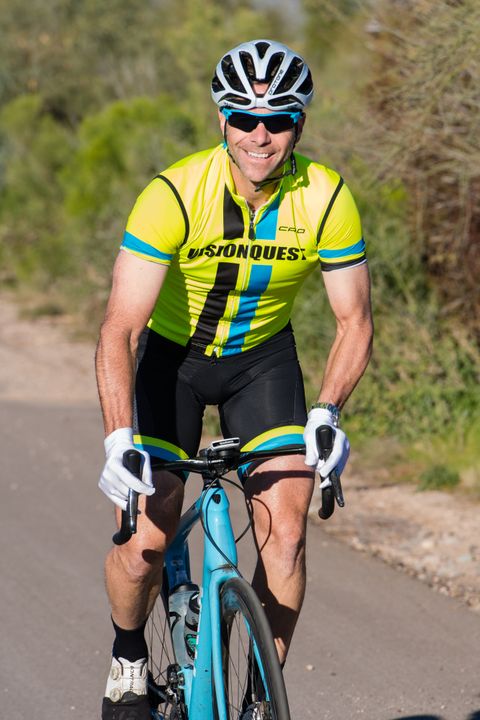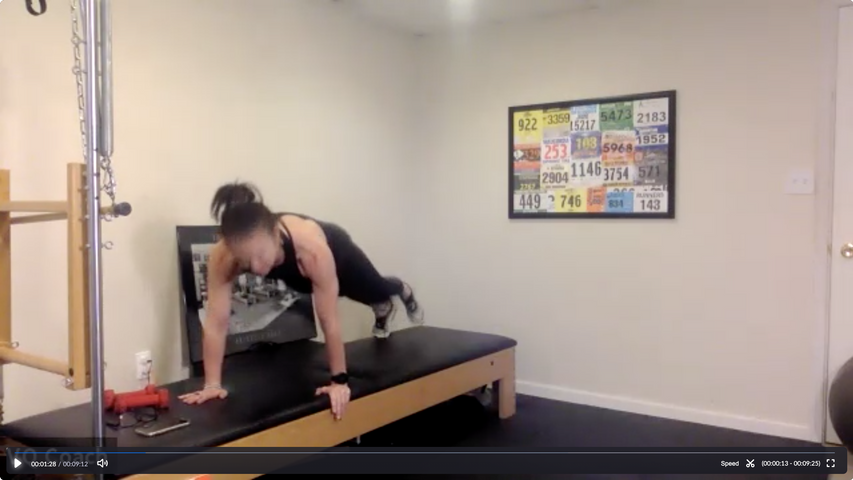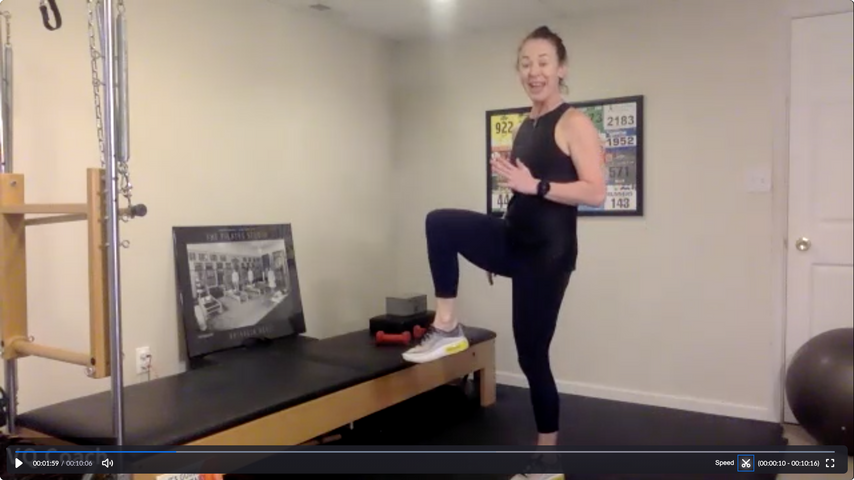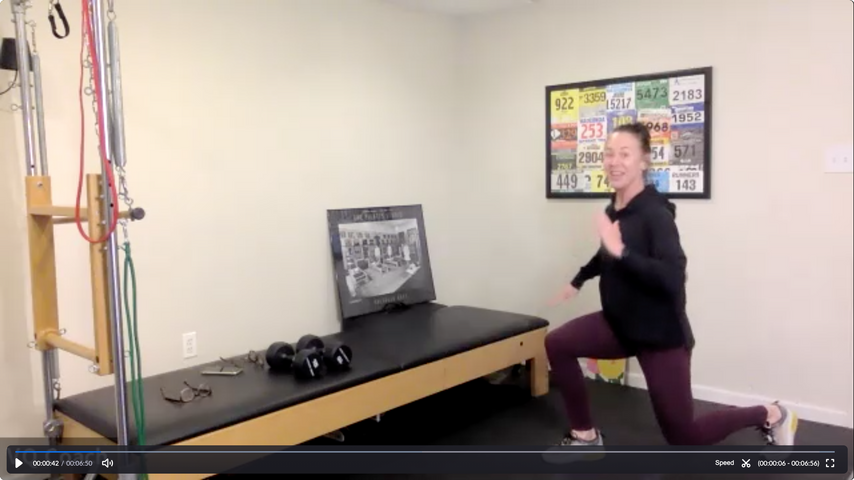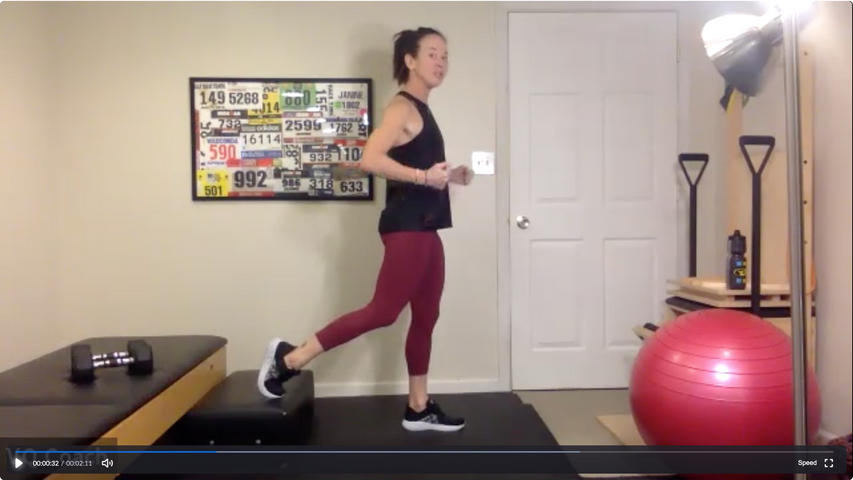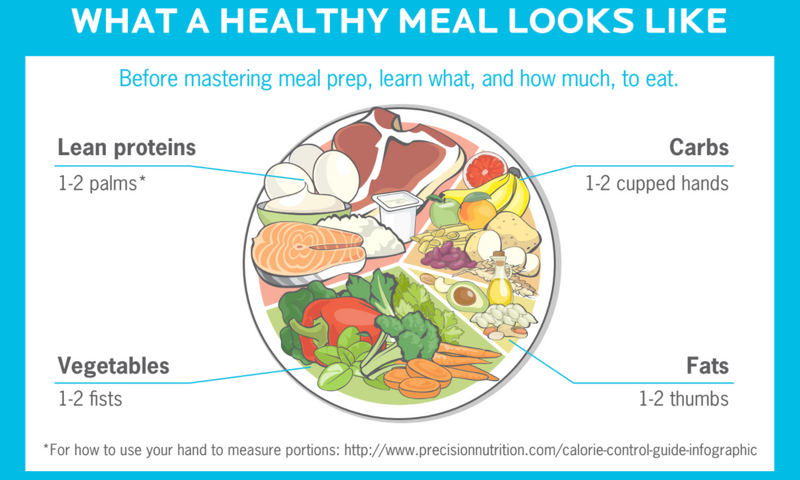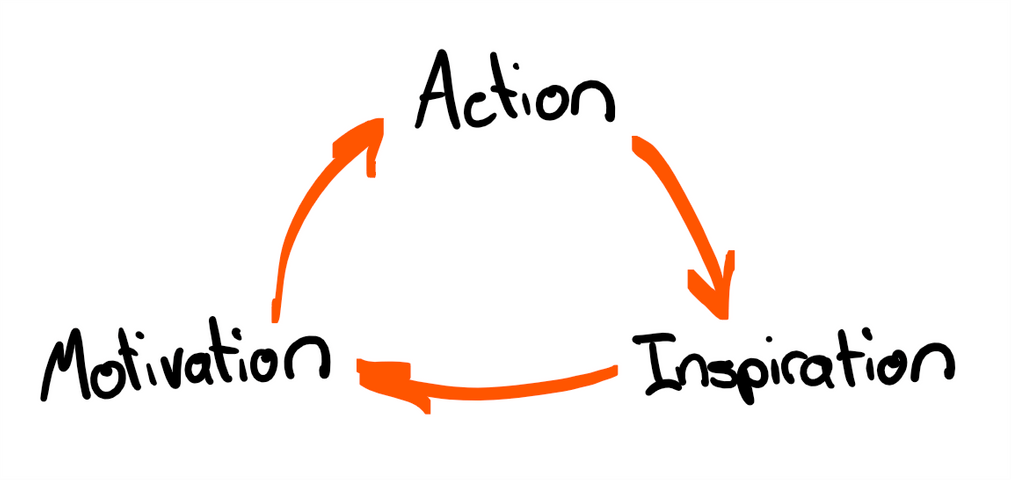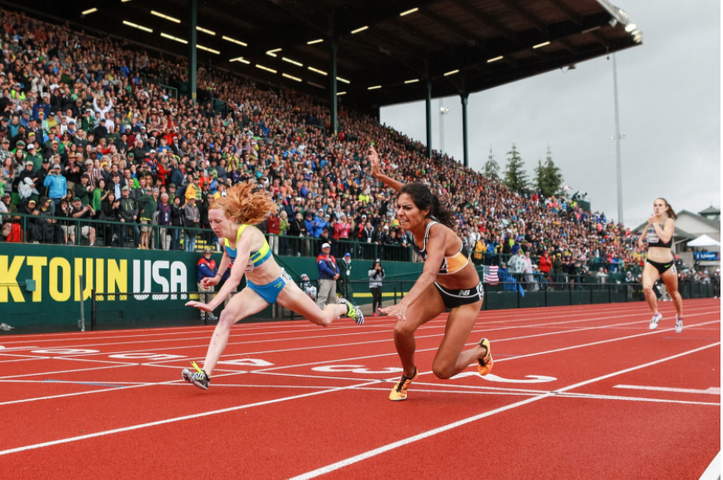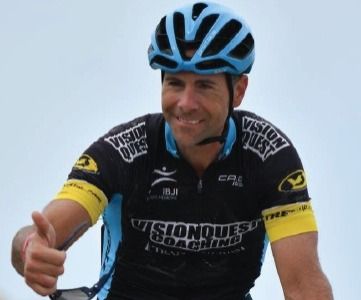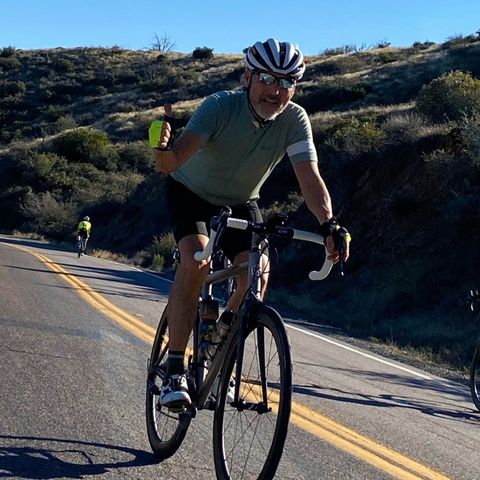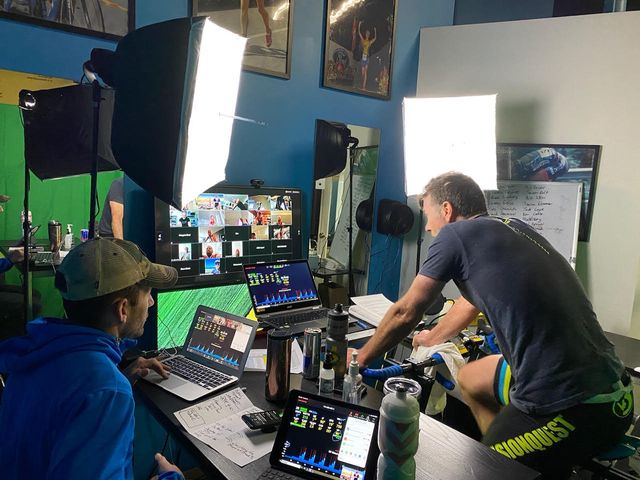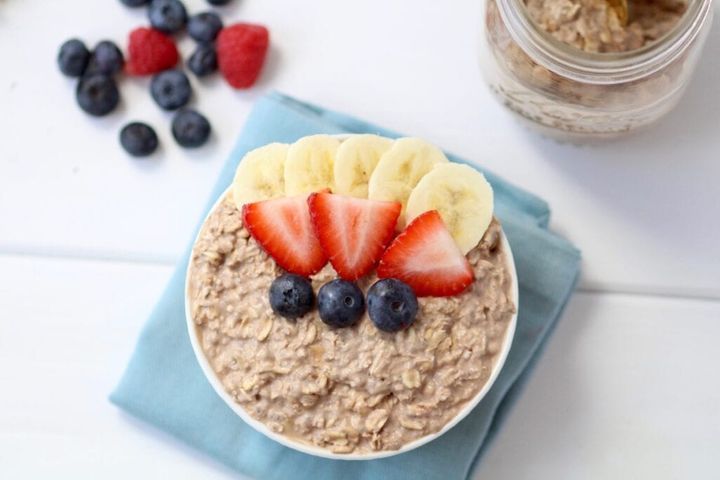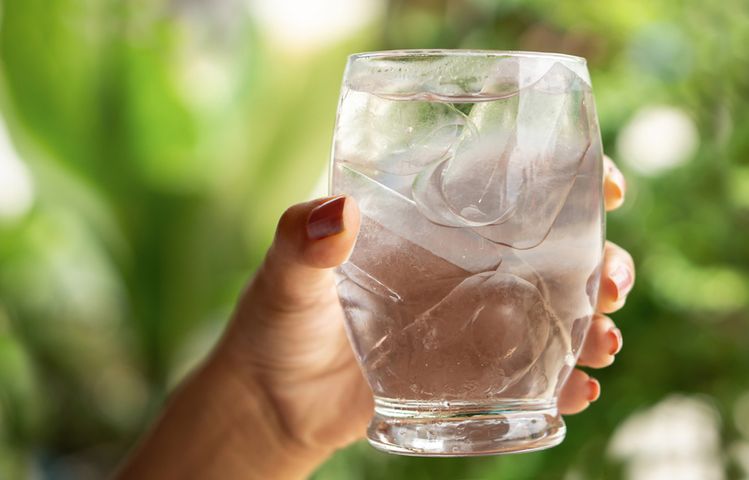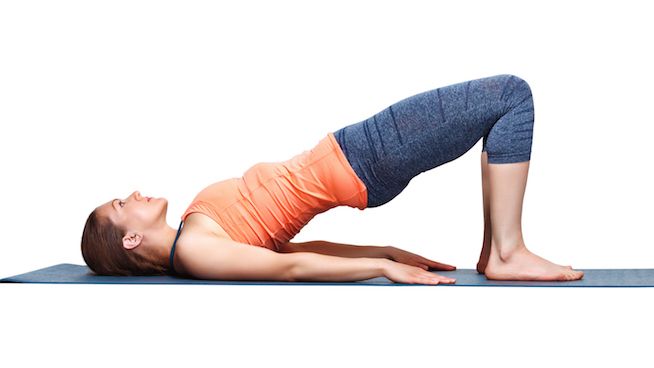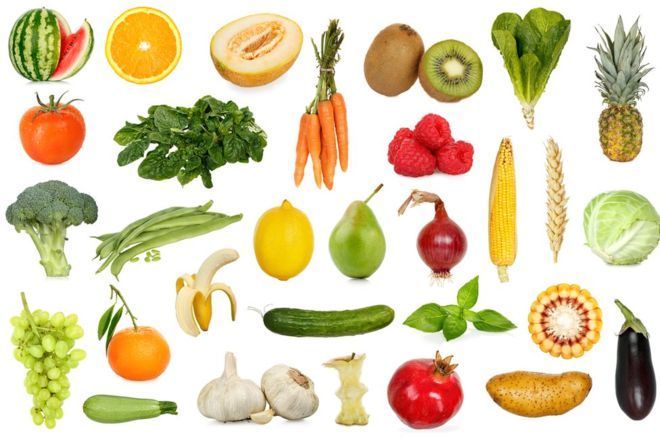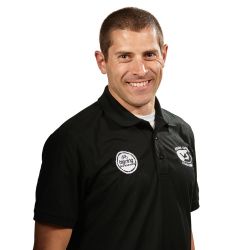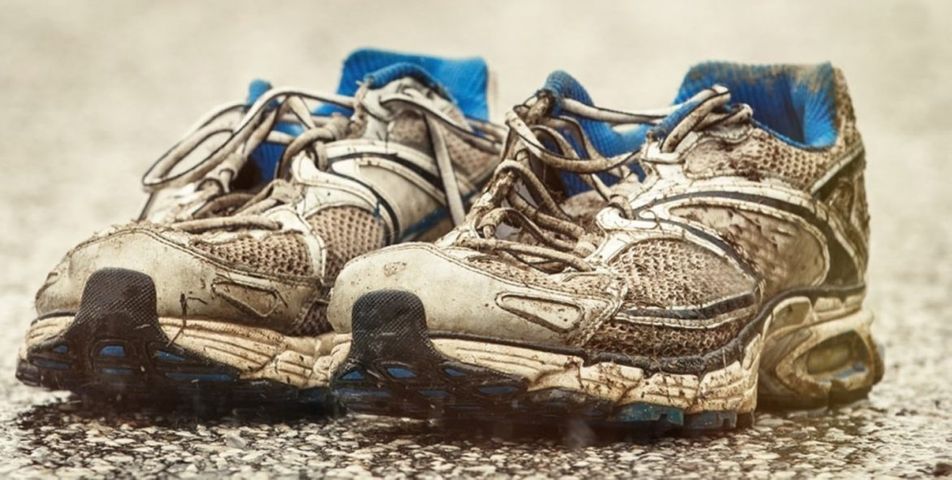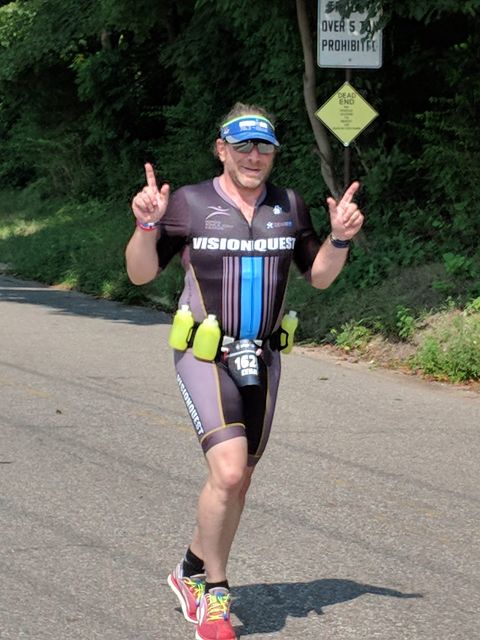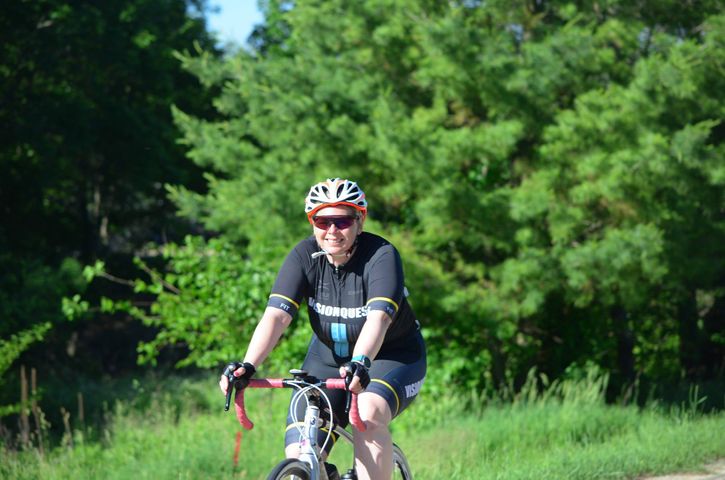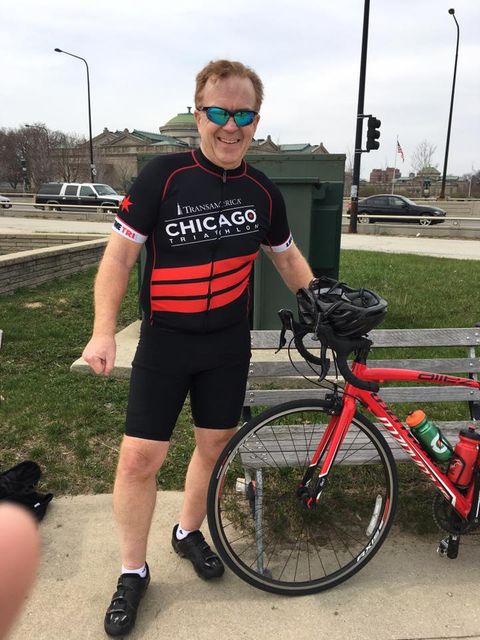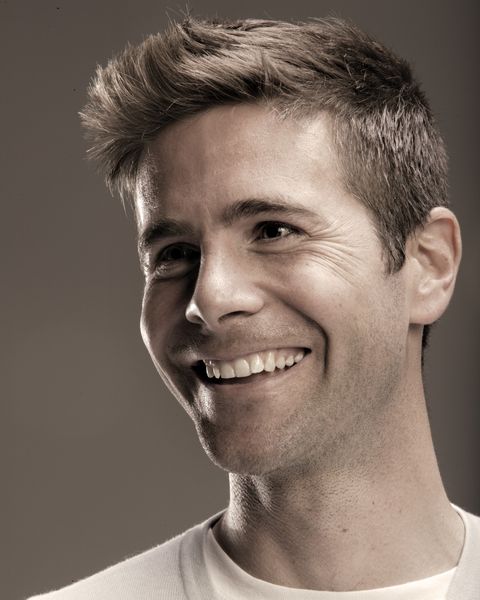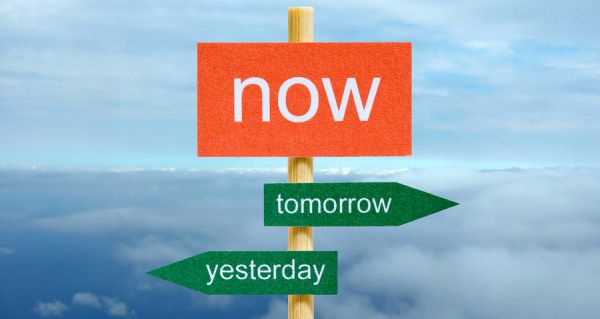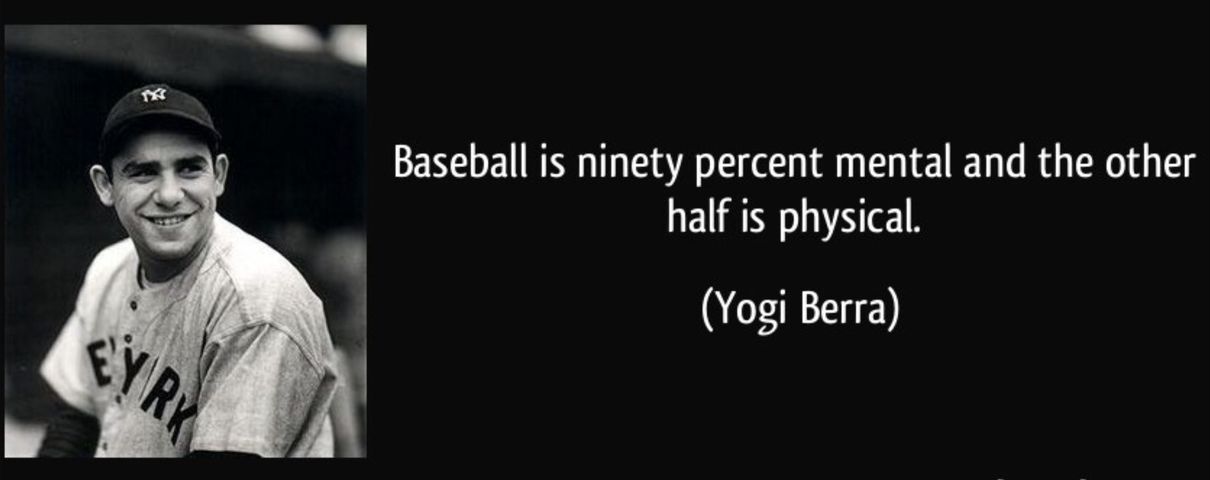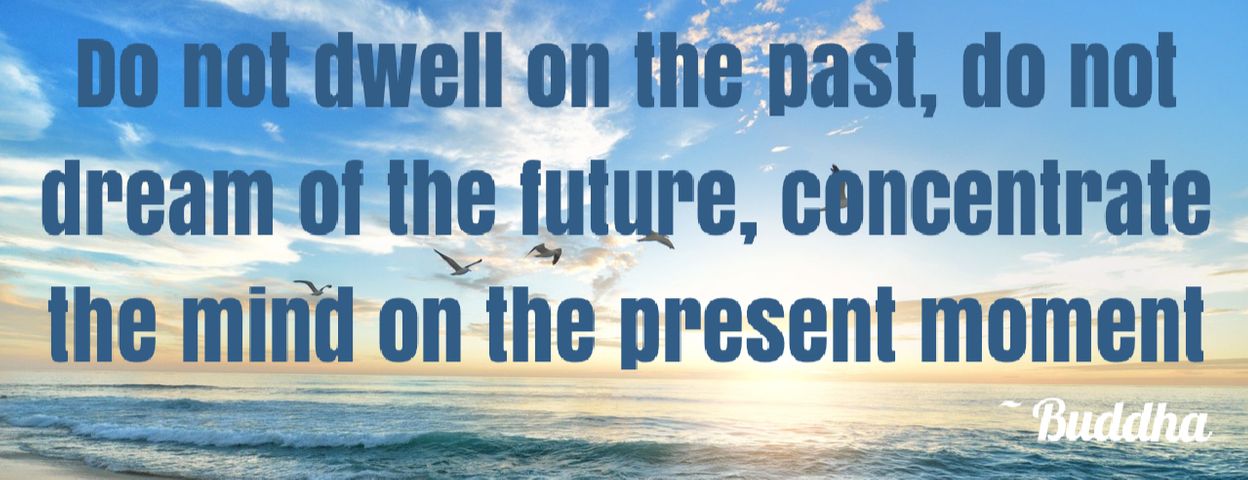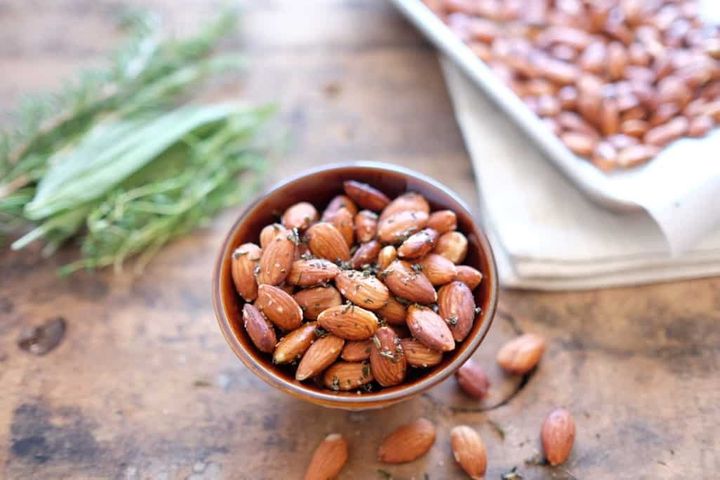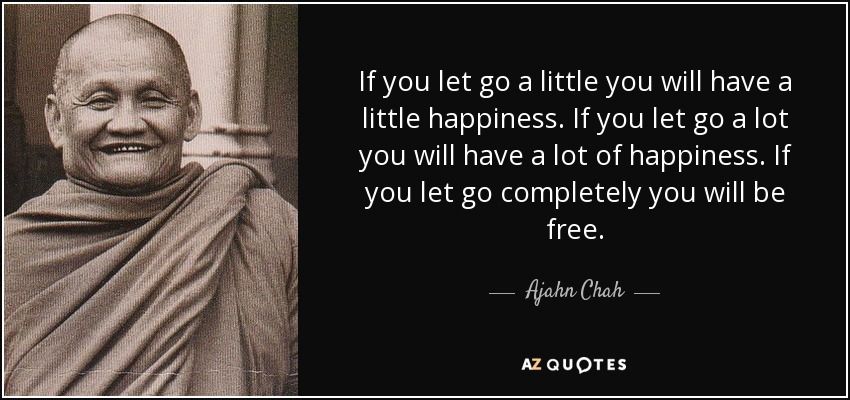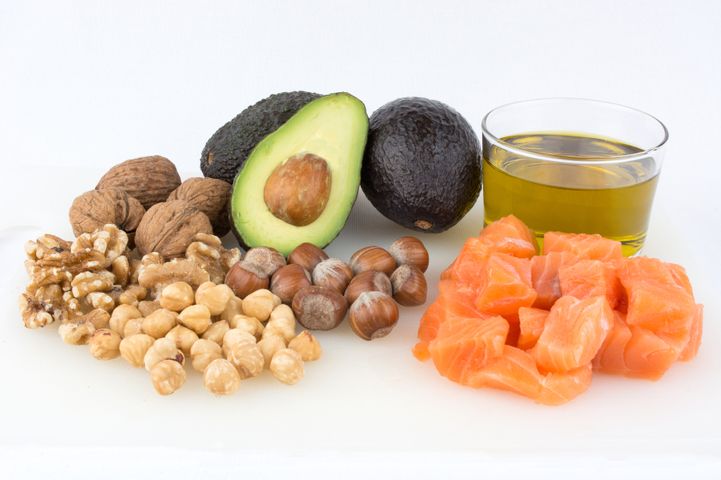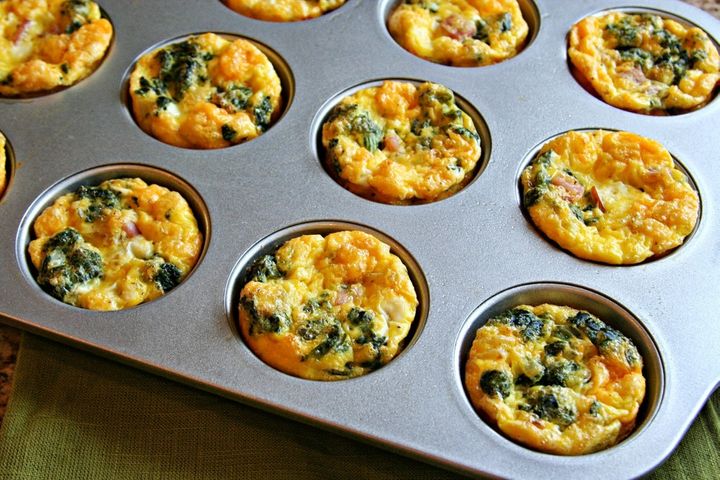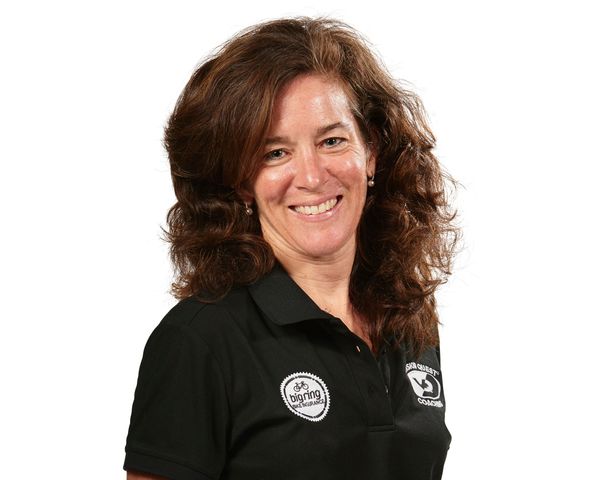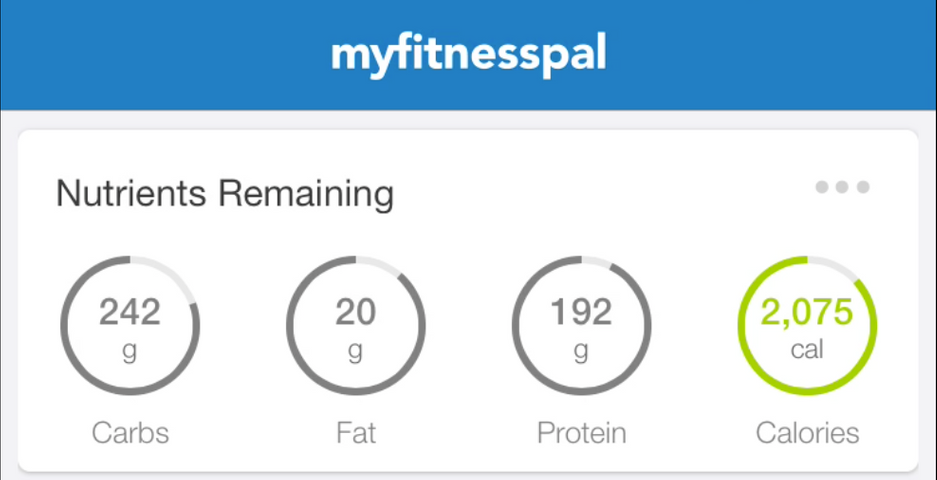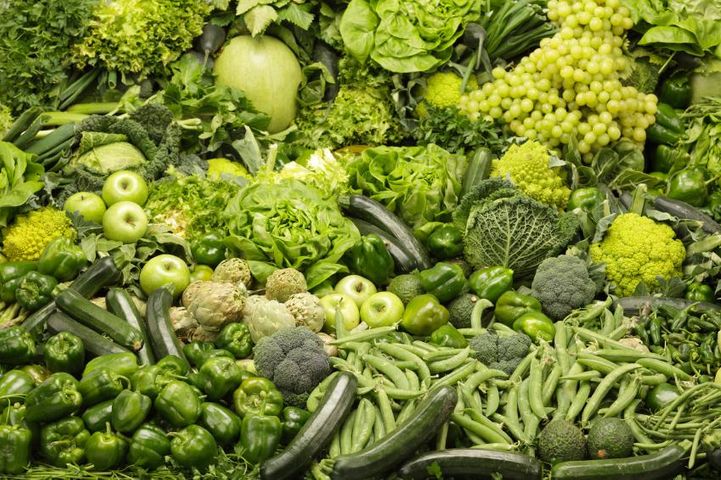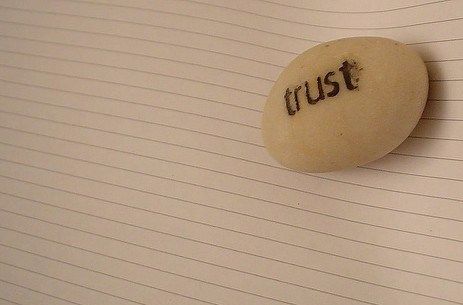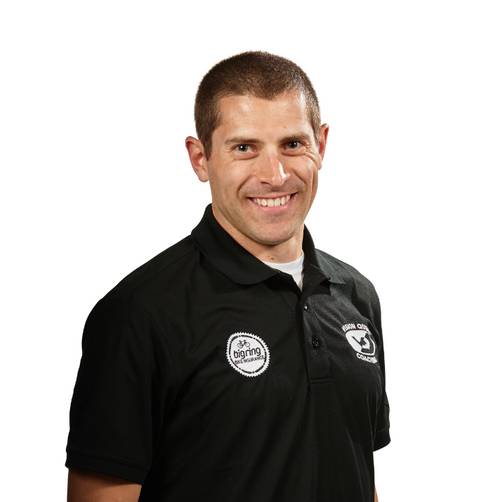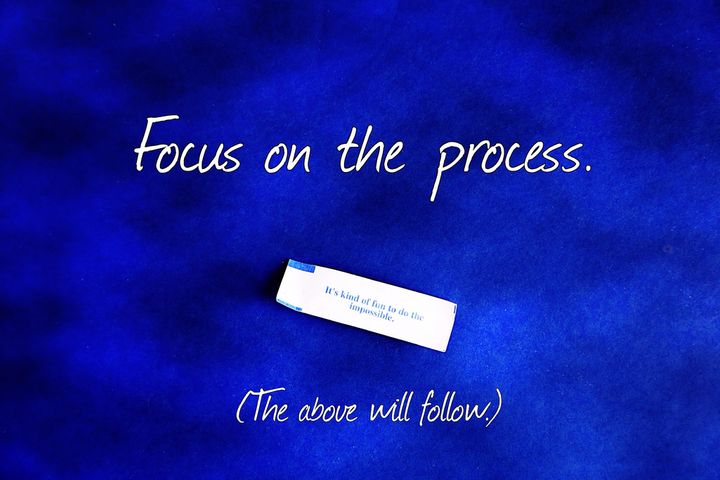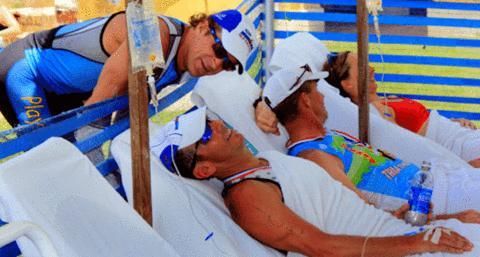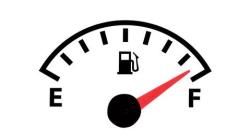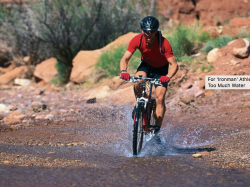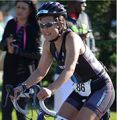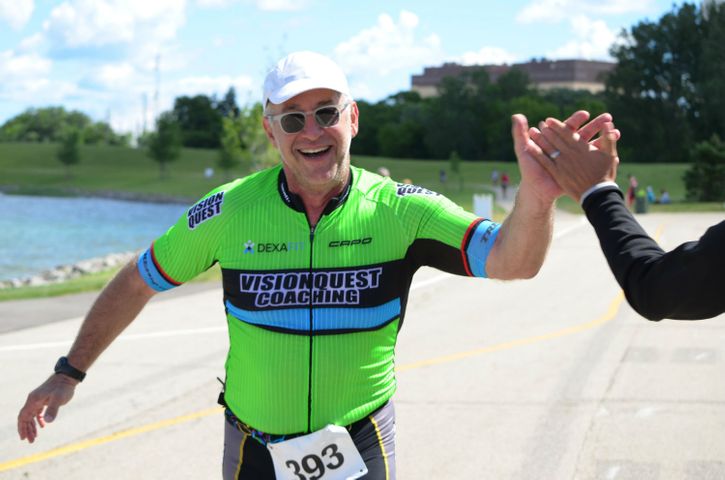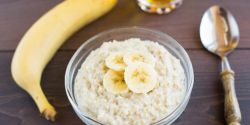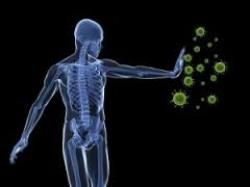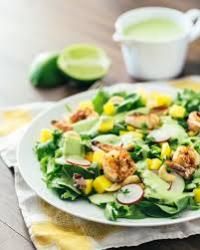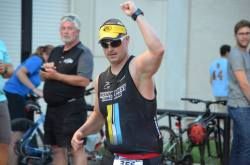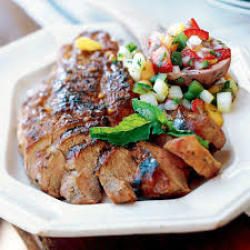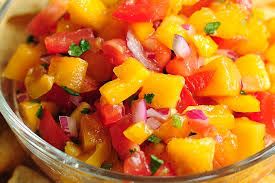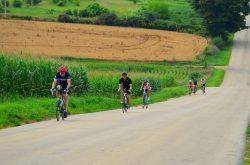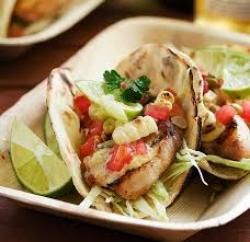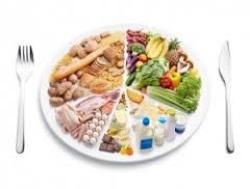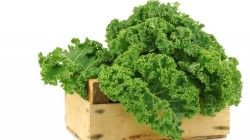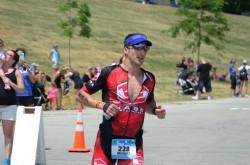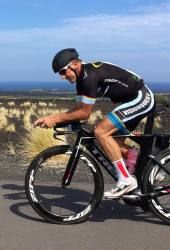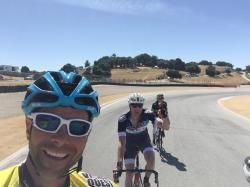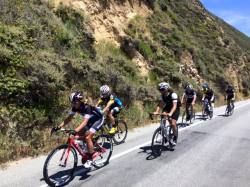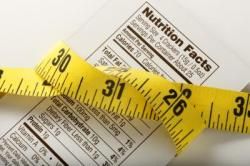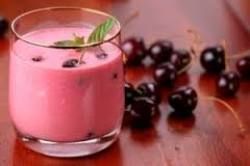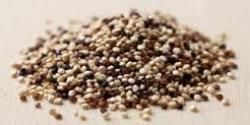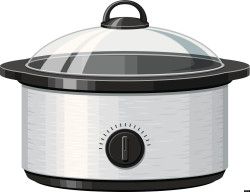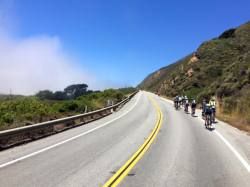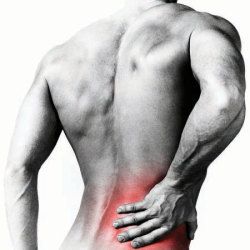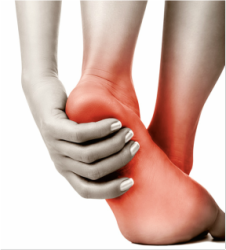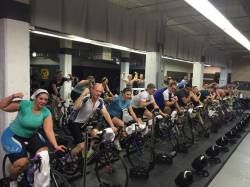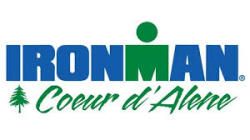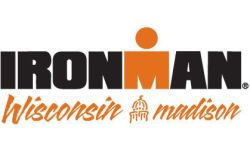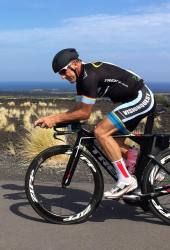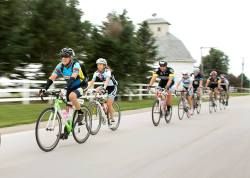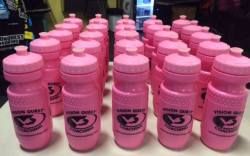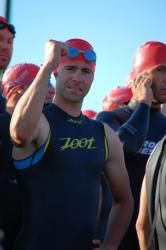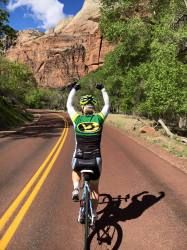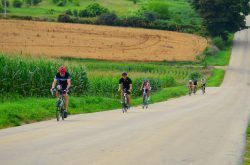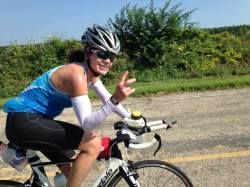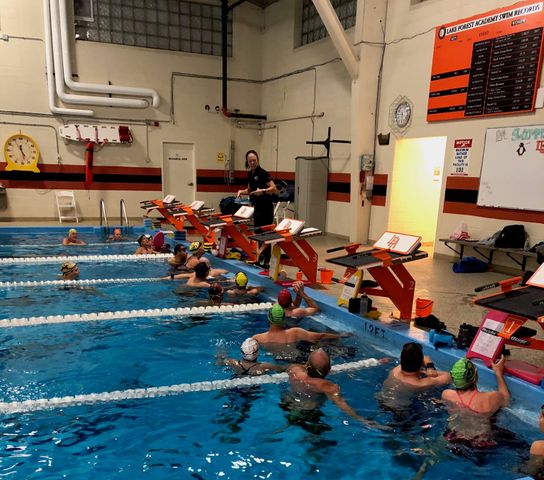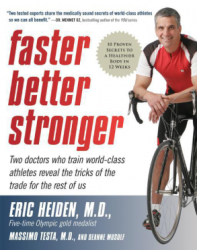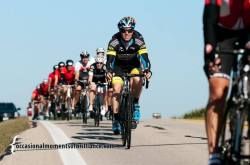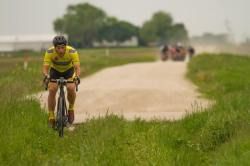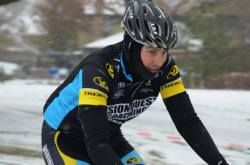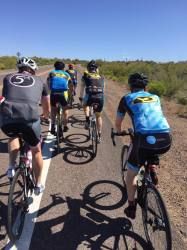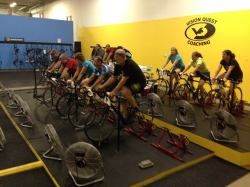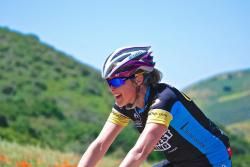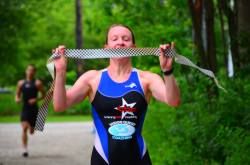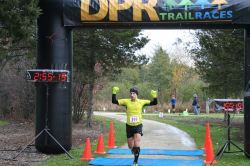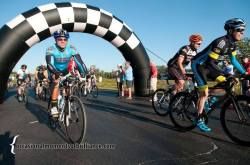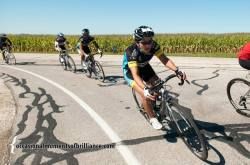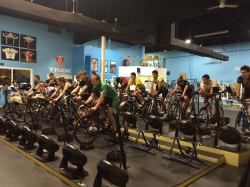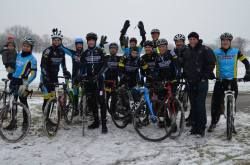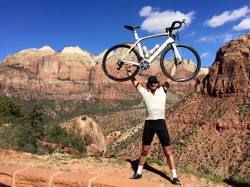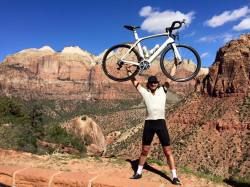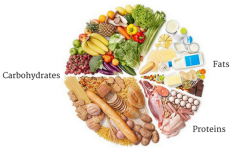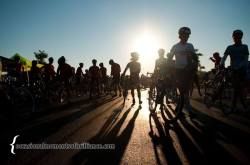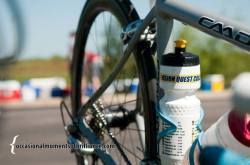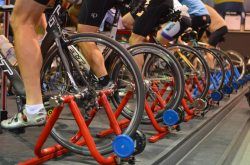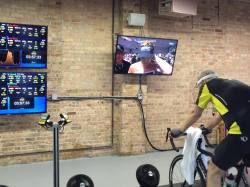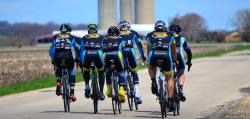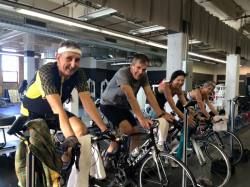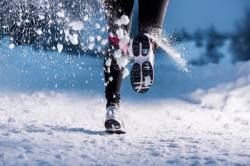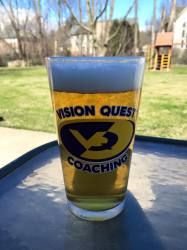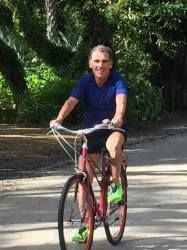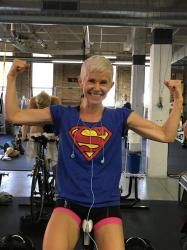Articles
Nutrition Basics Part 1: Nutrition and Energy
Charlotte Backus
This month we will dive into some of the science surrounding how we create energy and how food is involved in our energy production. We won't get too in-depth and will keep it simple. Gaining knowledge around how nutrition plays a role in our energy production is key to understanding metabolism and creating healthy habits.
Let's first go to the basics. Yes, Digestion.
Digestion is the process by which the body breaks down food into smaller molecules that can be absorbed and used for energy. The process of digestion begins in the mouth, where food is mechanically broken down by chewing and mixed with saliva, which contains enzymes that start to break down carbohydrates. The chewed and partially digested food, known as bolus, is then swallowed and travels down the esophagus to the stomach via peristalsis.
In the stomach, the bolus is mixed with gastric juice, which contains hydrochloric acid and the enzyme pepsin. Pepsin breaks down proteins into smaller peptides, and the acid helps to kill harmful bacteria and denature proteins, making them easier for enzymes to...
moreLooking Ahead at 2023
VQ Founder, Robbie Ventura
As 2023 begins, I cannot help but think how much quicker the years fly by as I age. With my oldest graduating from college and my youngest in high school, I am in awe of how fast things move. This is a poignant reminder for me that I still have much to do as a father and husband … and also personally and professionally.
My newest professional venture, building software that helps coaches coach better and athletes learn more, has been very exciting for my team and me. Velocity has helped to build a greater, stronger community of people training together no matter where they live.
Our VQ Wellness program continues to expand and thrive. Through education around sleep, exercise, nutrition, and mental health, our team has guided our clients in making measurable changes, developing good habits and changing (and extending!) their lives.
VQ is ever-evolving and growing with our incredible athletes who continue to show up, support each other and, most of all, step outside of their comfort zones. We love nothing more than providing support, sharing knowledge, and finding...
moreThe Upcoming Holiday Buzz
Charlotte Backus
The holidays are approaching, and you know it's that time of year to embrace comforting food with family and friends. It can also be a time when stress levels can be heightened, and myths can be created around food and the repercussions of indulgence and the festive holiday season. As individuals, we are always our worst critics and can be extra tough on ourselves. If you ever criticize yourself, ask yourself if you would say the same thing to a friend or family member. Usually, the answer is "no." so why would you say it to yourself?
I must always remind myself that our inner thoughts can sometimes be cruel. The holidays can bring those extra harsh critics out as there is a lot of stigma about food and indulging in holiday recipes. It's pushed on us to feel guilty and show as one day of binding and restricting so we can begin a new year with our new fitness or other related goals on personal health.
The mindset of guilt and bashing ourselves for the holiday festivities around food and indulgence is not a good relationship with food and ourselves. I invite you to...
moreThe Hollow Hold Progression
Jessica Stroup
The Hollow Hold is a functional core position that is seen in many different exercise movements and athletic training programs. The position itself can be used as an isometric exercise or as a bracing technique during dynamic movement.
For those who are not familiar with the hollow hold position or are unable to maintain the position, there are variations of this exercise that can help develop the proper strength and technique to eventually be able to perform a hollow hold.
moreSisu
VQ Founder, Robbie Ventura
I want to introduce this greeting with a concept called Sisu. Sisu is a unique Finnish mindset that can be roughly translated into English as strength of will, determination, perseverance, and acting rationally in the face of adversity. Sisu is not momentary courage, but the ability to sustain that courage.(Source linked here)
It has been a while since I have written and that is largely due to my focus on our ever-changing business. I have never been one to sit back and wait for things to work out. My motto, since I was little, is that I either needed to be improving and growing or pivoting to find growth. Nothing has changed now that I have rounded the half a century mark. I have, unknowingly, embraced and lived my life according to the principles of Sisu. VQ has experienced a lot of growth through the years and the Covid pandemic presented a considerable opportunity to figure out what future growth would look like. Instead of hoping and waiting for the world to come back to normal, we...
moreJune RedMane WIN Strength Circuit
Janine Newman
Attention WIN’ners! With the new month, we have a new strength circuit! All new exercise for you to enjoy, get comfortable with, progress, and benefit from. Please refer to the video Coach Janine made that shows you how to do the exercises, how to modify them to make them more accessible, or even more challenging. Incorporated is some mobility/stretch to address those jump-roping calf muscles, as well as push-up to get you ready for the Olympics in July. Grab your mini-bands, and dumb bells if you have them. Here is the list of all the exercises in the circuit, and the suggested amount of repetitions. Do anywhere from 3-4 rounds.
- Bird Dog- 5-8 each side
- Downward Dog to Plank- 5-8
- Banded Shoulder Bridge with mini-band and abduction- 5 bridges with 10 reps each leg with each bridge
- Open Book- 5-8 each side
- Push-Ups- 5 -15 (* you may want to build your reps as you prepare for Olympics)
- Single Leg RDL- 8-10 each leg
- Split Stance Squat- 10-15 each side
...
moreMay RedMane WIN Strength Circuit
Janine Newman
Attention WIN’ners! With the new month, we have a new strength circuit! All new exercise for you to enjoy, get comfortable with, progress, and benefit from. Please refer to the video Coach Janine made that shows you how to do the exercises, how to modify them to make them more accessible, or even more challenging. Grab your mini-bands, your Swiss Ball, and dumb bells if you have them. Here is the list of all the exercises in the circuit, and the suggested amount of repetitions. Do anywhere from 2-4 rounds.
- Bear Hold: 20 second hold
- Goblet Squat: 8-10 repetitions
- Banded Single-Arm Press on Ball: 6-10 repetitions each side
- Ball Roll In-Roll Out: 5-10 repetitions
- Dumb Bell Bulgarian Split Squat: 6-10 each side
- Mini-Band Plank with Side Steps: 5 each side, alternating
- Clamshell: 10-15 repetitions each side
Click here to watch Coach Janine walk you through and demonstrate these exercises!
more“Should I take vitamin D?” Here’s what the science says.
Precision Hydration
How to know if this oft-recommended supplement is right for you.
Vitamin D is starting to sound, well, too good to be true. Hundreds of research studies suggest that vitamin D can help prevent everything from osteoporosis to autoimmune disorders, cardiovascular disease, and cancer. Doctors are recommending it. Health podcasters are talking about it. Even your mom is nagging you about it.
With all the hype, many people are wondering:
“Should I take vitamin D?”
We have your answers. In this article, we’ll show you how to figure out if vitamin D supplementation is right for you. You’ll learn why it’s important for your health, how much you need, and what to know before you think about taking a vitamin D supplement.
What is vitamin D?
Vitamin D is a fat-soluble vitamin that we (mostly) get from the sun, but also from certain foods, and of course, from supplements. And actually, “vitamin D” isn’t just one single thing. Vitamin D refers to...
moreApril RedMane WIN Strength Circuit
Janine Newman
During Phase 3 we will continue to emphasize the importance of strength training to everyone’s fitness, injury prevention, and overall well being. Rather than a strength plan designed to target for a particular event like marathoning or Everesting, we will see in phase 3 a strength circuit introduced at the beginning of each month -- one that is meant to get familiar with and to progress over the weeks. (and of course ways to modify the exercise too) Also, this will be more FULL body oriented. Stability ball and band work will also be incorporated!
In addition we want to continue to invite WIN’ners to Pilates! It is such a great addition to ANYTHING anyone is doing with their fitness and will most certainly find it beneficial. It is also a nice option as it is low impact!
And lastly, we will always have the library of past strength video’s which can still honestly stand alone as its own strength workout, although there is less emphasis on upper body strength.
This month includes the following 7 exercises to completed as a circuit 1-2 or 3xs each session,...
moreMarch RedMane WIN Strength Circuit
Happy Everesting month! Instead of offering a new strength circuit, you will be shown a dynamic warm up that you can do before you start any of your elevation sessions. Warm-up you say? Typically warm-ups are overlooked due to time constraints or lack of understanding the importance of this step. Doing so is beneficial prior to the activity not only for performance, but for injury prevention.
To put it simply, a dynamic warm up is a sequence of movements performed prior to an activity to increase blood flow to the muscles, increase functional mobility and to maximize flexibility, as well as to prepare the body for the activity at hand.
Coach Janine will lead you through a 10 minute routine that is designed to enhance your Everesting sessions. To maximize points, do three times a week before you start your endurance session. And if you are wanting to keep up with your strength, please select any of the past circuits to do. Keep in mind that you are climbing more than ever this month, so you might decide that fewer rotations or lighter weights might be a better...
moreCreate and Use a Sleep Ritual
What does it mean to “create and use a sleep ritual”?
This practice is about:
Planning ahead to build your sleep ritual. Start with the tips below, or experiment with your own.
Protecting more time for a longer wind-down period. Sleep rituals take 20 to 60 minutes in order to be most effective. What will you have to do differently in order to keep that pre-bed time protected?
Continuing to prioritize sleep to keep this practice consistent. Take what you’ve learned to adjust course and find the fastest, easiest track towards your goals.
Why and how to practice
Sleep is a wonderful thing.
Our lives depend on it. It makes us feel good. Helps us recover. And helps us get leaner, healthier, and stronger.
No amount of daytime recovery can substitute for the deeply rejuvenating effects of quality sleep.
And sleep often doesn’t come easily.
Just like you can't go from deep sleep to high alert first thing in the morning, you need time to transition between the demands of a busy...
moreMental Habits
Janine Newman
3 Highly Successful, Awesome, Amazing, Super-duper successful, highly proven Mental Habits you SHOULDN’T do!
Do I have your attention? Did you say you have some great mental habits that you are suggesting that we DON’T do? Is this a typo? Is that Hygge Wool Hat a little too tight? What gives?
Truthfully, there are many mental habits that we have all leaned into one way another that have helped us push through a work, academic, or fitness obstacle, and other mental habits that have helped us develop habits that have brought about positive accomplishments and routines. Certain mindsets and habits work really well, until they become the very thing that gets in your way. Awareness and a little wisdom as it relates to sorting out when to rely on these habits and when to leave them by the wayside can be the very thing that puts you on the path to the next-level performance and well-being. Knowing when to pivot and how to adapt can help you as you aspire to greatness.
Routines
Routines are indeed effective, the research is clear...
moreFeb RedMane WIN Strength Circuit #2
Janine Newman
In our second strength circuit of February we look to it as our finale as we head to base camp of the Everesting Challenge next month. Spoiler alert, next month we can look forward to some mobility and stretching to keep us all healthy and feeling good. But first, lets get to this last strength circuit.
1). Plank with Knee Drive- this exercise is a variation and advancement of a plank that we have done before, but with the additional challenge of alternating a knee drive towards the elbow. Why add a knee drive you wonder? Taking the balance to one leg will challenge the core even more, and adding the knee drive helps to strengthen the hip flexors and work hip mobility. A win-win for WIN! Don’t worry, the video will show you how to do this, and also show modifications that can be taken. Shoot for 3 rounds of 6 reps. each side.
2). Dead Bug- an oldie but goodie! This is an effective exercise for strengthening the core, and stabilizing the spine and back muscles. Keeping good posture throughout the day and while exercising takes good core strength, and certainly...
moreFeb RedMane WIN Strength Circuit #1
Janine Newman
In the first strength circuit of the month, and as we get into the groove of the Everesting Challenge, we see a familiar exercise in back lunges but with a twist, as well as push-ups that we have done before. A new exercise is introduced called the Front Foot Elevated Front Squat to round out the 3 exercise circuit. Each of these exercises are ones that will help bring about an increase in strength if done consistently while maintaining good form, and ultimately to increase the readiness of completing the Everesting Challenge. Complete 3 rounds of 5-10 repetitions of the following:
1. Push-ups: an exercise that develops core, shoulder, and back strength. A useful exercise for the Everesting Challenge as ideally we use the power driven from the arm swing (that comes from the back and shoulders) to assist in powering up stairs, hills, or any elevation. 3 x 5-10 reps.
2. Back Lunge with knee drive: an extension of an exercise we have done in the past, is included in the first February circuit. This variation emphasizes power and...
moreJan RedMane WIN Strength Circuit #2
Janine Newman
In the second Everesting Strength Circuit of the month we get to revisit an oldie but a goodie, a blend of two different exercises we have done but put together as one, and lastly a variation of a classic exercise. Enough of these hints and foreshadowing, let's take a closer look at the next circuit.
First we have “Forward Lunge into Back Lunge”. As the name suggests, we move from executing a forward lunge, directly into moving that same leg into a back lunge. This will be challenging balance, core strength and coordination- and its awesome! :) Of course all the benefits for the legs and glutes are there, and we take preparation for the Everesting Challenge to the next level.
Next we have our oldie but goodie- the Step-Up! The act of stepping up, and controlling the action of descending down is a very specific exercise we can all do to increase body strength and endurance for the Everesting Challenge. Perhaps this time around you might be able to increase the reps.you did the last time, and MAYBE even add some weights to your regime?!
Lastly, the third...
moreCreate a Nourishment Menu
So, what’s a nourishment menu?
As we learned over the last 2 weeks, we often have a reason for eating that has nothing to do with physical hunger. Now, how do we avoid eating when we are stressed, bored, etc? We nourish ourselves in other ways. A nurishment menu is a menu of choices (for you to pick from) that helps nourish you in other ways than stress or boredom eating. Create a list of actions to help nourish yourself when the unintentional eating cravings strike...Here is how:
Pick a thing before the thing!
That might sound odd, but do just that: Pick an action (a thing) that you'll always do before you engage in stress eating/snacking (the other thing).
Ideally, it's multiple actions—like a "menu" of choices for yourself.
These actions disrupt the trigger/behavior cycle. But there's more to it than that.
It’s called the nourishment menu because we're deprived of so many things that nourish us on many different levels right now.
Examples: as much fresh air as we want, social interaction, free...
moreHygge
Janine Newman
Winter is here! Whether you’re in the Chicago area, in the British Columbia, Texas or Florida, it is STILL winter, and with that comes an opportunity to embrace this change of season. For many however, the snow, the colder temperatures and shorter days seem to contribute to bad moods and longing for warmer days. But what if you practiced and spread a little hygge? What is “hygge” you ask? Well, back in 2016, Oxford Dictionary featured as a finalist for “word of the year” a Danish word called “hygge”, pronounced “hoo-guh” made the list. There is no English word that directly translates to this word, but “cozy” comes close. The Danish definition of hygge is: a quality of cosiness and comfortable conviviality that engenders a feeling of contentment or well-being. This thought, this term, this attitude, this lifestyle of a Scandinavian coziness had begun to make significant inroads with an international audience! At least six books about hygge were published in the United States this year, with more to come in 2017.
Meik Wiking, the author of...
moreKnow Why You're Eating
What does it mean to "know why you're eating?"
The practice is about:
Pausing before you eat, to be present with your actions and motivations.
Observing your intentions for eating.
Asking yourself:
Are you eating for biological needs?
Are you eating for psychological needs?
Is this choice bringing you more joy and ease?
Accepting the motivation, whatever it is.
Awareness-building is the main goal of this practice. After you check in with yourself honestly, whatever next choice you make is ok.
Why and How to Practice
Eating is primal.
In the life of a human, eating is one of the few non-negotiables.
We move, socialize, sleep, and eat. The rest is details.
We eat for the obvious (awesome) reasons. Obviously, food is fuel. Eating is comforting, settling, energizing, engaging and fun.
And we sometimes eat for less obvious, more subconscious reasons. Like fear, anxiety, stress, boredom or...
moreChoose Better Protein
Kate Amaral
What does it mean to "choose better proteins"?
This practice is about:
- Knowing what your usual options and choices for proteins are.
- Identifying your criteria for "better".
- Choosing proteins that are a little bit better along your continuum of quality, consistently.
Better proteins are less-processed, generally leaner, and closer to their original source. For the most part, you can tell a food is less-processed by how close it looks to its wild form.
For example, with animal protein like a chicken breast, you can tell generally which part of the animal it came from. That's unlike a more-processed and packaged hot dog, that's ground and wrapped in casing.
For plant proteins, lentils and beans look like parts of their parent plant. That's unlike plant-based meats, which have gone through more processing steps to get it to their current form.
These proteins are more nutrient-rich. They contain a wide array of not only amino acids (the building blocks of protein), but also vitamins, minerals and...
moreFind Your Blue Zone
Janine Newman
At work, we are driven by numbers- results! At school there are grades, math class, science, so many numbers and data points, so little time. As athletes we value things like interval times, wattage, paces, and time trials. As WIN participants we have kept track of our miles, and soon our elevation, and other benchmarks along the way. Regardless of what metrics matter most to you, it’s all too easy to get caught up in them until they become all that matters. But what happens when you hit a plateau, stuck in the same place, maybe even going backwards? As anyone with experience in their positions we know you can only keep up that intensity, that upward trajectory for so long before it sometimes begins to feel like it is starting to crush you.
Sometimes the best way to keep going forward is to actually take a few steps back! Specifically taking those steps OUTSIDE. There is a strategy called “forest bathing” that has gained more popularity and understanding that any one of us can do today that has been shown to benefit stress levels, anxiety, and the nervous system. Before...
moreTraining SOS Strategies
Janine Newman
Even though most of the time we love to train, feel stronger, strive for the next challenge, and bask in the glory of the routines we set for ourselves, at some point life can throw us a few curve balls and obstacles that make this more difficult than we would like. This is normal, and most of the time it can’t be avoided. But having a game plan, some guidelines, and fresh ideas might be just the strategy to stay on track and moving forward.
Some of the most common obstacles that come up for athletes are feeling like you don’t have enough time, getting sick, and losing motivation! Here are some helpful tips and strategies to help you overcome these challenges!
Don’t feel like you have enough time to train?
Finding time to fit in a workout and think about your training goals can be a stressful thing to add on top of a plate that is already full! However, there are many things you can do to create more time in your schedule to fit in training.
Eat Lunch Fast. Training during your lunch break is an...
Strengthen Your Knees
Janine Newman
The How-To's and Why’s to Strengthen Your Knees and Add Longevity To Your Running
Scene: Sitting around the fire pit with pals. Your pals just found out you are a runner.
Top most likely heard comments:
Oh yikes! Running is the worst on your knees!
I would run too, but I have bad knees.
If you don’t have knee problems now, you’re gonna!
You love running, or maybe you’re trying to love running and you hear things like this, what are you supposed to think, and what should you do? Is what your pals are saying true?
The truth is running has long had a bad rap when it comes to knee injuries. But running on its own isn’t as bad on the knees as people once thought. There was a recent study in the journal of Arthritis Care and Research that showed that runners who logged the most mileage actually reported less knee pain than their counterparts! Now, the knee DOES take the brunt of the impact with every step in a run. When it comes to injuries, knees do account for 28% in...
moreFoolproof Your Fall
Janine Newman
Temperatures are coming down, days are starting to get shorter, it's pumpkin spice everywhere you look, and are those leaves turning colors?? Fall is officially here, and I am here for all of it! During much of this at home time we have had during this pandemic, we have done many puzzles, baked a lot of bread, and may have even participated in a Zoom happy hour or two! And now with that chill in the air and many begin to hunker down, us "WINners" and our growth mindsets might like to try something a little different. So put away that bread maker, explore the following list and see what calls to you! Keep the conversation going on your team’s WhatsApp channel and share what interests you, as well as add to the list!
A Healthier (and cheaper!) Pumpkin Spice Latte
This seems to fall in the love it or hate it category, but if you are one of the millions contributing to Starbucks #1 seasonal drink, then the following is for you! A grande PSL is 380 calories, and hold on to your horses here, 50 GRAMS OF SUGAR (that is nearly 16...
moreMeal Prep Tips: Save Time, Eat Healthy
Janine Newman
Meal prepping, you see it on Instagram, taunting you with the pictures of beautiful, colorful meals, in trendy bento boxes, arranged and organized in a spotless refrigerator. You admire the organization and skill of these people who must have all the time in the world, a farmers market down the street and the untouchable culinary wizardry of some of the top chefs in the world! Yet you know you could benefit from this healthy strategy in the middle of the week when all you want to do is hit the drive thru or throw something you found in the back of the freezer into the microwave after a long day at work. How does a person even get STARTED with the logistics, shopping, and preparing with this meal prep thing? Don’t worry!! Here are nine tips and tricks to get you going:
Invest in the right containers! Containers that you can store and reheat and eat from are key! If you can swing an all glass container option, some even have dividers to help keep foods separate are a wonderful environmentally friendly choice you can use for virtually a lifetime....
Walking: Exercise Packed With a Punch
Janine Newman
Now that we are weeks into WIN, all of us are getting our steps in whether we are runners, walk-runners, or walkers as we head towards the marathoning challenge in November! Of course these steps are important to get to that “start line” healthy, but there are so many more benefits to walking outside of the WIN program that you may have already noticed or are in the process of discovering. From higher energy and better mood, to stress relief, creativity boost, and more, walking has a multitude of advantages. Because a top 10 list doesn't cover it, here are 11 reasons how walking can make a positive impact on your life:
Whether you’re just having a down day or a down life, taking a walk can lift your mood—especially when you go outdoors, according to a study published in the American Journal of Preventive Medicine. The study participants who averaged 200 minutes of walking every week reported higher energy levels, better emotional health, and a more robust social life when researchers...
Motivation Is Not All It's Cracked Up To Be
Janine Newman
New Year's Resolutions, the beginning of your new gym membership, the new diet you’re starting AGAIN on Monday, your commitment to clean out the garage, the launch of the WIN program: You feel so energized, excited, and invigorated at the start! But the ugly reality is you will fail before the end of the year. HARSH!!
Studies show that only 9% of people stick with their New Year’s resolutions. A decline over the months show that by the 6 month mark, less than 50% have stuck with it, and with each passing week, the outcome becomes more bleak. It seems as if the motivation we had at the beginning has all but faded away!
Most of us believe that motivation brings about action! If we are motivated enough, we will get the results we are seeking. We just gotta keep the motivation up!! But what if the best approach is almost the opposite? What happens if we ignore our motivation in order to see our habits change? Does this make any sense at all?
Wisdom and experience have shown us motivation can wane, so how in the world do we get past that, and past that enough to...
moreWIN Marathoning Challenge Training Plan Notes
Jason Schisler
Setting a goal
The goal of our event will be for each team to accumulate as many miles as they can. The big question will be whether you will personally walk or run your miles. Running of course requires more effort, and is harder on the body if you’re dealing with any knee, hip or back injuries. Walking, on the other hand, is something most people are able to do, and the intensity is relatively low. However, walking is much slower, and it will take longer to accumulate more miles. You could technically walk a marathon, but at average walking speeds, this is going to take 6-8 hours!
We encourage everyone to pick a goal that is achievable, but one that will challenge your current fitness a bit, whether you choose to walk or run. In both groups, a good starting point is taking on a distance longer than you’ve ever covered before. If you’ve already completed several ½ or full marathon events, maybe aiming to complete one faster is a more worthy goal. For those who start out as walkers, maybe as you gain fitness, you can start to include a bit of...
moreThe Process Makes the Progress
Janine Newman
Brenda Martinez, United States Track and Field athlete was in the last 100 of her best event, the 800-meter run at the Olympic Team Trials in Eugene, Oregon when another athlete tripped and fell onto Brenda causing some fumbling footwork. She regained her composure, but the milliseconds lost was enough for her to be passed by other runners to get those coveted Olympic spots. Any spectator could see the opportunity that was devastatingly lost in that moment.
What was Marinez reaction to her failure, her goal of making the Olympics in her strongest event? She said this to the press, “The track doesn't care about your feelings. You’ve got to move forward.” She went on to say that she was focused on getting ready for her other event, the 1500m. She could have felt distraught and dejected, especially as so much of this was due to bad luck, and no one would blame her for it. And did she move forward! In less than a week, Martinez literally dove across the finish line to secure the last spot on the Olympic team-- by three one-hundredths of a second-- her ticket to Rio was...
moreJuly 21st 8:00am Ride Notes
Pro-tips
- 3 minute intervals - This is the best duration for building VO2 Max. Three minute intervals are known to have the greatest impact on our VO2. This is what I recommend as a default workout 3 minutes on 6-8 minutes off.
- The other type of VO2 intervals that seem to work well are short bursts followed by short recoveries: 30x30.
- How do you know what level to do your intervals at? Keep the sound on to hear Robbie’s explanation of how to figure out your ideal effort level for 3 minute intervals. The 10 minute warm up is filled with great info on blood lactate. Robbie helps us understand how hard to go based on physiology.
- We like to do anywhere between 12-20 minutes of VO2 work during our VO2 workouts.
- Folks with more lactic tolerance can do less high intensity than those with a lower tolerance. The higher the tolerance, the more damage that can be done or the less volume you can do. It is a negative correlation.
- *If you look at your five minute all time max power you can go slightly...
July 7th 8:00am Ride Notes
Ride Overview
This ride focuses on the VO2 system. Maximizing the utilization of oxygen. Efforts are between 30 seconds to five minutes. There are a total of 7 interval sets with a tempo block between the fourth and fifth set.
Four interval sets in the first half of the workout. Each interval is 3 minutes with a four minute recovery in between each set.
First Set: First 15 seconds are out of the seat at the start of each effort. Big gear and push hard.
90 second effort @100%
60 seconds at 115%
30 seconds effort at 125%
Second Set:
90 second effort @110%
60 seconds @ 115%
30 seconds effort @ 125%
Third Set: Skill building for this set works on high RPM for the first 15 seconds of each effort.
90 second effort @115%
60 seconds @ 115%
30 seconds effort @ 125%
Fourth Set: Skill building for...
moreJuly 2nd 8:00am Ride Notes
Start with a 10 minute warm up
This is a rhythm based effort.17 minutes with pops every 3 minutes for 30 seconds. Here is the breakdown of the efforts:
5- 3 minute efforts @90% with five 30 second spikes @ 120-130% while out of your seat. This is a skill development exercise.
First Interval Set
- 1st pop - Out of the seat @ 120-130% and low RPM
- 2nd pop - 120-130 seated at high RPM
- 3rd pop - seated low RPM- focus is on feeling each and every muscle of the pedal stroke
- 4th pop - Out of the seat, high RPM --Load the weight in your arms and your hands...shift the pressure forward to run a high RPM 90 or higher @ 120-130 percent of FTP. out of the seat. Make sure to keep head quiet and use your hips and get the cadence high.
- 5th pop- Anyway you want- have fun and let it go.
Then we take a minute/a minute and half rest at your buffering level. If you don't have your buffering level, go to 50% of threshold. Follow this up with a...
moreChinese Farmer
By VQ Founder, Robbie Ventura
As I reflect on the last four months and how things in my life have changed, I cannot help but look to our athletes for inspiration on what is possible. It reminds me of my favorite parable about a Chinese farmer who lived in the mountains and spent all his days with his son and his horse farming his fields to make a living.
In this parable, a farmer’s horse ran away and everyone in the town said to him, “You must be devastated. You lost your horse and now you cannot plow your fields.” The farmer replied very casually, “Maybe yes. Maybe no.” The next day, not only did the horse return, he brought two stallions with him. The people in the town rushed to the farmer and said, “This is great. You must be so happy! You now have three horses and you have just become one of the richest farmers in the land.” The farmer replied casually again, “Maybe yes. Maybe no.” Soon after the farmer's son was training the stallions and one of the new horses reared up and landed on the boy's leg, breaking it. Now the townsfolk sadly said to the farmer, “You must be so devastated. Your boy broke...
moreJune 30th, 8:00am
Ride Overview
- 10 minute warm up
- Five Interval Sets
- Each interval has three efforts.
- Five minute recoveries in between each interval.
First interval set:
- Each effort is 90 seconds @ an output that you can do for all three efforts.
- 30 second recoveries between each effort. These 30 second recoveries are full recoveries.
Second interval set:
- First effort starts out of the seat @ 110% then for the remaining minute, sit back on the saddle and shift to an easier gear but maintain power.
- Second effort starts with 20-30 seconds out of the seat at >100% then finish out the effort from the seat.
- Third effort is done from the seat. Try using a complete pedal stroke to recruit other muscle groups besides the quads. Using the full stroke brings in the hamstrings and the glutes.
Third Interval Set:
- This interval set uses different hand positions on the...
June 18th, 8:00am
Ride Overview
- Ten minute warm up
- Three interval sets that have a couple of VO2 sets to get started.
- Then use average power at 85% and after four minutes bring it up to 90% within one minute.
- Then for the next four minutes sit back down and bring it back down to 85%
First Interval:
- 120% for 30 seconds. This opens up the legs.
- Rest for 20 seconds.
- 110-120% for 30 seconds.
Take the next three minutes to bring it back down to 85%.
After taking those three minutes to get back down to 85% take a smooth steady increase to get it back up to 90% while out of the seat.
Do this routine two times within this 15 minute interval.
This allows us to practice increasing and decreasing the effort in a slow and controlled manner and creates “blood lactate splashes”
At the 6 minute mark (in this interval) have your effort be back at 85%
Five minute recovery between interval...
moreVQ & You: Highlight Reel
Welcome to VQ's highlight reel, where we will be showcasing incredible gains and uplifting news during this stay-at-home period.
Dennis Vidanes, VQ Member
What gains have you noticed since starting Virtual Training?
- Dennis Vidanes: I look stronger compared to last year. I can do solo rides much better and am more confident, before I always benefited from drafting in group rides.
What are some outdoor riding skills that you honed in on during the Virtual Training program?
- DV: I've been able to learn from Dave Noda on how to shift better: constant pressure (wait for the pressure in the back wheel then shift on climbing and down shift), at the top of the climb (shift up) build momentum again to propel me on the next climb. In short, don’t stop pedaling and “avoid skipping the dip”!
What measurable gains have you seen:
- DV: I've been able to recover so much faster (during rides and back...
Time to Test?
By Dr. Kevin Sprouse
Physiologic testing is one of the most valuable and undervalued tools available to athletes. Objectively characterizing one’s fitness can provide the data necessary to create a training program which is the most effective and efficient possible. Whether you are a professional or recreational athlete, training efficiency is massively important! If you spend ten hours per week training, you would hope to get the maximum benefit from every one of those ten hours. The same holds true if you spend thirty hours per week riding or running. Everyone’s time is limited, and no one wants to waste that time on ineffective training.
If you have undergone testing in the past, then regular retesting serves to objectively evaluate your training plan, your progress, and whether changes need to be made. If you’ve not tested previously, then setting a baseline is invaluable for moving forward in the most efficient manner.
So, what should you be testing? And is it safe to do this testing during a pandemic?!?
Endurance athletes are often familiar with the...
moreJune 23rd 8:00am Ride Notes
Robbie Ventura
Ride Overview
10 minute warm up-Get the legs feeling good. Do what it takes for you personally to get your legs feeling good.
Here is the interval breakdown:
- Each effort is 60 seconds with 30 seconds of complete rest in between:
- First effort at 120%-Big ring in the front for low RPM keeping everything steady.
- Recover for 30 seconds
- The next effort shift to the small front ring and keep your effort at 120% with high RPM (100+)
- Recover for 30 seconds and shift back to the big ring.
- The third effort is @ 115% in whatever gear feels good to you.
- Recover for 30 seconds
- The fourth effort is 10 seconds in the same gear then cover your screen, move two gears easier and try to see if you can hold your power (115%) without looking at your screen.
- Recover for 30 seconds
- The fifth effort is @ 100% out of the seat. You will want to go harder but...
May 30th 8:00am Ride Notes
Ride Overview: This is a race simulation ride.
The ride starts with a ten minute warm up
First three intervals : Get up to 100% in the first minute, then 110-120% on the second minute of the first interval
The fourth and fifth intervals are 8 minutes. The fourth interval has the first two minutes at 85% (PE 7) the rest of the interval is at 95%. (PE 8-8.5). The fifth interval offers two different efforts: you choose either Dave or Adam and follow along. Make sure your sound is up during the fifth interval to hear your directions from Dave and Adam.
The sixth interval uses graduated increases in effort over the course of 5.5 minutes. The efforts are 2 minutes, 2 minutes, 1 minute with a 30 second sprint to finish.
There are 4 minute recovery sets in between each interval.
Check your average power and your normalized power at the end of the ride. Where did you spend most of your...
moreVision Quest Reopening Guidelines
Effective June 1, 2020
The Vision Quest/DexaFit Labs will begin seeing clients on a one-to-one person basis and are excited to offer our in-person services as of June 1, 2020. Please adhere to the following the protocols when signing up for an appointment. Learn More about Performance Lab Testing here.
moreMay 26th Ride Notes with Robbie
- Use your warm up to help your legs clear out some of what might have build up over the weekend.
- Interval Breakdown:
- First min is always the same 110 percent.. Second min of two min VO2 set starts at 110 at 60-65 Rpm and each set goes 5percent higher until you cannot complete. Then go back one interval set and keep that percent number for the second min each set to come..
- Hit the lap button at the beginning of each interval.
- Interval 1
First minute:110%-You set cadence
Second minute 110% -Lower RPM
Stay seated during the efforts
Interval 2
First minute:110%-You set cadence
Second minute 115% -Lower RPM
Stay seated during the efforts
Interval 3
First minute:110%-You set cadence
Second minute 120% -Lower RPM
Stay seated during the efforts
Interval 4
First minute:110%-You set cadence
Second minute 125% -Lower...
moreMay 9th Ride Notes 8:00am Robbie and Adam
Ride Overview:
Ten minute warm-up
Three sets of:
10 minutes tempo (80-85%....maybe 90% if you are feeling super) Start at tempo and get out of the seat to start. Make sure you are in a gear that you can get out of and hit your interval button at the start so you can keep track of your time. 85% generally uses a fair amount of glycogen but rarely creates muscle damage. 85% is a nice place to spend some time.
3 minutes threshold (100-105%)-Get out of the saddle to get yourself up to 100-105% then when you are comfortable, sit back down and maintain your effort. The next effort requires you to raise your effort 20% so get ready mentally
1 minute VO2 (over 130%) There is a 7 minute recovery after this effort so you can push yourself a little bit here.
If you need to bump it up a little bit more do a 10 second sprint at the end of the 1 minute effort.
Why does this interval set reflect Strade Bianche?
When looking at Strade Bianche course profile it shows three major efforts....
moreMay 23rd 8:00 am Ride Notes with Robbie
Ride Overview:
This ride simulates making a break in a bike event. Getting in the break, staying in the break and then trying to win at the end is mimicked through the efforts in this ride.
10 minute warm up
5 intervals set each Including:
Starts with a 20 second sprint (130-160%)
Followed by a one minute effort above threshold (110-120%)
Then a 3 minute segment at threshold (80-100%)
Finishing with an all out 15 second sprint at the end.(
The first interval set helps you determine how you are feeling. Be conservative and try to establish how hard your efforts should be today.
Each interval should improve and you should start to feel better and better with each segment.
There is a 7 minute recovery segment between each interval.
A little something extra…
Robbie talks about the dynamics around bike racing and ,making the break: the better you are, the harder...
moreMay 19th 8:00 am Ride Notes with Robbie and Dave
Ride Overview:
10-minute warm up
Three interval blocks:
First section of each block is 6 minutes long at threshold - This is level where we don’t accumulate too much lactic acid. This type of training Lowers VLA max and improves threshold without a tremendous cost. IF you don’t know your anaerobic threshold number work at about 80-85%. These are done with a low cadence, standing. Goal to recruit fast twitch muscles through either really high or really low RPM. The first set uses low RPM.
Second section of each block are 6 VO2 Max efforts that move you from anaerobic threshold work turns to VO2 max work with 30 seconds really hard and then 30 seconds nice and easy. If you have W-prime try and lose 15 percent of your tank each interval… IF you don’t have W-prime, ride each effort around 120-125%.
The last effort in each section is a 90 second hard effort and 90 seconds easy. Some people use the 30 second effort numbers for the 90 seconds at the end of...
May 16th 8:00am Ride Notes
Ride Overview:
Five intervals today with five-minute recoveries in between each effort.
The first interval is a warm-up interval: This set is to feel out your legs. Start at 120% for the first minutes to 80% for the next 5 min then sprint for the last 30 secondes
Second Interval is a breakthrough effort. If you want to do a breakthrough interval, skip the first minute of acceleration. Then once we hit the “Five Minutes on Section,” hit your interval button and go! Bring the effort to your best ever five-minute power. If you are not wanting to do a breakthrough interval do the first minute at 100-120% next 5 min @ 85 percent then last 30 seconds all out...
The third effort is an expanding effort interval. Middle 5 min start at 80 percent raising to 95 percent by the end of the 5 min .. mimicking the last
The fourth Interval 1 min hard then the 5 min block starts at 105 and ends at 100 percent
Five-minute recoveries between each...
May 14th with Robbie & Dave
Robbie & Dave
Ride Overview:
This is a ten-minute breakthrough ride. It helps practice pacing control while providing updates to the athlete’s baseline information on their 10-minute effort. Ten minutes might feel a little long right now given that most of the workouts have been using shorter timeframes.
4- ten-minute intervals (All intervals are done seated!)
Intervals 1 and 2 are done at 90-95% (PE is about 8-8.5)
First interval (80-90-95): During the first interval start at 80% for the first three minutes, then make your way up to 90% over the next three minutes, then up to 95% for the last four minutes
Second interval (105-100-95) The 2nd interval is 105% for the first three minutes then at 7 minutes slowly drop your effort down to 100% -Use this as an exercise in control. Also, pay attention to how your body feels during these efforts. The last 4 min take your power from 100 percent to 95 percent so your avg for the 10 min is the same as interval one.. 95 percent.
Third interval...
April 1st Ride Notes
Robbie Ventura & Dave Noda
Right now we need to balance our energy. Where are you using yours?
Work
Relationships
Personal Well Being
Managing the home
Food
Faith
Right now let’s use our workouts to balance and boost our energy instead of drain our energy.
Warm-Up is 10 minutes. If you want/need a longer warm-up, please get on your bike before you start the workout.
Today’s Workout uses low RPM through 5 interval sets:
Low RPM-Engage glutes, be aware of the pedal stroke
Neuro-muscular control component: slower workout allows you to feel the pedal stroke and recruited muscles better
Builds strength and compliments other strength training you are doing
Strength endurance helps cement proper pedal stroke strength
The specificity of this is another big reason. Balance out high RPM work from the previous workout.
Each set...
May 12th 8:00am Ride Notes
Robbie Ventura
Today’s ride includes VO2 work which improves our ability to maximize the use of the oxygen we are taking in. We want to be able to use as much of the oxygen we take in as possible.
Ride Overview
10 minute warm-up
6 three minute intervals
The first interval at 5-minute power (Doable but not impossible)
Popcorn intervals for each of the subsequent three-minute intervals.
Over 160% for a specific duration for each interval: 20,30, 40 seconds respectively. Make sure to hit the interval button so you can track the time for each popcorn burst then you come down until you recover (However long it takes)
2nd interval 20-second intervals at 160% (with quick recovery trying to get in as many sets as possible within the three minutes)
3rd interval 30-second intervals at 160% (with quick recovery trying to get in as many sets as possible within the three minutes)
4th interval 40-second intervals at 160% (with quick recovery trying to get in as many sets as...
April 21st 8:00am Ride With Robbie
Robbie Ventura
W prime 30/30
Quick Notes:
Keep power off of erg mode
If using a garmin or wahoo make sure to hit the lap button at the beginning of each 30 second effort.
ALSO...Look in your Training Peaks account for links to post-ride stretching routine
Remember your towel, water and fan. This workout requires a lot of energy and keeping cool helps keep things good during the ride.
Today’s ride gives us high intensity, short intervals
Four sets of 8 intervals of 30 seconds hard (110-160%)/30 seconds easy for four minutes straight.
Try to figure out where your percent of power is knowing that there are 8 intervals in each set. There is a big difference in individuals and their max power, so knowing yours is key.
Also, try to pad the percentage in the last interval of each set.
The second set of intervals experiments with getting in and out of the seat during the intervals. Make sure your sound is up so you...
March 24th 8:00am Ride Notes
Robbie Ventura
Today's Ride: High Intensity intervals
Goal: tax the system and we respond and build more…..3 minutes of total work 30-60-90 seconds
Don’t base your entire workout on how you feel in the beginning. It will come around, it just takes a little while….especially as you get older. Just give it some time
Create reference points-Is this too easy, can I handle a little more, is this just right?
Clean reference points are good to determine in the first two intervals.
W-prime: check out your percent-it will continue to drop unless you spend some time under threshold so you can recover it. The bigger the VO2 the bigger your tank=the less cost 140% will have. Our threshold diminishes as we age.
moreApril 16th 8:00am Ride
Robbie Ventura
BOOTS and SUSPENDERS
Today is a day to put on your overalls and get to work.
Goal: 54 Minutes of threshold work today! Sweet Spot Stress
Pro Tip: If you are using a fan, position it in front of you so that it disperses your CO2 as you exhale.
There are two main blocks each containing 3 -6-minute chunks at 90%(You pick RPM)(PE should be around 7.5-8.0) and 1-6 minute chunk at 95-100%.
There are one-minute tempo recoveries in between each chunk within the block. These try to teach the body to clear some of the blood lactate during these one-minute segments.
Familiarize yourself with the Garmin file. Robbie will lead you through the changing RPM and power outputs.
What is FTP?
FTP is not one energy system but rather the power that you can hold for 60 minutes.FTP is influenced by:
VO2 Max
Lactate tolerance
Lactate Threshold (When you start to produce more lactate acid than you can tolerate)
Aerobic...
4/23 10:00am Ride with Robbie
Robbie Ventura
3x30’s with drains and 12-minute sweet spot
Today’s ride:
Throws the higher intensity efforts at the beginning of the intervals before starting the 12-minute threshold set. 110-140% for the 3 efforts at the beginning of the interval. Sweet spot effort starts off at an 8.5 PE and then drops it off a bit.
36 minutes of total lactic threshold effort
During the second set, athletes are encouraged to try 7 watts per kilo for the last 30 seconds to feel what it is like to be a pro on a big climb.
During the third 12 minute interval, experiment with your position. Get out of the seat, adjust your hands to alleviate some of the pressure and stress during this last effort.
The better you feel, the harder you can go, the more damage you can do...stimulating growth.
The last-minute of the ride is a great indicator of your freshness or fatigue. So...the more fatigued you are at the end is a reflection of how hard you are able to push yourself. If...
May 2nd 8:00am Dave & Adam
Dave & Adam
- Reminders
- Make sure you have water, a towel and fan for your workouts.
Ride Overview
Goal: By the end of the ride, we want each rider to know their own percent of power is ideal if there are 10 intervals. What percent of power is good for you if you have to do 10 intervals?
PE is between 7.5-8 throughout the ride.
The first set of intervals ask for 110% while experimenting with cadence and position.
Remember that as the cadence gets higher, keep the upper body quiet and smooth to limit the bouncing. Imagine a magnet between your booty and the seat.
The second half of the workout offers ten intervals starting at 110%. Each effort is 30 seconds on and one minute off. There is a lot of recovery time.
The first five intervals of the second set increase by 5% each interval.
The last five intervals of the second set increase by 10% each interval.
The...
April 29th 9:00am Robbie & Dave
Robbie & Dave
Ride Overview:
This ride tries to burn off a little more sugar, even though we might have fasted. This will help to burn a little more fat. Nice and easy is key. Reducing RPM will also recruit different muscle fibers which will also increase fat burning. Robbie takes a deep dive into this theory so keep the sound up if you are interested in learning more about this.
- Nice, easy glycogen burn. Allows for fasted training.
- 9 Intervals are at 100% at 60 RPM
- Low cadence usually refers to RPM below 70.
If you don't have long ride data or metabolic test data then spend the ride at 60%.
Anaerobic/Lactic Threshold-When you lactic acid starts to build up to the point that it affects your riding. Usually associated with one hour power. Once you pass your lactic threshold your muscles damage starts to happen. The rate at which the lactic acid comes in is the determining factor in how hard to go for how long. The blood lactate isn’t when your liver...
moreApril 22nd 9:00am with Dave & Robbie
Glyco Grind with Kickers
Warm-up today is part of the intervals. Most of the ride is at about 60%-70% of 60 min max power or Threshold. Try to be at the level that allows for burning equal amounts of fat and carbohydrate. This usually happens at a level that can be maintained for a very long time. This prevents muscle damage and sets up the rider for a great ride tomorrow. Today’s ride will not have us doing any really hard intervals.
Today’s ride requires 60-70% for 75 minutes and won't interfere with being able to ride hard tomorrow. Pick a number that you can ride at for the entire ride. This is to balance high intensity from the other days of the week.
The pops are done at a very particular level. These spikes help create a little bit of a stress on the aerobic system and alert the body that it needs a little more energy. It will start recruiting more fat as a fuel source during these pops. It also helps the body burn more sugar while switching back and forth between slow-twitch and...
moreApril 8th 10:00am with Robbie & Dave
Robbie & Dave
Tempo Ramp: Calorie Grab-Maximizes calorie burn and minimizes muscular damage.
- Interval Breakdown at a Glance:
- 10minutes @ 80% ( RPE-low 7 You pick cadence-Look at lap average power to find your %)
- 9 minutes @ 81%
- 8 minutes @ 82% (Start in your hardest gear- each minute you will shift up to an easier gear)
- 7 minutes @ 83%
- 6 minutes @ 84% (Higher RPM)
- 5 minutes @ 85% (Go to 100 cadence for one minute within the interval)
- 4 minutes @ 86%
- 3 minutes @ 87%
- 2 minutes @ 88%
High Density - Low Intensity
Thoughts on Flexibility and Range of Motion: Many studies on the effectiveness of stretching-It is a good idea to do your own research. Trust but verify is a good mentality to use. Make sure to read the studies, not just the abstract. For you? Use your own nose...If something doesn’t smell right to you, look into and reach out to Robbie to...
moreApril 28th 10:00am with Dave
Dave Noda
Today’s Ride Overview
Warm-Up
3-Three minute intervals-110% for the first set and then adjust subsequent sets based on how you feel during the first interval set. (These intervals are not to be done at your max.) Think about where the breaking point is for you. Pick your cadence (80-95 RPM) and try to keep it consistent. As you get tired it might dip a little, but try to keep it consistent at 110%.
During the second interval set, we will increase the resistance each minute, which increases the effort and decreases the RPM by about 10 points.
9- 40-second intervals with decreasing recovery time after each effort.
What’s on the screen?
Top Left-Green writing displays the current time and effort
Center-white is a countdown clock-Tells how much time is left in the current effort.
Top-Right-Yellow writing displays the time and effort that is coming.
April 21st with Dave
Dave Noda
Ride Tips:
It is important to get the head unit display set up properly. The VQ team is available to get your unit set up so send an email or give us a call and we can help you navigate through your head unit. There is also a video in the confirmation emails to help guide you through this.
Wednesday, April 29th: Wahoo set-up and tutorial on how to use your phone as a head unit
Hit the interval button at the start of each interval. Bring up the cadence.
Today’s Ride:
We start with a gradual warm-up followed by quick bursts of effort with quick recoveries followed by:
4 -30 x 30 intervals with your choice for RPM-Experiment with cadence during each effort.
3- 60 x 30 intervals experimenting with getting in and out of the saddle (PE is at a solid 8 during these efforts.)
2- 90 X 30 intervals increasing (first effort) or decreasing (second effort) the difficulty of gearing throughout the effort. This creates a slower...
May 7th 8:00am with Robbie
Robbie Ventura
Ride Overview
An oldie but a goodie…
Remember to have water, a towel, and a fan before you start riding. Controlled load workout not in ERG mode.
4 x 10: 4 interval sets working on the anaerobic threshold. The first two sets are done through the threshold system. The last two sets are done in through the anaerobic threshold work.
Changes in intensity are mild in the first two sets and are more aggressive in the last two sets. The first interval set has 30 second intervals with power outputs between 86-106%.
The second interval set has 60-second intervals with power outputs between 86-106%. You can adjust your RPM based on how you are feeling. If you’re not feeling great, you can use a more comfortable cadence.
The third interval set has 30-second intervals with power outputs between 50-130% through 5% adjustments for each effort. Try to use your RPM to hold your power.
The fourth interval set has 60-second intervals with power outputs between 50-130%.
...
more4/30 10:00 am with Dave
Dave Noda
Ride Overview
10 minute warm up
After the warm up pick a place at 85-100% at a cadence of your choice. This will be the base for the workout.
The 5-minute interval at 85%
3 interval sets that include two segments of a six-minute double ramp 80-90-100 each for one minute.
The first interval set is in the saddle, the second interval set experiments with being in and out of the saddle and the third interval set at 85-100% starting in a hard gear and easing a gear each minute. The last-minute bumps up the cadence.
Then 2 sets of 6 minutes at 90% with a cadence of 85. The second set experiments with power 85% for the first two minutes and then X% for the last four minutes.
April 30th 8:00am with Robbie
Robbie Ventura
Ride Overview: This is one of Robbie’s favorite workouts for his athletes when doing fatigued anaerobic threshold work.
First set - The Fatigue Set includes 2- 30 (120-130%) intervals with 30 seconds of recovery on the first effort. The 2nd 30-second interval is followed by a steady-state effort at 85% for 15 minutes. (Even if you feel like you can do 100%, keep it at 85%...nice and easy) (Fatigue Set)
Second set - The Drizzle ignores the first two intervals and starts the effort at the 15-minute interval mark at 90%. This provides a steady drain of our effort.
Third set - The Choice- Depending on how you felt during the second interval, you can approach the third interval in one of three ways depending on what is on your schedule over the next few days:
- 1.Just like the first interval
- 2. Just like the second interval
- 3. A combo - pour it in through the two 30 second hitters and go a bit harder during the 15 min AT...
April 16th 10:00am with Dave
Dave Noda
Today’s workout is a dense, threshold-based workout. Think about how you are feeling today and how much training has been done so far this week? You might need to adjust your power or PE depending on fatigue levels.
For those using power, there is one blind interval during this ride. Covering the power head and going by feel helps to know ourselves better and be more intune with the efforts.
3 X 18
Energy system 90-105% Compare the ten-minute interval to the 2.5-minute intervals. The middle interval will mix things up a bit.
Tips for a Successful Ride:
Make sure you know how to use the lap function
Dave gives a great explanation about The Locker Room for VQ athletes. Make sure to have your sound on during the warm-up to hear this review as well as a complete dashboard review.
Check-in with your power or PE throughout the ride. Make sure you are in the right wheelhouse.
If a micro-break is needed, shift to...
March 26th 6:00am with Adam
By Adam Meredith
Ride Notes from 6:00 am 3/26/20 - Spring Training Plan Ride
15 minute warm-up with a gradual increase in % of FTP(Kept cadence nice and high)
Jump to 70% after our 10-minute warmup in order to increase the stress just a little bit.
5 minutes of recovery-around 50% (nothing below 40% please)(Now is a good time to recalibrate if needed)
Then, focus- 3 20 minute intervals just below your sweet spot. Things to think about:
Start the first block at 90-95% Of FTP with a low cadence 65 RPM for a minute. Then we will ramp it up for each minute. Remember to use your gearing or gradient on your trainer.
Once we at 80RPM we will hold for two minutes (7-8 RPE)
80 RPM 2-minute hold
85 RPM 2-minute hold
90 RPM 2-minute hold
95 RPM 1-minute hold
100 RPM 1-minute hold
105 RPM 1-minute hold
110 RPM 1-minute...
May 5 8am Ride Notes
Ride Overview
12 minutes of VO2 work
4 x 3 minute efforts with 8 minute recoveries in between
The last minute really engages the VO2
This is a great way to agitate the VO@ system. Goal is to put down the best VO2 effort in the third set.
First and second intervals give us a chance to work on pacing strategy. Try using your s\ix minute maximum for the first two intervals. Over under strategy: If your target is 300, break the interval into 30 seconds at 330 and 30 seconds at 270 and repeat for three minutes total.
For the first interval, use the over/under requiring you to alternate 30 second segments at 10% higher and 10% lower than the desired power. Remember to make some notes on how that felt. The next interval set will be the same power but with a different path.
The second interval uses an increasing pacing strategy lifting the effort over the last two minutes. This goes from low to high which helps build my confidence after doing ok the first minute. Start at the low...
April 28 8am Ride Notes
Today’s Ride Overview:
This ride helps to raise your VO2 Max
40 x 20 rips with alternating cadence.
There are five sets of intervals in this ride each five minutes long. The quick recovery between efforts allows for a slight break while keeping the heart rate elevated. (PE 8.5-9)
Use the first set to determine what percentage to do your intervals. Try using 120% for the first set and then adjust, higher or lower for the subsequent sets.
You can increase your power effort every 40 seconds by dropping the cadence 10 points for each effort within the set.
If you have to stop pedaling after the effort, the effort is too hard.
Think about throwing a little effort during the warmup.
There is a little extra surprise in between the 3rd and 4th sets
As it relates to Lotoja or a race like Lotoja-The athlete is able to go harder without failing...Knowing how much you are producing is important to know how to be ready for the...
April 25 Ride Notes
Overview of the VQ weekly cycling focus:
Tuesday-VO2 Max (shorter harder efforts over threshold)
Wednesday-Train Low rides 75-80 minute rides with an empty tank. Athletes are starting Wednesday rides fasted since 8:00 pm the night before, then refueling their glycogen stores after the ride.
Thursday-Steady State intervals (10-15 min Threshold type work)
Saturday- Blending of energy systems-tempo-threshold-VO@-sprint- Outdoor rides require the blending of energy systems. Since we are not able to ride or race outside right now, this ride is to help fulfill that option.
Saturdays will have a tactic session as well. This ride focuses on bridging efforts by providing the top tricks for getting to the break away.
Ride Overview
This ride starts with an easy warm-up
Four segments with specific efforts at given times: 8 minute effort-broken into four stages:
Tempo 85% for 3 minutes- hit the interval button if you are not using Zwift so that you know the time and...
How To Do Strides In Your Run Workouts
By Ron Dorneker
We incorporate some strides into the warm-ups of our workouts. Here is a good description of what strides are and how to properly perform them.
Strides – or accelerations – are a staple of almost every high school, university, and professional running team. Whether you’re an 800m specialist, cross country runner, or an aspiring marathoner, strides are a fundamental building block of speed and coordination.
But the majority of recreational runners never do them despite a host of benefits. What are strides? Strides are also known as striders, stride-outs, or accelerations.
- They’re about 100m accelerations where you start at a jog, build to about 95% of your max speed, and then gradually slow to a stop. One stride should take you about 20-30 seconds depending on your ability.
- Take about 40-60 seconds of walking or standing in between each stride to catch your breath. Running strides is not an aerobic workout so don’t rush them – you get zero additional benefits by shortening the recovery period!
- In fact, it’s best to think of...
April 19 Cruzin' with VQ Notes
W-Prime Training- Why do people have different responses to various intensities.
Dr. Skiba freely shares his research and equations and wants others to improve what he has discovered. Groundwork for W-Prime started in 1924 with the first equations surfacing in the 1950s. Dr. Skiba views his work as the next step in this evolution. Dr. Skiba tests everyone from Kenyan athletes to elderly ladies who are awaiting lung surgery.
Recently, Dr. Skiba has been putting aside his sports medicine practice and helping with the COVID health care.
Ideas on Leaning In:
As a young boy, Dr. Skiba was often taken into the cab of the local fire engine. Coming from generations of volunteer firefighters, Dr. Skiba was taught to run toward the fire, instead of away from the fire, at a very young age. According to Dr. Skiba bravery is not the absence of fear. It is doing what is needed despite that fear. It is not...
moreApril 15 9am Ride Notes
Warm up today is part of the intervals. Most of the ride is at about 70% of 60 min max power or Threshold. Try to be at the level that allows for burning equal amounts of fat and carbohydrate. This usually happens at a level that can be maintained for a very long time. This prevents muscle damage and sets up the rider for a great ride tomorrow.Today’s ride will not have us doing any really hard intervals.
Today’s ride requires 60-70% for 75 minutes and won't interfere with being able to ride hard tomorrow.
The pops are done at a very particular level. These spikes help create a little bit of a stress on the aerobic system and alert the body that it needs a little more energy. It will start recruiting more fat as a fuel source during these pops.
Cadence-80 RPM is great for this ride. Lower RPM will recruit the fast twitch fibers to do slow twitch work. This boosts fat burning which is not a great workout if the goal is to be a great sprinter. The cost for low RPM is potential muscle damage for tomorrow’s ride. So depending on your goal, the recommended RPM for...
moreApril 14 10am Ride Notes
There are 9 intervals on this ride---Each interval is different----A potpourri of good times! Today’s ride allows you to do all different types of efforts:
Steady effort
Gradual increase in intensity
High intensity
High Cadence
High Intensity & high cadence in the same effort
We race in the mountains, criteriums and time trials during this ride! This ride is super fun and varied!
Things to Remember:
Warm up helps clean out the legs and gets everything going.
The higher the power, the higher the cost.
Monitor your PE throughout the ride and try to match it to the described efforts.
Today’s intervals provide insight into the type of rider you are. Which interval do you feel best doing?
Remember to try to skip the dip.
At the end of the ride ask yourself: How much is left in the tank? Did you go hard enough or too hard?
April 14 8am Ride Notes
VO2 Max Work
- For those using Zwift-This is a straight line interval with adjustments to RPm
- 90 second intervals (over 100%) with 30 seconds of recovery
- This is a sugar based workout. All of the efforts will require glycogen. So have a little sugar just before the workout.
- First effort is PE of 8.5- Power 105-110%- Low RPM 55-70
- Second effort is PE of 8.5 -Power 105-115% -Increase RPM 80-100
- Third effort is PE of 8.5-Power 110-120 % with low RPM 55-70
- (This enhances the workout even further-Low RPM at high intensity.)
- Fourth effort is PE of 8.5-Power 110-120%-High RPM 80-100
Reasons why we need VO2 Max workouts:
Steady State Power needs VO2 work to grow
This is important for endurance athletes and ultra distance athletes so that the athletes can improve anaerobic threshold by doing VO2 work. Today’s energy system doesn’t help stay with the pack but it helps to improve the maximum.
Build the...
April 14 6am Ride Notes
Tips for a successful ride:
Pacing is important when doing multiple sets of VO2 work.
The first two blocks help get the legs warmed up to handle the harder interval efforts that follow.
The ride focuses on 3 sets of 5X1 VO2 work
Keep within at 120% VO2 range for each interval. (ROBBIE- can you clarify this)
85-90 RPM is a good cadence for each interval
Keep your pedal strokes nice and smooth during each interval by using you legs and not your body weight.
April 11 8am Ride Notes
This workout is designed to simulate the demands of the Rough Road event. Periods of race-simulation effort are broken up by recovery time.
Start off in the pace, rolling along and responding to some surges as everyone tries to find their place. This is all on gravel, so even sitting in requires a lot of effort.
Someone puts in a big attack, you're forced to respond and get across the gap before they're out of sight. Don't let up when you make it there, the hard part isn't quite over.
In the group, everyone needs to take their turn or others will get itchy. Do your part, and manage your efforts so you can recover in the back. Take advantage of the terrain to catch your breath when you can.
In the last 1/4 of the race, harmony has left the group and those who can want to get rid of those who can. You're one who can, so get there and start thinking about your finishing strategy.
Those who are left are going to be the real deal. Dig deep to make the final selection. Whatever you do, don't lose the wheel! With 500m to go, match the accelerations, but be...
moreApril 9 8am Ride Notes
Ride Goal: Anaerobic Threshold Intervals
There are 2- 19 minute sets: Increasing percent of FTP every few minutes with a little time over threshold the last two minutes of the set.
Remember to hit your interval button at the start of each interval
7 minute recovery set between efforts
Things to think about:
What fuel are you using? Metabolic testing tells us what we use and when: Carbohydrate (aka...sugar, carbs, glycogen, etc) or Fat? Protein is not an energy source. It repairs muscles.
Main fuel source at Anaerobic threshold is sugar. Glycogen is the primary fuel source during this workout.
Blood lactate is the byproduct of burning sugar. If we know how hard we are going we know how many kilojoules we are burning and therefore we know how much energy an effort takes and we know that energy comes from fat or carbs; therefore, we can measure blood lactate to tell us how much sugar we are burning and then we...
April 8 9am Ride Notes
Tempo Ramp -Calorie Grab-Maximizes calorie burn and minimizes muscular damage
High Density - Low Intensity
Riders are asked to answer a question posed by Robbie. Think about each question as it relates to you
Thoughts on Flexibility and Range of Motion:
Many studies on the effectiveness of stretching-It is a good idea to do your own research. Trust but verify is a good mentality to use. Make sure to read the studies, not just the abstract. For you? Use your own nose...If something doesn’t smell right to you, look into and reach out to Robbie to discuss.
Pre-Stretching
Static Stretching- there are many studies that look at stretching before exercise. These studies show that it might impede performance. It shows that not only it doesn’t help, it actually might inhibit better performance. It might cause muscles to coil.
Dynamic Stretching-Doesn’t appear to help performance before...
moreApril 7 8am Ride Notes
Roubaix Rippers brought to you by Hausermann Orchids
Paris Roubaix Day-This race is one of the oldest, hardest one day races in the world.
Tips & Tricks For This Ride:
To view the race video-Go to the top of your screen to View Options, open drop-down, then select Dave Noda’s screen.
5 Interval Sets including a few 90 second and 3 minute high intensity intervals.
These sets teach us how to control output and ride steady after a hard interval. Critical skill needed to keep yourself attached to a group.
Cobbles are always easier when seated-Try to control your body position and stay smooth, hands are on the tops and no drinking until you finish the cobbles.
Use your rests when you get them.
90 second intervals are great for growing your VO2 Max.
This ride gives us a real-world experience for getting VO2 work in.
Remember that these intervals need to have sections over 105% or we are not activating the high end energy...
April 5 8am Ride Notes
Goal of Sunday’s Ride:
Nice and easy at 60-70%. Listen to Dr. Sprouse, learn a little bit from him and enjoy his videos.
Learn more about Dr. Kevin Sprouse
BUZZWORD TODAY IS: RECOVER in any form. When you hear this get out of your seat and open up your legs a little bit.
Everyone has a different fat max. If you know your fat max then that is the ideal power to ride a long ride at. IF you have a metabolic test, look at the last page of your report and it will tell you your range.
A Day In the Life of Dr. Sprouse at the Tour
- 5:30-6:00-Wake up and try to get a run in and do a little work
- 7:30 -Available for team
- 9:00-9:30 Breakfast
- Bus ride to start (1-1.5 hours)(pinning numbers, usually pretty quiet-lots of water and food)
- Prep and set up bottles.-(Fun, music blasting and having a good time)
- Team Meeting-
- Physio-tape, adjustments,etc.
- If there are several mountain tops, I will go ahead with soigneurs...
April 4 8am Ride Notes
Goal: Today’s workout is a specificity workout.
Allows you to get used to how something feels. Gives your body a chance to figure out how to respond. This workout touches on several energy systems and it let’s us work in multiple systems and have a little fun.
Neuromuscular work going from high to low cadence-Practicing transitions helps you be a more efficient rider.
Threshold/VO2 mimics what is happening in the race-Toggling between thresholds and VO2
Then we settle in at anaerobic threshold.(tempo-sweetspot) for final 3 min of every interval. Teaches you to control your harder efforts.
Flanders is variable based on gradient, pack your riding in and the intensity of what's going on that day.
5 Interval sets..
Interval 1 is manageable and will give you a sense of how you should manage the subsequent intervals
3rd interval is the longest so adjust your intensity accordingly:
Dial in your effort based...
April 2 10am Ride Notes
Dave’s Life Tip: Watch Some Good News with John Krasinski- It is a bright spot in the day. https://www.youtube.com/watch?v=F5pgG1M_h_U
Today’s CPX Ride Overview:
Focus is on:
Cadence
Ranges of power output
Threshold work (80-100%)
PE= 7-9 overall. Try to be at 8 most of the time today.
During the warm up focus on your cadence and ride at about a PE of about 5-6
Focus on Pacing
VO2 work 110-115 % and above
Warm-up
1st Set-Pretty steady with changes in cadence -average is about 80% of power
2nd Set-DAVE PLEASE EDIT NEED A SUMMARY SENTENCE OF THIS SET
Something to think about at the different percentages of effort:
100-110% Effort- Imagine you are upfront and pulling
70-80% Effort- Imagine you are on the back
High intensity with...
more
April 2 8am Ride Notes
This is a high density workout with a lot of time spent right around the sweet spot.
Make sure you understand where that point is for you. If you don’t know where your anaerobic threshold is, use 85%. If you did a metabolic test then I would go 5-8 percent over your AT number and focus on that number for all AT work..
Today’s Ride Overview: 45 minutes of anaerobic threshold work today (not to be confused with FTP) (ROBBIE PLEASE FIX THIS)-All of this work is below threshold.
3 sets of high tempo work 15 min each.
2 minutes at high tempo
30 second surges alternating between high RPM and low RPM (Shift to adjust the gear at the start of the 30 seconds to match if you are doing higher or lower RPM and then shift back at the end) just over 100 percent FTP for these efforts.
Figure out where you want to settle in: (85-95%)(80 RPMish)
IF you use Garmin hit interval button at the start of the interval and then at the end of 15 minutes
Find the cadence and power output...
April 1 9am Ride Notes
Homework from Noda: The Good News
20 Minute Test- April Fools!!!!
Right now we need to balance our energy. Where are you using yours?
Work
Relationships
Personal Well Being
Managing the home
Food
Faith
Right now let’s use our workouts to balance and boost our energy instead of drain our energy.
Warm Up is 10 minutes. If you want/need a longer warm up, please get on your bike before you start the workout.
Today’s Workout uses low RPM through 5 interval sets:
Low RPM-Engage glutes, Aware of pedal stroke
Neuro-muscular control component: slower workout allows you to feel the pedal stroke and recruited muscles better
Builds strength and compliments other strength training you are doing
Strength endurance helps cement proper pedal stroke strength
The specificity of this is another big reason. Balance out high RPM work from the previous...
March 31 8am Ride Notes
Don’t Burn the Popcorn: 8:00 am with Robbie: Train but don’t over train. It is ok to leave the last 15 kernels unpopped so that you don’t burn the entire bag.
Goal/Focus-Building Series of four efforts for a total of 5 minutes of work-This is one of the most efficient ways to get VO2 Max work in. The key is the 30 second rest between efforts. It allows a quick rest and then continued effort.
Interval Set Overview (4 Sets Total Today-Over 20 minutes of VO2 work):
30 second effort
30 second rest
60 second effort @ 105-110%
30 second rest
90 second effort @105-110%
30 second rest
2 minute effort @105-110%
7 min rest between sets..
If they are close together work on 5 minute power if they are not close, work on 2 hour power. Important to understand critical power relationships if you do not do metabolic testing.. Metabolic testing is best but realizing the relationship between critical...
moreMore Than A Statistic...
Rick Davis
The phone call came a week ago, Friday. My mom had entered the hospital the previous Monday for pancreatitis but was tested for the corona/covid virus. My sister told me on the phone the result was positive. I quickly called my wife, Meg, who was literally on the way back from placing her aunt with advanced dementia in a memory care facility one day under the wire before no more patients were being accepted. Meg instantly said she wanted to drive with me to be with my mom and, thus, my siblings and in-laws all started our journey to suburban Detroit while expecting the worst possible outcome for our 90-year old mother.
Hospital visitation under the current umbrella of caution is allowed only in the event of likely passing and, at 3:00 am, the call came. We rushed to the hospital where pneumonia, a potentially fatal result of the virus, had rendered my mom unconscious. My sister, niece, and I sat with her as she took her last breaths 11 hours later while others waited patiently in the permitted area. Then we started the process of...
moreMarch 28 8am Ride Notes
Robbie Ventura
Ride Content Overview- Training Pointers
First hour focuses on cadence work-We will do one minute intervals throughout the ride:9 total-changing the cadence each minute toggling back and forth between high and low RPM
Last 30 minutes focus on the sweet spot-Remember to find your happy place in this section of the workout.
Warm-up-This time allows you to work on the skills we are going to work on during the main set.
Training Buckets: We like to put cadence in one bucket and power in another.
Some workouts focus on cadence
Some focus on power
Some use both
RPE is about the same throughout the first 10 min block- But your RPM is changing so pay attention to which RPM feels better. NO perfect cadence but being aware of where you feel best is key.
Tips For Having Your Best Ride
Training Buckets: We like to put cadence in one bucket and power in another.
Some workouts...
VQ & You: Ken Carl
No one can ride our bike for us; yet how we ride, how we share that very personal journey, can have profound effects. Cycling, riding fast or creating megawatts is not the goal, at least not for me. Yes, these and related aspects are part of the cyclist’s journey, yet not the reason for the journey.
Sometime in the mid-1980s (when Prince informed us that doves do indeed cry), I bought my first true race bike and started chasing the finish line. The bicycle was a Winners Ride Direct from the criterium legend, Tom Schuler. His hot ride, I soon discovered, did not come with his legs, desire or focus. I was mostly fast enough to watch races from the back of the pack.
This did not deter me though. The spirit of the sport, the camaraderie, the shared respect were becoming part of my life. I accepted that even though I was not to be a notable racer, I could still contribute to the community. To quote Bruce Springsteen, “from small things mama, big things one day come”. My first small contribution was to organize our club’s official USCF race. This eventually led to...
moreImmune Support
Dr. Kevin Sprouse
Here are some important things you can do to limit your likelihood of contracting COVID-19 and for ensuring your immune system is as strong as possible with basic hygiene and an overly-conservative approach to social distancing being the most important!
Basic hygiene is massively important, always. Wash your hands. Wipe down surfaces. Don’t touch your face. These things can’t be overstated.
Social distancing works. If you are virus-free and want to assuredly remain that way, stop interacting with people. That’s not necessarily realistic, but to the greatest degree that you can implement strategies that drastically minimize contact with others, you should do it.
Focus on health basics…eat well, exercise, get plenty of sleep. These ensure your body is at its best, for whatever health challenge you may face.
Supplements will not keep you from getting sick, nor will they cure this or any other virus. However, they may play a role in maximizing your immune resilience. In that light, here’s what I...
Silver Linings
Robbie Ventura, VQ Founder
Well, it has been a while since I reached out to our endurance community, but no better time than the present to chat about fitness and wellbeing. I am excited about the next few months as they will fortify what I think is more important than anything else: the family unit as you define it and close, meaningful relationships.
Now, you may not be able to touch (literally) as many people as you are used to right now, but the touches you do make will be with people that really mean something to you. This current situation is causing all of us to prioritize the people in our lives that we care about most--whether through phone calls, texts or in person. The people that matter most in our lives will surface. We have been given a golden opportunity to connect on a much deeper, meaningful level with those we love.
Along with strengthening our most meaningful relationships, we can also strengthen the most important and meaningful habits we have. For me, these include better self-care, more sleep, better nutrition and improved mental and physical routines,...
moreMarch 26th 10am Ride Notes
Dave Noda
Cadence Attack- We are going to stretch our boundaries as it relates to cadence percentages. Practicing Higher RPM while maintaining power. This workout builds on top of each effort.
- The ride starts with an easy warm up.
- Try to match your power with the graphics on the screen.
- For those that have a not so smart trainer, learn what gears yield you what power. Use the warm up to get yourself comfortable on power output and RPMs.
Things to Remember:
Quick review of the screen:
Look at the bottom of the screen and you will notice the length of the workout in time.
And over to the right you will see the next step that is coming up.
Top Left-Green writing shows current effort.
Top Right of the screen-Yellow writing shows what is coming.
Red line from left to right along the bottom right provides the baseline as 100%. So anything, from the course efforts, above that line...
March 26th 8:00am Ride Notes
Robbie Ventura
Threshold Build (Triple Bypass)
*You can adjust the view in Zoom by pinning a view.
If you have downloaded the workout I recommend putting your Garmin in front of you and match your resistance. You can upload this to Zwift and follow our workout. I recommend following our workouts instead of the Zwift workouts since ours are fully coached.
TODAY’S FOCUS---Anaerobic Threshold Workout- I love this type of workout. It includes cadence and power variations. This type of work is a great bang for your buck.. Limited long term cost and substantial effects on building threshold
Warm-Up-Gradually and gently ramp up. Don’t ride hard and create lactic acid during the warm up. Let everything come on line slowly. Today is a sugar based effort. This isn’t a ride to do fasted.
Self-Test during warm up. I know how they feel at 50% and how they feel at 80%. Pay attention to how you feel during warm up. But don’t let in influence the entire ride… remember that you can feel better/worse as the ride...
Off Season Challenge Week 11: Nail Breakfast
Start the Day Strong! How many of you deal with afternoon slumps? Low energy throughout your day? Hunger midmorning that turns to unhealthy snacking? It all stems from your morning food: breakfast. We all have heard that breakfast is the most important meal of the day, whether wanting to lose weight or wanting to improve performance or anything in between. But what does a good breakfast mean?
Research has found many reasons for making room for the "most important meal of the day." Probably the most appealing benefit is that breakfast jumpstarts your metabolism and, thus, helps you burn more calories throughout the day.
When you eat breakfast you're telling your body that there are plenty of calories to be had for the day. When you skip breakfast the message your body gets is that it needs to conserve rather than burn any incoming calories.
Here are just a few benefits of making sure you get a nutritious breakfast in:
- Having a lower BMI
- Consuming less fat through the day
- Meeting recommendations for fruit and vegetable...
Off Season Challenge: Week 9 Core Circuit
Want to become a faster cyclist? Strengthen your core! Want to be a faster runner? Strengthen your core! Want to be proactive in avoiding injury? STRENGTHEN YOUR CORE!
We know you all have been prioritizing strength during the Off-Season Challenge and have developed a stronger foundation, (who hasn't forgotten the squat challenge?!), but let's give some highlighted focus this week to the powerhouse of the body--the CORE! To be clear, when referring to the core in this case, we are talking about the abdominals, back, glutes, and abductors and adductors. Provided for you is a “Core Circuit” with links that demonstrate the exercise that you can do anywhere, as well as a couple alternates or options if needed.. Go through the circuit once a day and not only earn your points, but to bask in all the glory of the steps you are taking to improve all aspects of your functional life! BAM!
Go through this list of exercises below, doing 1-3 rounds, depending on your time and fitness, of course using care and caution. When in...
moreBenefits of Adding Squats to Your Routine
Some fitness experts recommend the squat as the one exercise people should do every day if they had no time for anything else. “50 squats a day will keep the doctor away—seriously,” Dr. Christopher Stepien, a sports therapist and chronic pain expert said. “Daily squats will help you mentally and will even give you better yearly check-ups with your primary physician.”
The most obvious benefit of squats is building your leg muscles – quadriceps, hamstrings, and calves. These drills also create an anabolic environment, which promotes body-wide muscle building,...
moreBenefits of Decreasing Screen Time
If you’re like most people, you’re probably staring at your computer screen for long periods of time each day. In fact, a report finds that Americans get close to 11 hours of screen time every day. And while an electronic device’s screen may not seem like a potential health hazard, it can cause serious discomfort and sleep issues. Below, are four ways of limiting screen time can help improve your health and productivity.
It can reduce eyestrain. Staring at a screen all day may lead to Computer Vision Syndrome (CVS). Consider using the 20-20-20 rule: Every 20 minutes, look at something 20 feet away for 20 seconds.
It can help prevent headaches. A...
The Importance of Staying Hydrated
By Lydia Nader
The human body is 60% made up of fluid, so that means our bodies need lots of water to stay functioning and "running" throughout the day. Ever feel tired or sluggish during the day? Especially in the winter months? Well, dehydration is a real thing for any active individual. Dehydration can show up as that tiredness we feel in the afternoons, or as darker colored urine or even as migraines and other headaches.
For athletes, dehydration can show itself through higher heart rate during workouts and slower recovery, meaning more soreness and more tired after workouts. Also, if you are not sweating as much during workouts, try increasing your fluid intake. The every day recommendation is to get half your body weight in ounces of water each day (e.g., if you weight 100lbs, drink 50 ounces per day).
On days when you tackle a monster workout, being active longer than 90 minutes, take in more water AND electrolytes because hydration isn't just about the water. Electrolytes are sodium, potassium, magnesium, calcium and others, which are important for muscle contraction and...
moreLegacy
By Rick Davis
Please forgive my indulgence to share a very deep lesson I learned this past year. It's not a new lesson for me, but a powerful reminder of one I try to keep in focus throughout my life. I will die. You will too. The question is how we will die and how we will be remembered.
This year, I had the privilege of attending two memorial services. Yes, the "privilege." Two amazing people in my life passed away after prolonged bouts with cancer.
I won't share the details of their lives because I lack the ability to succinctly convey the impact Deb Cole and Cal Brown had on hundreds of people directly and thousands indirectly. At both services, however, lives were revealed that showed two people who courageously walked into the darkness with dignity. That darkness is of course death.
The last time I saw Deb, an artist, teacher, traveler, and consummate optimist, she was smiling and laughing as though she had not a care in the world despite knowing her days were numbered. Cal, a world renowned expert on rheumatoid arthritis, avid cyclist, boater and incurable optimist,...
moreThe Top Benefits of Glute Bridges
YOU’LL HAVE GREAT POSTURE: When you spend the majority of your day sitting, your glute muscles can get weaker, while the hip flexors in the front of your thighs can shorten, making them feel tight.
Eventually, you will end up slouching as your tight hip flexors pull you forward and your glutes aren’t strong enough to pull you upright.
But when you practice glute bridges regularly you are targeting your glutes and your lower back muscles, those muscles that are meant to hold your body upright will be getting stronger.
Strengthening the glutes and erector spinae helps you keep your posture upright whether you’re standing or sitting throughout your day.
STRENGTHENS YOUR CORE: Although the exercise targets the butt area, the glute bridge does a great job of activating and strengthening your core stabilizer muscles.
The transversus abdominis and multifidus muscles enclose your entire midsection. They are designed to support the spine and when reinforced will hold the stomach in like a corset.
This exercise...
moreThe Importance of Adaptability
Robbie Ventura
This time of year presents many amazing opportunities. We often get a few days off work for the various holidays we celebrate, allowing us to sneak in more training or family time. With family and friends around, these opportunities might also result in a loss of training rhythm since we often choose to spend more time at social events and family gatherings. The weather also may eliminate training opportunities as the temperatures and snow start to fall.
I have always valued the importance of routine and consistency. However, there are certain times each year that prohibit routines, causing us to adapt our training. Here are my top tips for navigating an ever-changing life schedule and getting through the holidays with minimal fitness destruction.
First: Adjust your expectations…a little and prepare for the adjustment by planning. Write down your entire schedule from now through the first or second week in January. Write down every day off and every day you will be out of town. Include any social responsibilities that will impact your normal training routine....
moreThe Top 10 Benefits of A Good Night's Sleep
When people get less than 6 to 7 hours of sleep each night, they are at a greater risk of developing diseases. All the more reason to get some sleep, right? Here are 10 reasons why you should call it an early night.
1) Sleep Keeps Your Heart Healthy
Heart attacks and strokes are more likely to occur during the early morning hours, which may be due to the way sleep interacts with the blood vessels. Lack of sleep has been associated with worsening of blood pressure and cholesterol, which are risk factors for heart disease and stroke.
Your heart will be healthier if you get between 7 and 9 hours of sleep each night.
2) Sleep May Help Prevent Cancer
Did you know that people who work the late shift have a higher risk of developing breast and colon cancer? Researchers believe light exposure reduces melatonin levels....
moreAdding Fruits & Vegetables to Your Diet
Lydia Nader, MS, RDN, LDN
How will we do this? Perhaps it’s spinach in your scrambled eggs, berries in your oatmeal, or, a delicious kale smoothie, start your day strong with colorful delicious fruits and veggies. Then….keep it going! Include them at lunch and then again at dinner. With all the diet fads that have come and gone, fruits and vegetables are still the healthy things to eat. They provide good fiber and are packed with vitamins.
Some tips, tricks & hacks to get more fruits and vegetables in your meals mentioned in Lydia's video:
RECIPE: Kale Red Pepper & Broccoli Frittata
Lydia's bio is available here!
more11 Benefits of Walking
Walking is great for weight loss, but the benefits go far beyond—from higher energy and better mood to stress relief, a creativity boost, and more.
- Whether you’re just having a down day or a down life, taking a walk can lift your mood—especially when you go outdoors, according to a study published in the American Journal of Preventive Medicine. The study participants who averaged 200 minutes of walking every week reported higher energy levels, better emotional health, and a more robust social life when researchers followed up after three years.
Stumped for an idea? Take a quick stroll around the block. Whether you need a solution to a problem at work or you’re looking for inspiration for your novel, walking gets your creative juices flowing in all areas. One Stanford University study found that...
Approaching the Winter with Balance and Purpose
By Robbie Ventura, VQ Founder
I hope this last month has been about having fun on group rides, knocking off some gran fondos or group century rides and, for many of us Midwesterners, starting the transition to the off-road. This unstructured, but high volume riding is a good way to celebrate all that is cycling. As these rides get harder to complete (weather, daylight, fatigue) we need to start building a plan to balance life, rate-limiting factors, fun and opportunity. If we do this correctly we can set ourselves up for a great 2020 year of events and fitness without relying on "getting in shape in the springtime" to do so.
I have been thinking about next year a lot lately and this is what I’ve realized: so many of us think that spring is the secret to a great summer of events when, really, it is the winter that holds the key. And, guess what, folks: done properly, it takes less time than you think!
A great winter of training ushers in a lovely spring and summer. The intention behind winter training offers fewer miles, but with more purpose, better eating and diversified workouts. Let’s think...
moreFinding Inspiration in Unlikely Places
By Jason Schisler, Director of Coaching
Normally, you might expect to turn to this column for some in-depth dissection and practical application of training principles. This time, it will tend toward something a bit more personal, but my hope is this can still provide insight about how you might find inspiration in your own endeavors. The subject will be the thinking that led to the recent completion of a pretty long run. Read on to find out more!
After spending almost 20 years in endurance sports, I’ve had the opportunity to take part in a lot of different activities: road racing, cross racing, time trials, mountain biking, skate and classic cross country skiing, running events from 5k to 50 miles and, once, even a kayak race. Most of the events I did weren’t especially notable, generally local races with small to medium fields. A lot of the VQ athletes have competed in much more prestigious events, things like various Ironmans, Leadville, the Boston Marathon and Lotoja come to mind--and I haven’t done any of them.
When I raced on the bike, it was all about head-to-head competition. To borrow a line from...
moreWhen to Replace your Running Shoes
Kate Amaral & Janine Newman
Your trusty pair of running shoes have been there for you through all the happy miles, and the hard ones, too, which can make parting ways tough. But eventually the day will come when your shoes will have reached their ultimate finish line; knowing when to set them aside and lace up a new pair is important to your running performance and comfort.
You should generally replace your running shoes every 300–500 miles. That’s because it’s around this point that the midsole cushioning on most shoes will lose resiliency and stop absorbing shock as well as when newer, which can cause more impact on your muscles and joints. This means that if you average 15 miles of running per week, then you’ll need to replace your shoes approximately every five to eight months. (If you track your runs with a GPS watch or your smartphone, it’s simple to figure out when you’re in the 300–500-mile range; otherwise you can estimate based on roughly how much you run each week.)
...
moreVQ & You: Evan Kane
Ever since leaving the structure of high school sports, I have struggled to maintain any regular exercise routine. In my younger days, this was not much of an issue, but the lack of activity began to weigh heavily on me as I entered midlife, literally. My weight increased to 240 pounds which really didn’t look or feel very good on my 5’8” frame.
In 2012 I was diagnosed with high blood pressure and that was the shock to the system I needed to make a lifestyle change. With exercise and changes to my diet, I lost 45 pounds. But by the spring of 2016, I was losing the motivation to stay active and my weight had risen to 206 pounds and still climbing. I never became one of those people that didn’t feel good if they didn’t exercise. The running that I had been doing had become another chore that no number of race t-shirts could motivate me to like. I had a bicycle, but really didn’t know how to use it as anything other than a mode of transportation. This was also around the time I noticed I could no longer keep up with my wife when we would cycle together.
She had started...
moreThe Swim
Kate Amaral & Janine Newman
This is probably the most challenging part of triathlon for most people. Swimming is definitely one of those activities in which it helps to have an instructor, as you lose proprioception in the water. Proprio-What?! Basically, you lose the sense of orienting yourself in space. So you may feel like you’re doing one thing, but actually may be doing something completely different. Hopefully, those who can, have taken advantage of the VQ swim clinic and the VQ private swim lessons to find help with their stroke.
For those of you unable to seize those opportunities, we’ve attached 2 videos. One that breaks down the stroke and offers a couple of drills to help improve your stroke and then a second video, which shows some of the common stroke mistakes to avoid.
This is really a far cry to getting private lessons, but can offer some good instruction and awareness.
Watch the first video through, take some notes. Then, each time you go to the pool, review the notes and pick ONE THING to work on at a time. Every swim session should include a...
moreOvercoming Training Obstacles
Kate Amaral & Janine Newman
Even though most of the time we love to train, feel stronger, strive for the next challenge, and bask in the glory of the routines we set for ourselves, at some point life can throw us a few curve balls and obstacles that make this more difficult than we would like. This is normal, and most of the times can’t be avoided. But having a game plan, some guidelines, and fresh ideas might be just the strategy to stay on track and moving forward.
Some of the most common obstacles that come up for athletes are feeling like you don’t have enough time, getting sick, and losing motivation! We have identified some helpful tips and strategies to help you overcome these challenges!
Don’t feel like you have enough time to train?
Finding time to fit in a workout and think about your training goals can be a stressful thing to add on top of a plate that is already full! However, there are many things you can do to create more time in your schedule to fit in training.
Eat Lunch Fast. Training during your lunch break is...
Recovery
Kate Amaral & Janine Newman
Contrary to popular belief, fitness gains are not made through training. They are made in recovery. Simply put, without proper recovery, fitness will not be gained.
What influences recovery? Hydration, nutrition, stress and rest before, during and after the workout. In other words, your training is like an endless chain - poor nutrition before a workout, coupled with poor hydration during the workout will lead to poor recovery after the workout - and probably through to the next time you train.
Stress (training) combined with adequate rest and proper nutrition is the recipe for improved performance. The better the nutrition, the less rest needed; therefore, the faster performance improves.
In other words, what you eat (and drink) is as important as how you train.
Food is one of the main tools for recovery. Proper fueling during the day as well as before, during and after your workouts are critical for fitness improvement and overall health.
Many athletes do not pay enough attention to what they eat and when; food becomes yet another hassle in their...
moreClimbing Camp: Training for Our Legs and Our Minds
By Robbie Ventura, VQ Founder
We just wrapped our local spring “climbing” camp in the beautiful town of Galena, Illinois. We had great roads, low traffic, good weather and challenging terrain, but the toll on the athletes was substantial and caused many of them to question the choice after day one. Here’s why…
Many athletes are used to riding at 17-20mph and covering 100 miles in 5-6 hours. However, when encountering steep hills, heavy roads and temperatures vastly different from the typical ride, a mindset shift becomes important. Our athletes had to rewire their thinking a bit when the 90-degree heat hit on day one. Plus, we had added climb after climb at double-digit grades. Their power started eroding, crushing their confidence. Sooner or later this happens to every athlete. When the expectation and reality are incongruent, the first thought is usually panic! Day one of our camp was the perfect storm to create that panic for many of the VQers:
● The ride time was early afternoon instead of our typical early morning and that threw their bodies into small tailspins...
moreIntegration of Modern Training Technology with Traditional Training Methodology
By Jason Schisler, Director of Coaching
Technology everywhere has come a long way, even in the lifetimes of the youngest readers here. Nearly all of us walk around with a computer in our pockets more powerful than what was available to the average homeowner 25-30 years ago. Cars don’t always need gas and soon may not even need drivers. Eventually, just as the Jetsons foretold, they might even be flying. Training for endurance sports has certainly not been lacking in innovation during this time. Power meters have become nearly ubiquitous (and arguably a necessity) in cycling, along with making in-roads to the running world. Indoor training technology and diversity has skyrocketed, with multiple platforms available in the interest of providing a better and more precise user experience. Does this mean the methods of the past are no longer valid? Certainly not! And here, we’ll explore some ways you’ll want to blend modern technology with old-school methods to optimize your results and understanding.
Let’s start with the power meter. Its development, acceptance and, now, prevalence has truly revolutionized the way we...
moreVQ & You: Jennifer Neu
Deep down, I think I’ve always wanted to do a triathlon. I was afraid I couldn’t master swimming though. Over the years friends tried to teach me how to swim freestyle, but I could never get the hang of it. I was just a spazzy mess.
I turned my attention to doing my first marathon for my 30th birthday. That led to running marathons throughout my 30s. The year before I turned 40, I committed to doing something big to celebrate entering that new chapter of life. I settled on a half-Ironman--big and way out of my comfort zone. So in August 2016, I started swim lessons to learn freestyle. Somehow I managed it and wasn’t a hot mess in the water anymore.
As I was trying to figure out how to train for this big event, my neighbor suggested Vision Quest Coaching, having cycled with them for years. I took the free class (maybe my second time ever on the bike). Dave H and the VQ gang welcomed me with open arms and I was hooked. I spent the fall doing drop-in classes to get the hang of cycling.
In late December, I met with Robbie for a performance assessment and we talked...
moreVQ & You: Brian Gilmartin
By Brian Gilmartin
For me, triathlons started way back in the late 1990s when I opened a small business out of my condo. The idea began forming in this vacuous block of concrete known as my head when I turned into the Tasmanian Devil at the end of every day until some meaningful exercise could be had.
With expenses tight, I turned to daily walking or light running along the lakefront. While walking near Ohio Street Beach and Lincoln Park, I’d see swimmers plugging away at the training ground along the lake wall and think, “Wow, that’s cool!” And then I’d think, “Wow, if only you weren’t deathly afraid of swimming in open water, it would be even more cool.”
For a while, I took up martial arts (karate, taekwondo), eventually transitioning to boxing and Brazilian jiu-jitsu (and getting my ass kicked at most of it), but I continued walking to the lake on occasion, seeing the swimmers and thinking, “You’ve got to climb the mountain and conquer that fear of open water.”
Around June 2012, after five years of on-and-off preparation and two bouts of prostate cancer, I did one of the...
moreStart with Simple
By Jason Schisler, Director of Coaching
My columns are often focused on some way that you can optimize your training, often in terms of fitting it in, balancing the workload or analyzing your data. While those things are helpful for athletes with some training history, if you’re at the newer end of the spectrum, you may still be overwhelmed by the whole process, let alone the terminology. Chances are you got into endurance sports because there was some appeal, whether fitness, fun or something else altogether. You might find yourself frustrated trying to understand or figure out the best path forward. My advice: start with what’s simple.
There are certain undeniable necessities to endurance sports: a bike and helmet for instance, running shoes, access to some body of water (indoors or out), appropriate clothing for the given activity, etc. Beyond that, there are many other gizmos and accessories that can be added to the top of the pile--and they may well improve the experience--but aren’t absolute necessities. Cycling shoes are a good example. They are certainly nice to have and accessible enough...
moreEndurance Evolution
By Robbie Ventura, VQ Founder
The training landscape of endurance sports continues to evolve at an impressive rate. Measurement, technology and improvements in methodology are all contributors. These go hand-in-hand now more than ever and are the foundation of the VQ philosophy. The things we can measure now help us make far fewer mistakes in training. Two key elements of that analysis are what we should be doing and how much we should be doing it. VQ’s latest testing protocols allow us to zero in on an athlete's exact rate-limiting factors. It’s especially gratifying to see these rate-limiters change as we address those weaknesses in training.
Testing the metabolic system on a consistent basis is where the really good stuff starts to happen. It’s crucial that we understand where change comes from. Analyzing those points for growth or loss is the key to the impact of training. The very first test creates the road map and defines rate-limiting factors. Follow-up tests measure growth and pinpoint where growth came from. Those subsequent tests are just as important though to make sure we are on target and...
moreMindfulness for Change, Part 14
Dave Marks, LCPC
Over the course of the last 14 weeks or so, I've been writing about the various aspects of mindfulness and about how they can be applied to both our lives in general as well as to our athletic pursuits. I hope you've come to see that mindfulness is an approach to living that can help us achieve a new way of being as we become present in our lives rather than living in the past or future. I've discussed a number of skills and will highlight a couple key ones below.
To start, mindfulness is simply paying attention to the present moment in a nonjudgmental way. Mindfulness isn't just a single skill, but rather is a collection of skills and approaches to life that with practice can help us experience our lives in entirely new ways. I want you to keep in mind that these skills are like links in a chain that work together to create a strong and useful tool. As we develop these skills, they can help us change our lives. The skills become stronger and more effective with practice.
One way to do this is to use our skills to stay in the present moment. When we practice this...
moreMindfulness for Change, Part 13
Dave Marks, LCPC
“Do. Or do not. There is no try.”
- Yoda responding to Luke Skywalker asking how he'd ever get his x-wing fighter out of the swamp.
"Who do you think will win the Super Bowl?" a friend asked. I've been thinking about the impact of mindfulness and mental image on performance and so I said that I thought that the team that would win is the team that truly sees themselves as the winners.
Not which team was saying the most in front of the cameras. I'm not talking about hype. But deep in their hearts, which players clearly see it as "being like them" to win the game.
You see, this is where it matters, that deep in our hearts as athletes we believe that we are winners. That when we mindfully listen to the inner voice deep inside us, it says that we can do it.
One story I've heard is about a world championship shooter whose rifle was damaged just before a match and he would have to borrow one. This was a huge disadvantage, just like borrowing a bike or shoes would be for a cyclist or runner. But that didn't derail him. He said, "Wouldn't it be something to...
moreVQ Nutrition: Slow Cooker BBQ Chicken
Melissa Bowman
Try a new kitchen gadget or way of cooking this week. InstaPots or slow cookers are great for making large amounts of food and freezing them for later use. Perfect for cold winter days.
Slow Cooker BBQ Paleo Chicken
Ingredients:
- 3 pounds organic chicken breast
- 2 cups diced tomatoes
- 2-4 pitted dates
- 3 cloves garlic
- 1 small yellow onion peeled and quartered or 1/2 a large yellow onion
- 3 tablespoons apple cider vinegar
- 2 teaspoons sea salt
- 1 tablespoon smoked paprika
- 6 oz tomato paste
- 1 1/2 tablespoons avocado oil
Directions:
In a large slow cooker (I use a 6-quart slow cooker), arrange the chicken breasts and drizzle with the avocado oil.
Combine the rest of the ingredients in a blender or food processor and blend until all of the ingredients...
Mindfulness for Change, Part 12
Dave Marks, LCPC
"Baseball is half physical, the other 90% is mental" - Yogi Berra
I usually ask athletes I'm speaking with what percent of their performance is due to their mental game. I'm always surprised because they usually say that their performance is about 90% mental. Yet in asking them how much they invest in mental preparation very few ever say they do any mental preparation, though they'll spend thousands of dollars on equipment, supplements, coaching, etc.
As we've been discussing, mindful practice is a great mental skill that enables you to be "in the zone" or in a flow state where you're absorbed in the present moment and perform your best. Mindfulness skills provide practical and proven ways to focus on your performance, to ignore distracting thoughts and to avoid getting consumed in “What if?” scenarios. With mindfulness you are able to stay in the present, at your best.
Last week Lucy (of the cartoon "Peanuts") said that she dropped the ball because she let "the past get in her eyes" thinking about all the errors she had made before. As with Lucy, our self-talk...
moreMindfulness for Change, Part 11
Dave Marks, LCPC
In a Peanuts cartoon strip, Lucy apologizes to Charlie Brown for missing an easy fly ball in the cartoon's first frame. In the next frame she says "I thought I had it, but suddenly I thought of all the others I've missed..." She points out her own problem in the last frame: "The past got in my eyes!" Worrying about a past mistake, a bad race or effort will usually get you into another one just like it.
How many of us have done what Lucy did? Worry about some aspect of our performance that didn't go the way we wanted and by so doing either recreated the problem or simply didn't do as well as we could because we we're too in our heads or in the past? How many of us beat ourselves down about the past? That's an overdeveloped skill for most of us.
So many times I've heard athletes say that they don't fit in with other athletes because they haven't done as much, gone as hard, don't look right, don't have the right equipment or that they've struggled to do well in the past... As we've talked about before, these beat downs may be some kind of attempt at control, but it...
moreMindfulness for Change, Part 10
Dave Marks, LCPC
"Of all the hazards, fear is the worst." - Sam Snead, one of the all time great golfers
It is easy to misunderstand the idea of turning towards the things that scare us, especially those that lay within ourselves, and accepting them. Many think that acceptance means "just accepting" whatever happens. But, while acceptance is one part of the foundation of mindful practice, no one is saying "just accept it", especially with all the horrible things that can occur in this world. Rather, acceptance is realizing the way that things truly are and finding ways to be wise in our relationship with them. Then we act from the clarity we gain by turning towards what is and letting go of our illusions of control.
Acceptance isn't passively resigning ourselves to what happens. If everything is falling apart, if our dreams aren't going to be fulfilled, if the wolf really is howling at our door, then being aware of it, no matter how scary, gives us a place to stand. From this place we can take steps which truly fit the situation.
When we keep an illusion of control, we often act...
moreVQ Nutrition: What's the Deal with Nuts?
Melissa Bowman
Nuts have been part of man’s diet since the prehistoric era and for good reason. Some of the nutrients nuts contain are:
Polyunsaturated and monounsaturated fatty acids (fats); Omega-3s
Protein
Fiber
Folate
Vitamin E
Plant Sterols- May reduce the risk for heart disease by blocking the absorption of cholesterol within the small intestine.
Lowered risk of coronary heart disease
Lowering inflammation
What types of nuts are best to consume?
When compared in nutrient content most nuts are relatively similar. Although some nuts may contain slightly more or less in one or two nutrient categories, they are all nutrient dense. Just be sure when consuming nuts to choose raw and keep portions to about 100 calories or 12-15 nuts for a snack. When choosing nut butters, only purchase the ones with just nuts and salt if you choose. The processed nut butters can contain unhealthy fats and sugars. Read...
moreMindfulness for Change, Part 9
Dave Marks, LCPC
"If you let go a little you will have a little happiness. If you let go a lot you will have a lot of happiness. If you let go completely you will be free." - Ajahn Chah
How did your meditations on acceptance go? What did you find?
As suggested by the quotation from Ajahn Chah, the idea of acceptance I introduced last week allows us to find a freedom in life we're unlikely to otherwise have. Acceptance can often be challenging and seem even to be wrong at times, but letting go of the illusion of control can be a turning point in our lives.
The illusion of control is the idea that we hold that we actually have more control in life than we really do. This illusion does serve us psychologically. When I believe that I have control, I may feel that I can change outcomes to how I want them to be. That I can prevent bad things from happening. That I can avoid loss, or change, or being alone... That I am safe.
In truth, I am generally unable to control very much of the world.
As we meditate, the observer mind develops. We become comfortable with not...
moreVQ Nutrition: Fat is a Good Thing
Melissa Bowman
Don’t be afraid of fat.
For nearly forty years saturated fats have been deemed the” bad fats.” For decades health care professionals have recommended to their patients to consume saturated fats in small amounts and now…it might be a myth that saturated fat can cause an increased risk of heart disease.
The initial thought was that a diet high in saturated fat could lead to increased LDLs or bad cholesterol that can clog arteries. This was thought to then lead to an increased heart disease. Recently, researchers conducted new studies following people’s saturated fat intake to see if there was an association between increased heart attacks and strokes. The conclusion: they could not find a clear link between the two.
So should you consume saturated fat? The moral of the story is to have a complete diet that is not one sided. Your diet should veer away from being entirely grains or entirely meats, but rather it should be a balance mix of grass-fed meats, free range poultry, while caught fatty fish, nuts, seeds, healthy oils (like olive, coconut), vegetables and...
moreMindfulness for Change, Part 8
Dave Marks, LCPC
I hope everyone has taken some time to be present during the past week. That you've connected to joy of family, to the smells of good food cooking, to the sights of decorations and to your inner self. That mindful breathing has provided a way for you to manage the stressors and the strivings that often come with this time of year.
Two weeks ago, I was writing about how when we mindfully notice, spending time in the places that challenge us, we find that we can trust that the situations we are in are ones that we can handle, that they will work out. Not always as we would choose, but work out in a way we can handle.
In this way, we can think of life as having a flow.
A flow which while we may be able to influence it at times, is generally beyond our control. But mindful practice can help us accept this and all it means.
I know that there have been many times, much of my earlier life in fact, when I tried to control the flow of my life and even of things beyond myself. By controlling everything I seemed to think that I would be able to get to the places I...
moreVQ Nutrition: New Year, New Recipes
Melissa Bowman
Start the New Year off right with some home cooked, clean meals. Here are a few simple recipes.
Egg Scramble (vegetarian) (1 serving)
Ingredients:
∙ 3 eggs
∙ 2 tbsp scallions, sliced
∙ ¼ cup tomatoes, diced
∙ ¼ avocado, diced
∙ 1 tbsp extra virgin coconut oil
∙ sea salt and pepper to taste
Instructions:
1. Whisk eggs together in a medium bowl until well combined. 2. Season with some sea salt and pepper and add a splash of water. 3. Bring a medium sauté pan to medium heat with coconut oil. 4. Add eggs to the pan and allow them to set a bit before stirring. 5. Once your eggs are beginning to cook, sprinkle in the scallions and tomatoes and gently fold all the ingredients into your eggs. Cook through. 6. Top the egg scramble with diced avocado.
Fresh Vegetable Omelet Muffins (vegetarian) (6 servings)
Ingredients:
∙ 6 whole eggs, beaten
∙ 1-2 cups of desired vegetables, diced (e.g. bell peppers, tomatoes, onions)
∙ ¼ cup sugar-free salsa (optional)...
moreQuick Nutrition Tip: Begin Creating New Habits
Andrea Rudser-Rusin
If it takes 3 weeks to break a habit and just one week to make a habit, why not start now? Some tips to help you begin creating new habits, or to break those old ones include:
1. Avoid quick fixes, like crash diets or those 'too good to be true' solutions. For these temporary fixes to long-term problems are unlikely to be sustaining habits for long-term health improvements or performance benefits.
2. Evaluate the landscape around you. Eliminate the clutter and minimize the distractions. Although these are not food related actions, they can influence your emotional state, thus nutritional choices (more on Stress & Eating in a later Nutrition Quick Tip).
3. Take advantage of the 'Prime Real Estate'. Place healthy snack & meal ingredients in a bowl on your counter (fruits & vegetables) or front and center in the refrigerator. Keep the 'sometimes foods' behind closed doors and drawers. After all, out of site out of mind!
4. Finally, write down your now intended habit, and share it with a friend or family member. They maybe more on board for...
moreHow Hard is "Hard"?
Jason Schisler, Director of Coaching
Physiological rules guide training prescriptions. Different energy systems relate to each other in a predictable way. Training is designed to strengthen those energy systems and tailored to maximize the ones that are specific and necessary for success in your chosen events. But as in most of life, there are exceptions to the rules.
Individual athletes respond differently to the same training and even the same athlete responds differently over the years. If you’ve trained with us or followed the VQ information for some time, you’ve undoubtedly encountered the ideas of “building range” and “establishing reference points”. Both these ideas are aimed at trying to bring athletes closer to maximum achievable physiological parameters and making adjustments for individual variations.
So the question that arises is: how hard is “hard”? Consider the case of functional threshold power (FTP). By definition, this is the highest steady-state power that can be maintained for an extended time, usually at least 40-60 minutes. At VQ, we test FTP with a protocol of...
moreTraining Tips from the Heart: Learn to Listen to Your Body
VQ Coach Joe Wrobel
“Learn to listen to your body.” This is an important training concept at Vision Quest Coaching. What does it mean and in what context is it meant to be used?
Training requires the introduction of a stimulus to the energy system or systems being trained. Generally, this is in the form of an interval of work of various lengths and intensities depending upon the goal. An example: if strength is being trained, a common workout would be 4 intervals of 10 minutes each within a specific power range, pedaling at 50 to 60 rpm, with the low rpm being the key. This is our familiar interval SE.
Further, we know that we cannot train with intensity every day, that the recovery days of no training and/or easier training allow the muscles to rebuild and regenerate to become slightly stronger than before the interval. Train. Recover. Train. Recover. There is only so much intensity that can be exerted over a given period of time. There can be no real training gains without recovery.
But we do not train in a vacuum. We work, we have families, routines become interrupted, we catch...
moreVQ & You: Priscilla Swenson
Priscilla Swenson
I joined Vision Quest Coaching in September 2009, shortly after my first century ride. I am very thankful to have discovered this one-of-a-kind training center! The training has improved my cycling, inspired me to push my limits, led to feelings of accomplishment and produced epic moments.
I have always enjoyed sports and exercise and managed to be active, although since childhood, I’ve been faced with the challenges of asthma. As a mom, it wasn’t until my children were older that I was able to volunteer and work out more regularly. In 2009, Team in Training invited me to participate in a charity century ride around Lake Tahoe. Even though I wasn’t a serious cyclist, I decided: why not? It was a memorable ride that took me about 8.5 hours to complete. I stopped and grazed my way through all of the many rest stops. My favorite stop was at the beach at mile 72. I ate several sandwiches, rested on the beach and did some stretching. Needless to say, finishing those last 28 miles was not an easy task!
After that ride, I decided I wanted to spend more time on my bike and...
moreDid you know February is National Cherry Month AND Potato Lover’s Month?
Andrea Rudser-Rusin
Try this recipe after your Saturday morning intensity ride this weekend. It includes both cherries, which are loaded with valuable vitamins & antioxidants and potatoes, which are excellent sources of carbohydrates, potassium, and fiber. Homefries can be a healthy addition to a recovery meal - such as scrambled eggs loaded wilted spinach, sundried tomatoes and a bit of goat cheese with a side of Cherry Homefries.
Cherry Homefries
Ingredients:
- 5 medium waxy potatoes cut into 1-inch cubes
- 1 onion, sliced
- 1 cup dried tart cherries
- 2 Tbsp olive oil
- 1-2 tsp crushed red chilies (optional)
- Salt and pepper to taste
Directions:
1. Sauté the onions and cherries over low-medium heatfor 15 minutes or until the onions become a deep brown (but not burnt).
2. At the same time as the onions are cooking, boil the...
moreIn Honor of President's Day, Raise A Glass of Red Alert or Try A Red Recharger Smoothie!
Andrea Rudser-Rusin
After all, cherries are a powerful package of antioxidants & phytonutrients delivers:
- Antioxidants - with at least 17 antioxidants, cherries may work like common pain medications to reduce post-exercise muscle soreness, and offer anti-inflammatory benefits. Antioxidants are also known to help boost immunity...keeping your training schedule on track, and reducing the chances of 'catching' the winter flu.
- Melatonin - a potent antioxidant that may help improve natural sleep patterns, which may impact overall health and training quality.
- Essential nutrients - cherries are a good source of vitamin A (beta carotene), vitamin C, and also contain fiber.
Red Alert ingredients (1 serving):
- 2 oz. tart cherry juice
- 4 oz. coconut water
- 2 oz. club soda
Directions: Pour ingredients into one 8 oz. glass, Stir to combine and serve.
Red Recharger Smoothie ingredients:
- 1 cup thawed tart cherries
- 1 cup fresh or partially frozen strawberries
- 3...
March is National Nutrition Month!
Andrea Rudser-Rusin
When it comes to choosing what to eat, nutrition is important, but flavor is likely the true motivator and also the key to eating right, according to the Academy of Nutrition and Dietetics. This March, during National Nutrition Month®, experiment with new flavors and flavor combinations in healthy meals and "Enjoy the Taste of Eating Right."
"According to consumer research, taste tops nutrition as the main reason why consumers buy one food over another. The foods we most commonly eat are often those we enjoy the most," says registered dietitian and Academy spokesperson Joy Dubost. "So make taste a priority when preparing nutritious meals."
Preparing meals can be healthy, rewarding and cost-effective. Dubost offers cooking tips to help enhance flavor without adding extra fat, calories or salt. …choose high-quality ingredients at their peak quality, and be sure to store and handle foods properly. "Overcooking can destroy both flavor and nutrients. So be sure to cook foods properly to retain nutrients and enhance flavor, color, texture...
moreOH NO! I Crashed my Bike...Now What?
Jason Schisler, Director of Coaching
When the arrival of spring means you haven’t ridden your bike outside for several months, which is probably the case for a good portion of the Midwest cycling community, it’s likely that it will take you a few rides to get your handling skills back in order. Little things that you’ve ceased thinking about as you toiled away on the indoor trainer endeavoring to raise your FTP by a few watts need to be relearned. Sure you still remember how to ride a bike, but little things like how grippy your brakes are, how much to lean your bike in a turn or how to hold a straight line in the aerobars may all be a little rusty.
As simple as they seem, these small elements are challenging enough when on your own. Add in group dynamics and you face an entirely different set of concerns. Not to mention that winter has ravaged the roads in most places, creating new seams, potholes, debris of various kinds and other potential hazards.
At Vision Quest, we’ll make use of our first few organized outdoor rides to help our athletes re-acclimate to safe and effective outdoor riding, and we...
moreVQ & You: Alan Pollack
Alan Pollack
I joined Vision Quest Coaching in fall 2005 with the intent of learning the art of group riding. I had previously been a runner for a number of years and gave it up in the mid-90s (too many Advils for too few miles). I started to attend spin classes and ultimately bought a hybrid bike to ride for exercise. I grew to enjoy biking.
Soon I tested a carbon frame road bike, fell in love with it and continued riding on my own. I ventured into group riding and initially found it alternately exhilarating and terrifying with many riders offering suggestions, tips and advice, but having no context or foundation to sort out the good from the bad (riding at 20+ mph, 12 inches off a wheel...trial and error seemed out of the question). I felt VQ would be the place to accelerate the learning curve and offer an environment and coaching to learn the art and science of riding in a group.
I came to VQ for the group skills and stayed for the program and friendships. VQ has been instrumental in offering coaching, actionable advice and training for group riding and has allowed me the...
moreCreating Harmony in Your Group
Jason Schisler, Director of Coaching
By their very nature, most cycling group rides are an exercise in chaos, hopefully a controlled chaos, but chaos nonetheless. Riders of different goals, backgrounds and fitness levels come together and are probably all looking for something different out of the experience. Often, there is no clear-cut outline of “what” the ride actually is, which is why factions can sometimes form in these groups. Under dire circumstances, splinter groups move away in different directions and the original group dissolves from lack of attendance or interest.
The way to avoid this is by establishing defined objectives for the designated audience. If you’ve been reading our newsletters for a while, you may remember Robbie talking about group rides a few years back and who really benefits from them. On the average group ride, the fastest riders don’t get much benefit because they’re never pushed hard enough to really experience any growth. The slowest riders likewise don’t get much out of the ride because they’re so busy just hanging on that they can’t actually participate in the group...
moreVQ & You: Mike Adamle
Mike Adamle
To Be Part of Something Bigger than Yourself
Ever since I played little league baseball, I believed that being part of a team meant everything. And while blood, sweat and tears were necessary for individual achievement, having partners on the athletic journeys of life was just as important--and a helluva lot more fun. It certainly was true when I played college football at Northwestern and definitely when I was kicking ass and getting my ass kicked in the NFL! Fast-forward 30 years: it was still the same. I was still looking for that something bigger than myself; being a part of it. Hello Vision Quest Coaching! I wish I had met Robbie, Dave and the gang a long time ago, but I'll settle for present and future. Forget about the hands-on, comprehensive coaching for a second, that speaks for itself. It's the camaraderie that sets VQ above the rest. Whether at Fullerton Avenue or Highland Park, it's a comfort zone. You aren’t judged, just taught. My bike handling skills still leave something to be desired, but are certainly a lot better than when I...
moreWhat Am I Looking At?
Jason Schisler, Director of Coaching
Technology has pervaded nearly every aspect of our lives. We constantly have our phones, tablets, computers and a variety of other accessories--and all the information they contain--right at our fingertips. As has been the case for the past several years, the same is true for athletics and more and more athletes, from beginning to experienced, are adopting technology as part of their training.
It’s important to distinguish the fact that training itself really isn’t any different regardless of how much or how little technology you have strapped to your bike or body. Ultimately, you still want to train the long endurance systems as well as include a mix of short and long intervals. What the different devices do offer are improved ways to target these efforts and measure progress over time. There is no doubt that the most systematic way to dial in your training is with a power meter on your bike and a GPS for your runs. But it’s easy to get lost in the wealth of information available through these devices and it can quickly become overwhelming.
The best way to get...
moreVQ & You: Nan Doyal
Nan Doyal
Half the Road
When I get on the bike, I don’t think about whether I am a woman or a man. From my viewpoint on the saddle, I am just a body with two legs that pedal, eyes for the road, a stomach to feed and a brain to wrestle with. I don’t think the guys that I ride with give much thought to my being a woman either. It’s just not relevant when you’re all working hard together and keeping the pace.
So when Dave Noda asked me to join the first women’s team to ride the Sub-5 Century for Parkinson’s last summer, I had to think about it. I wasn’t excited about doing just a “girl thing”, I didn’t see the point. It’s not that I don’t like hanging out with other women, it’s just that it’s not a priority when I’m on the bike. Then when I found out that the range of Functional Threshold Power levels for the nine women on the team spanned 100 watts, I really wondered what I had gotten myself into.
How could we maintain a pace of over 20 mph for 100 miles when the weakest among us struggled at that speed for only a few minutes? Wouldn’t the team...
moreVQ & You: Cecilia Brunetti
Cecilia Brunetti
Goal-setting, whether athletic- or career-oriented, is like a ritual amongst the VQ community. I typically center my goals around coming out of my comfort zone. Coming out of my comfort zone is exactly what I did when I timidly entered in January 2012 for my first Taste of VQ class. My heart rate was probably in Z3 when I walked through the doors, rose to Z4 when I was asked to jump on the scale (post-holidays, of course!) and easily increased to Z5 during the infamous 20-minute threshold test. Ten months later, I officially joined. Through VQ I’ve had the opportunity to experiment with challenges ranging from a holiday season cleanse (those who know me realize what a nearly impossible feat it is for me to survive without coffee for 14 days!) to braving cold temperatures and sloppy terrain in a March race to perhaps the greatest out-of-comfort-zone challenge to date: attending the Arizona camp without knowing the majority of athletes participating. These have all been experiences that have changed me in some way.
...
moreSuccessfully Introducing Strength Training
Jason Schisler, Director of Coaching
The fall is a time for many things. It marks the end of the race season for many athletes, a transition to slightly less focus and a shift in workout emphasis. During the season, it’s important to work on limiters--areas that specifically detract from your ability to perform in your goal races. In the off-season, that focus should shift toward addressing weaknesses--areas that don’t necessarily limit your performance, but are out of balance with the rest of your fitness profile. You all know the adage about the weakest link. Addressing limiters helps to improve the areas in which you’re already strong by creating a stronger overall system. One area that is a common limiter is functional strength.
Now, let me say that for most people, “strength” is not truly a limiter for endurance sports as the actual force requirement to swim, pedal a bike and run is not that high. Two populations where strength itself could be a limiter are lightly muscled women and older individuals who are losing muscle yearly at an accelerating rate. Even outside of these two groups, functional...
moreVQ & You: Tony Lakier
Tony Lakier
I received an e-mail from Dave Noda, asking me and other VQers to share our VQ stories. My immediate reaction: why should I? I am out of action, I have a broken hip! (My son gave me the t-shirt I am wearing as a write this. Emblazed on the front is: “I broke my hip saving my bike from being damaged by black ice on the road.”)
I am bitter and twisted because on the last cold day of the year, anticipating a great summer of riding, I crashed and have been out for the entire season. After some reflection, I decided to respond to Dave’s e-mail because there actually is a story here. I have been with VQ nearly three years (I joined September 2011?).
This 67-year-old body, even as it is temporarily broken, is younger and stronger and fitter than ever. I just love what my body can do. It doesn’t come free. Apart from the money, which is not trivial, the real cost is the time commitment that we all have to make when riding with VQ. My wife still struggles. Can anyone relate to “you’re always falling asleep at night over dinner” or “riding comes before me” (which, of course,...
moreWhere Do We Use FTP?
Jason Schisler, Director of Coaching
Most have likely encountered the term “FTP” in training parlance. The acronym stands for Functional Threshold Power and refers to maximum effort you could produce over an effort of roughly one hour. In comparison to a laboratory blood lactate test, FTP is a representation of work you can actually do, rather than analysis of physiological markers that correspond to a certain level of performance. FTP is commonly assessed indoors or outdoors through the completion of a 20-minute test. Because sustainable power for this duration will be higher than a full hour, the 20-minute test value is reduced by 5% to determine your FTP training value. The testing process is much maligned because, quite frankly, it’s not very fun. There is a lot of suffering if you are going for a truly maximal 20-minute effort, in both a physical and emotional sense. Many athletes are also reluctant to lay all their cards on the table. Particularly during the off-season when fitness is a bit lower, it can be disheartening to do your best and get a number that’s less than it has been in the past. Removing the...
moreHow Much Should This Hurt?
Jason Schisler, Director of Coaching
Take your pick of cliché statements from motivational posters. In order to improve athletic performance, you have to exceed your previous limits to induce new change. But by how much do you need to exceed those limits? Put another way, how much should it hurt? The stimulus for growth can come from time, intensity or frequency of training. This is only the stimulus. Real growth occurs during recovery as the body responds to the stresses that were placed upon it in an attempt to gird itself against future assaults. If the stimulus imposed is too drastic, or rest is inadequate, you will overwhelm the body’s ability to respond and adapt.
In this article, we’ll take a look at this response on both the micro and macro levels.
Starting small, what should your daily workouts feel like? There is clearly a vast difference between an endurance workout and an intensity session. At low intensities, fuel availability is often the primary limiter. If you persist long enough, muscular fatigue may set in, but it’s likely that in most cases you’ll become bored before this point. An...
moreVQ & You: Andy Fleishman
Andy Fleishman
When I began my VQ journey in February 2014, my power and weight were in the 180s. I didn't even know how to ride in a pace line. My goal was to become fit and take my cycling beyond 18-mile solo rides up and down Sheridan Road. In one year, I have increased my power to 249, lost over 20 pounds and learned how to ride in a group. Along the way, I have had some major achievements. In September, I rode the Sub-5 Century in 4:28 with a team of 12 riders. In August, I completed Rebecca's Private Idaho, a 94-mile gravel ride with over 5,500 feet of climbing. All this from a non-athletic, couch potato who was pushing an unhealthy 213 pounds in January 2013.
My accomplishments with cycling have taken family support, my heart, my guts and leaving nothing on the table, but I know I couldn't have done much without VQ. VQers work their butts off each and every day and have been a great influence on me, always making me challenge myself and push myself beyond where I ever thought I could go. At VQ, we all celebrate each other's accomplishments. During a recent FTP test,...
moreThere is No Normal
Jason Schisler, Director of Coaching
Math is great. Most of us probably take for granted how important it is in our daily lives. Behind all of our fancy cars, computers and mobile devices are complex equations designed to make our lives simpler.
However, when it comes to training, that basic math doesn’t always tell the entire story. It’s convenient to reduce training and performance down to formulas and percentages. Train your endurance system at 65% of threshold. Keep your fueling up with 200-300 calories per hour. An aerodynamic helmet will take 3 minutes off your Ironman bike leg. Sleep 8 hours per night to be fully recovered. These simplistic generalizations are helpful, but don’t tell the entire story.
In truth, every individual is unique. Different physiologies impact the optimal way each person should train, what the fatigue profile looks like, how the athlete should eat and how much recovery is needed. The huge anatomical variations also play into this uniqueness. How large? How dense? What is the range of motion? Let’s go back to the math. With enough variables and a suitably complex...
moreVQ & You: Rick Sudekum
Rick Sudekum
There are many reasons people join and continue riding with VQ. Ask ten VQ members and you will hear as many reasons. In honor of the now retired David Letterman, here are my Top 10 Reasons to Ride with VQ…
10. You have not lived a full life as a cyclist until you do indoor workouts with Robbie Ventura and Dave Noda. It’s Chicago. It’s February. It’s cold. And snowy. Are you riding outside? I didn’t think so. Connect your bike to a CompuTrainer and “enjoy” 90 minutes of real work with a room filled with like-minded people. The sessions are run by coaches that are knowledgeable and ready to help you set up on the machine and motivate you. The indoor workouts are the best thing any serious rider can do in the winter, at least in this part of the world. To get the full experience you have to do an indoor session with Robbie Ventura or Dave Noda. Their coaching styles are different, but both motivate you to really make the most of your training time. Robbie is very direct and gives a lot of information. Dave uses a booming voice to motivate--no,...
moreThe Changing Training Landscape
Jason Schisler, Director of Coaching
At Vision Quest Coaching, we’re all about objectivity. When introducing new features, products and services, we’re constantly looking for tools that can help reduce the guesswork and offer up “hard” details. At the same time, the objective answers aren’t always as cut and dry as we would like them to be. Training comes with a constantly changing landscape, and, as coaches and athletes, we should always remain mindful of the subjective details that add context to our objective numbers. A classic example of this is our Functional Threshold Power testing. The dreaded 20-minute test is used as a reference point for fitness and performance. This makes it useful as a starting point for applying training load, both indoors and outdoors. Changes in 20-minute power also provide insight into changes in fitness. Many athletes have unhealthy emotional connections to “their numbers,” and this can lead to elation or dismay depending on the outcome of the test.
The reality is many factors, apart from fitness, can alter the test result. Some of these include proximity of the last hard...
moreVQ & You: Patricia Gill
Patricia Gill
I had been participating in triathlons (sprint and Olympic distances) for a number of years. This was quite some time ago when you could practically sign up the day before and the event did not cost you an arm and a leg! Then one of those “zero” birthdays was coming up and I looked at the craziness of doing the WI Ironman event! Madison, Wisconsin is my hometown.
My father is still in the house he built where my siblings and I grew up. Thus the logistics of participating in the Madison IM event were easy, eg: place to stay while there riding the course, close to Chicago, ability to get in the practices on the weekend, etc. Plus my birthday is September 9th and the WI Ironman event was the 11th! [It was very fun when, at the pasta dinner on Friday night, several people were asked to stand to acknowledge birthdays. I was one of them!] Yet I still wondered, could I do this crazy thing?!? Would my body cooperate? Could I “wrap my brain” around this endurance sport? Yes, yes and yes! My training was from a 13-hour, 13-week printout that a friend found for me on the Internet. I...
moreEd Walker: Let's Go to Kona [New! Post-Race Update]
Ed Walker
By the time you read this, over 2000 athletes will have plunged into the Pacific Ocean off Kailua-Kona, Hawaii to begin the epic journey at the Ironman World Championship. Vision Quest athlete Ed Walker, President and Chief Marketing Officer of Transamerica Direct, will have been one of those swim cap-clad triathletes muscling his way through the sea of swimmers. We interviewed Ed just days before he left for Hawaii with his wife and two children. Here is what he had to say about his road to Kona including the benefits of training with Robbie Ventura.
VQ: Well? Are you excited about Kona? Ed Walker: Yes! We head out on Tuesday. My wife and kids are coming out so it’ll be fun. I just need to get through this week of travel. That’s what Robbie and I have been dealing with. We have to make adjustments as things come up. It all works out though. It’s kind of like life: you plan and then something happens. You need to adjust.
VQ: What was the deciding factor for you to do Kona?...
morePractice Makes You Perfect…or at Least Better
Jason Schisler, Director of Coaching
Endurance sports and competition require a lot of practice. The amount of time spent preparing for even a single event dwarfs the actual duration of the event. This huge volume of training is necessary, not only to develop the physical reserves to handle the demands of the event, but also to train the body in efficient movement patterns to maximize economy. When it comes to competition, it’s never quite the same as training.
While it’s certainly possible to prepare yourself to complete a century, a triathlon or even a 5k, when you begin to move along the spectrum from completing to competing (for the win, against your age group or even against your own previous performance), a more advanced skill-set needs to be developed. The only way to really do this is through practice. In mass-start bicycle racing--track, criterium, road, cyclocross and mountain bike--there is a lot to keep track of and the mind must be constantly alert. Focus can be narrowed a bit in individual competitions such as time trials, triathlons and running events, but achieving your best still requires a...
moreToo Much of a Good Thing?
Jason Schisler, Director of Coaching
Aerobic exercise is a crucial part of a well-rounded fitness program. Both the American College of Sports Medicine and American Heart Association recommend at least 150 minutes of moderate-intensity exercise per week as part of a complete routine. Following this recommendation helps protect against cardiovascular disease and control risk factors such as high blood pressure and obesity.
Whether for fun, fitness or performance, endurance athletes often exceed these guidelines by substantial amounts. An Ironman athlete at the peak of training may complete six times that recommendation! If a little is good, more must be better, right? As endurance athletes, you may remember reading some scary articles a few years back telling you that too much endurance exercise may actually harm your heart. Mainstream sources like The New York Times or The Wall Street Journal referenced scientific findings. Even fitness-oriented publications such as Outside and Competitor ran warnings.
It seems like every few years, a new fitness or nutritional fad comes along. At times, it can be hard...
moreVQ & You: Nathan Carmon
Nathan Carmon
I was asked for race results and here’s my story…not exactlya “race,” but results for sure.
First, a little bit of background: I was extremely sick with various illnesses during the second half of 2014 and knew I needed to do something different. I carried over 228 pounds on my 6’1″ frame with a BMI of 30.2.
I started eating right and consuming slightly fewer calories than my RMR. I began riding on a trainer in late winter, but that was intermittent. When spring finally broke in Cleveland, I started riding more regularly, about 75 miles a week, but nothing over 30 miles at a time (still more than I had ever ridden in my life). I slimmed to 210 lbs. and started feeling better. However, I was stuck at 210 and still had nagging gastro problems. I knew I needed help to get over the next hump–something more than just going out and riding. A friend challenged me to think bigger about my cycling goals and that’s when I decided I needed a coach. Enter VQ…
More importantly, enter Carlos Soler. What a godsend! I asked VQ for help that very same week because I wanted to...
moreTraining Camps: What They’re All About
Jason Schisler, Director of Coaching
As most of you are currently toiling away on the trainers, something that might be on your mind is a training camp. Maybe you are signed up for one already, are contemplating signing up or have been part of one in the past. There are many reasons to do camps, and they can be a great option for all types of athletes. In this article, we’ll talk about some of the different camp options and how to use them to your advantage.
What is a “camp”?
What we’re really talking about here are training blocks. A block can be any period of consecutive training days, usually three to five days, and somewhat longer than your typical rides. The training stimulus of each individual ride is amplified by the cumulative nature of the stress and fatigue that happens within the block.
This brief period of overload can be a useful way to jump-start your season by taking your fitness to a new level. Thinking in terms of training load for those familiar with that concept, acute training load (ATL) will increase rapidly in response to training and chronic training load...
moreWelcome Dr. Philip Skiba
Dr. Philip Skiba
Introducing the newest member of the VQ advisory team: Dr. Philip Skiba. We’re excited to have him on board!
Athletes (and doctors!) are often nervous about doing or recommending high intensity training. The concern is that high intensity exercise might place a person at greater risk of a myocardial infarction (MI) or “heart attack.” However, high intensity exercise is known to give greater improvements in aerobic capacity and cardiac protection than moderate intensity exercise. The thing is, very few people have gone through the trouble of trying to find out how much risk there is. For my first article for VQ, I thought I’d offer a few thoughts.
A great study was published back in 2012. The reason it is important is that it looked at patients referred for cardiac rehabilitation. In other words, these people were not great athletes. Moreover, their average age was about 58 years! Many had already had an MI, angioplasty or heart surgery. In short, these were the kind of patients that make doctors nervous. They were split into two groups: one group did moderate training...
moreDexaFit: Helping You to Set Goals for Next Season
VQ Coach Nan Doyal
At the end of a long season it is time to rest, recover and regroup. It’s time to transition off the road bike and onto the cross bike. It’s when I go back to the gym to work on strength, start running and skiing again and have more time to hang out with friends and family. It is also the time when, like other athletes at Vision Quest, I reflect on the season I’ve finished and set my goals for the year ahead both in terms of events and what parts of my fitness I am going to focus on improving. If weight loss is my goal, it is the perfect time to do it because I am not asking as much of my body as I do in-season (and with the impending temptations of holiday food, it’s always helpful to have a goal backing you up when turning down a second piece of pumpkin pie). This year I made the decision that once and for all I was going to lose those few extra pounds that I was lugging up climbs that my competition wasn’t.
Body weight is the number we’ve all been conditioned to look at. It is the metric which traditionally tells us if we are getting fatter or thinner. It is the number...
moreAmino Acid Deficiency in Athletes
Dr. David I Minkoff, M.D.
As a nutritionally oriented MD and an avid ironman triathlete with over 40 full Ironman finishes plus over 100 half-Ironman finishes, my goal is to help restore and maintain optimum health for everyone I see. An athlete in peak health can enjoy running and can keep their youthful performance levels far beyond what they believe is possible. At 67, I’m not as fast as I was, but I’m just as intent on improving my performance and continue to look for things that make me feel better, have more energy, recover faster and build strength.
Years ago, I found myself with an amino acid deficiency that was manifesting as a nagging hamstring injury for 4 years. I came upon a specific formulation of amino acids that I had never seen before and started taking it. Within 4 weeks, my hamstring was healed and I was able to do long, hard workouts. That year, I competed in the Ironman Canada Triathlon and improved my best finish time ever.
Other world-class runners & triathletes started taking it and began experiencing incredible results, winning races and being able to sustain...
moreHow to Prepare for Any Race
Jason Schisler, Director of Coaching
One of the great things about endurance sports is there is a flavor for everyone. Do you like going long? No problem. Dirty Kanza, Ride Across Wisconsin and Ironman are probably right up your alley. Love slogging away for infinitesimal gains? Time trials and triathlons provide the outlet you’re looking for. Are you an anaerobic anomaly? Look no further than your local criterium or the velodrome.
The wide range of endurance activities (all of these including the bike, of course) might make you think that everyone needs to train in vastly different ways. That might be true for other reasons, like work/family obligations or our own unique physiologies, but taking this view too far is missing the forest for the trees. At the root of it, preparation for every single event follows the same general pattern with only the details being manipulated. Once you understand the pattern, and know what those details should be, planning your training becomes a simpler matter.
General Preparation
Preparing for your next big event starts right after your...
moreVQ & You: Heidi Musser
Heidi Musser
Ta-Dah! Vision Quest!
By Heidi Musser (originally written for a Memoir/Creative Writing Workshop) Today, as every Tuesday and Thursday, I entered the Vision Quest Highland Park hallway at 6:30 am. The life-loving energy of everyone I pass so early in the morning is indescribable. It's like arriving on a different planet. What is Vision Quest (VQ)? It is where I train for endurance cycling. Indoors, when the weather is cold and unfavorable, on my single bike, locked onto a trainer, and outdoors, when the weather is warm and pleasant, on my tandem bike, with a VQ pilot for a trail ride. All I can say is Ta-dah! for VQ! Becoming involved with VQ about two years ago was life-changing for me as a blind athlete.
One of VQ's mottos is: Accomplish anything; all you need is vision. Simply feeling welcomed meant "changing my vision." No longer was I the one "without a vision," but now one who was among those who "have vision." Ta-dah! Among my fellow riders, I was no longer considered blind....
moreHow Do Gears Work?
Jason Schisler, Director of Coaching
Mechanical advantage: the advantage gained by the use of a mechanism in transmitting force; specifically: the ratio of the force that performs the useful work of a machine to the force that is applied to the machine (from Merriam-Webster Online Dictionary).
The bikes we ride are full of mechanisms designed to increase mechanical advantage. From the balance that comes from the gyroscopic effect of a spinning wheel to the levers that help to manipulate our body’s actions on both the pedals and handlebars, the bike is all about making it easier for us to move faster. More important than anything else is the advantage we are afforded by our gearing.
Apart from fixed-gear and single-speed bikes, most bikes will have a range of gearing options divided amongst one to three front chain rings and an ever-increasing number of rear cogs. Shifters come in many shapes and sizes: combined shifters and brakes on road bikes, downtube shifters on old road bikes, bar ends on time trial bikes and handlebar shifters on mountain bikes. Shifting can be mechanical or electronic. No matter...
moreVQ & You:Mike Bailey
Mike Bailey
Who I Am
Two of the bikes have power meters that I have been using over the past two seasons. And I love riding. But I don’t race--never have and never will. I’m 58 years old, and when I ride with groups (once a week, mainly in the summer), I’m always the oldest, sometimes exceeding the average by two to three decades. When I started this a couple years ago, I had to accept that the group I chose was fast and I’d get dropped sometimes--so would other, much younger, guys. Last season, I stopped riding with them because getting dropped more often than not isn’t fun. I concluded that, well, I’m getting old. I’m strong for my age, but age happens.
Why I Joined Vision Quest this January
First, New Orleans. Every December, we go to New Orleans for a “food-cation”. (New Orleans food is the best, but it’s not low-cal.) Then we come back and my partner goes into holiday cooking mode. Because she’s a fantastic chef and because we finish teaching in early December (both Northwestern professors), we indulge in...
moreAn Off-Season Case Study
Jason Schisler, Director of Coaching
The thing that almost everyone is wondering this time of year is “What should I do now?” The vast majority of athletes will have their primary competitive seasons from May to September and likely have ambitions of being even better in the future. Professional athletes may take several weeks or more off from training at this time of year, but is that something that you really need to worry about as an amateur? How can you expect to get better if you take so much time off?
These types of questions and varied opinions on best practices can make the off-season one of the most confusing times for many athletes. Like most things, there isn’t one single answer that is universally applicable to all situations. Below, we’ll look at three example athletes and how their approaches to an off-season training routine might vary based on their needs and histories.
Athlete 1: Trains less than 6 hours per week, often with a fair amount of intensity, but travels often for business and pleasure. In this case, the cumulative training load is probably not high enough to...
moreVQ & You: Ted Swan
Ted Swan
In January 2012, I thought I was in pretty good shape for a 62-year-old guy following a training regimen of rigorous cycling once or twice a week and personal training or Pilates twice a week. So, as a Tour de France devotee, I signed up for a challenging cycling trip following Le Tour for six days that summer. Since I was only biking on the flatlands of Illinois and Florida, I figured I needed to step up my training. That winter, I landed on Robbie’s VQHP doorstep and started indoor intensity rides twice a week; once a week when riding outdoors.
By the time I left for France in July, my VO threshold had increased from 187 to 207 and my weight dropped from 185 to 172.
The trip was fantastic! Over the six days, we rode 287 miles and climbed in excess of 25,000 feet, including climbs up two Tour routes: the Col du Granier and the Col du Glandon to the Col de la Croix de Fer. I couldn’t have survived those climbs without my VQ training.
Fast-forward to May 2016, with my weight around 177 and my threshold at 240, I signed up for another European bike trip. This time...
moreBuilding a Strong Foundation Starts with Reflection...
Robbie Ventura, VQ Founder
This time of year, when athletes finish their major events and take time off from training, has traditionally been called the "off-season." Often, that time off goes a little too far and we end up unwinding all that we worked for during the season. At VQ we are trying to shift this mindset by putting a premium on exercise at this time of year. I consider the off-season to be an opportunity for us to do fun events and reduce structure. So let’s stop calling it the off-season. The “on-season” starts in October/November and we really, really need to use this time to build the foundation for next season and focus on our overall health.
To begin, we reflect on how this year went. More on that later…
After that, we can move to setting goals, picking events and focusing on areas to improve. As endurance athletes, we tend to neglect some very important things that keep us healthy and happy. We need to make sure we stay connected with athleticism and coordination--something endurance sports often neglect.
Next, we need to build more strength and stability to handle the...
moreDealing with Training Interruptions
Jason Schisler, Director of Coaching
Training consistently is one of most important components of sustained athletic growth.
However, it is the rare working athlete who can make it through an entire season without some interruption. For some athletes, planned vacations or work-related travel may get in the way, and figuring out a plan of attack in these situations is relatively manageable. The more challenging interruptions are those that creep up unexpectedly such as long days at the office, sudden trips, changing family obligations or illnesses and injuries. The goal of this article is to offer practical solutions to a few of the situations that can keep athletes from the consistent routines they strive for.
The easiest interruptions to deal with are those that you see coming. Planned trips offer a greater opportunity to organize trip logistics so that the impact on your training is minimal. If you know you will be spending some time away from your bike or a pool, you may be able to adjust your training ahead of time to include a bike or swim focus, allowing you to use the time away as recovery from...
moreYou Know, Your Mom Was Right After All - Failing to Plan is Planning to Fail
Andrea Rudser-Rusin
When you’re short on time and your days are hectic, plan ahead!
Prepare a travel pack with snacks and beverages that support your performance eating plan. Items that travel easy and meet the nutritional needs of an athlete are:
- Trail mix (nuts, dried fruit, & seeds)
- Fresh fruit & pre-cut vegetables (shop the salad bar)
- Low fat string cheese
- Yogurt
- Bagel with nut butter
Hydrating beverages to include in your travel pack include:
- Water
- Sports drink
- Electrolyte supplement water
- and 100% fruit juice
RECIPE | Brussels Sprouts with Shallots & Almonds
Andrea Rudser-Rusin
Ingredients:
1 lb. Brussels sprouts
1 tsp + 1 Tbsp extra virgin olive oil
2 shallots, thinly sliced
¼ tsp kosher salt (optional)
1/3 c slivered, Blue Diamond Almonds, toasted (see toasting instructions below)
Directions:
Trim ends of Brussels sprouts. Cut in halves, or quarters, depending on size, for even cooking.
In a large skillet (I prefer cast iron), sauté sliced shallots in 1 tsp olive oil until golden brown, avoid burning. Remove from pan and set aside.
Sauté Brussels sprouts in remaining (1 Tbsp) olive oil until golden brown and some leaves begin to crisp.
Add shallots to sautéed Brussels sprouts, season with kosher salt as desired. Gently toss to combine.
Top with toasted, slivered Blue Diamond Almonds (simple toasting instructions below). Serve hot.
To toast almonds: place slivered Blue Diamond Almonds in non-stick pan over medium heat, stirring constantly to avoid burning. Promptly remove from almonds from hot pan when nuts begin to...
moreRECIPE | Antioxidant-Packed Almond Trail Mix
Andrea Rudser-Rusin
Ingredients:
3 cups Blue Diamond Almonds
3/4 cup (unsweetened) dried cherries
3/4 cup (unsweetened) coconut flakes
1/2 cup mini dark chocolate (70% cocoa) chips
Directions:
Combine ingredients in a large mixing bowl.
Store in air-tight container.
Enjoy a quarter cup at a time.
Training tip:
Pack in snack-sized container to have on hand for quick post-workout refueling.
moreVQ Nutrition: Tracking Your Food & Exercise
Melissa Bowman
Log your nutrition intake for 7 days is your challenge for this week. When doing something like this, it is important to find a program or app that works for you. There are dozens of different platforms to use these days, what works for some, may not work for you. Some popular apps easily for download on your phone are; My Fitness Pal, Lose IT, Life Sum, and My Diet Coach. Dietary tracking apps have become quite sophisticated over the years, moving from manual entering of a food and portion to using barcode scanners to identify brand name products and return nutritional content information based on an entered portion. However refined these apps have become, their most poignant issue may not lie in the accuracy of the nutritional content information returned, but in the accuracy of the user’s portion estimation. Under reporting is the most common error when people input their food. Another thing to be aware of is when eating a commercially prepared food or food from a restaurant, you have no idea what went into it. Asking questions and reading ingredients can help with...
moreMindfulness for Change, Part 7 (Holiday Edition)
Dave Marks, LCPC
The holidays are an especially hard time to stay in the present for most people. Piles of last minute work before vacations, we have to get the holiday cards out (what would our friends think if we didn't?), the last minutes gifts and all those ads that show us how happy we should be.
Never mind that for many people, the holidays are also a time of stress or melancholy, of thinking of loved ones who are no longer with us; a time that's different for us from what the t.v. shows us.
So for this week's writing, I'd like to suggest 4 tips to stay mindful during the holiday season and hopefully bring more peace and enjoyment than you might otherwise experience.
Doing our daily mindful practice helps manage feelings of being overwhelmed and helps us shift into a place of being more clear and awake, yet enabling us to remain relaxed and at ease. Remember, mindfulness doesn't necessarily mean being chilled out, but is about being aware and present in the current moment.
1: Take 5 minutes to practice mindful breathing.
- Take a seat that's...
VQ Nutrition: Eat Your Veggies
Melissa Bowman
Focus on veggies during your meals. For the next 3 days, try including at least 1 serving of non-starchy vegetables in 3 meals per day.
Diets high in non-starchy vegetables have been shown to reduce the risk of many diseases and conditions such as heart disease, diabetes, cancer and inflammatory/autoimmune conditions. You cant go wrong with filling the majority of your plate with non-starchy vegetables. (Leafy greens, broccoli, cauliflower, spinach, etc. ) Try replacing your starches or carbohydrates for these vegetables. Not only will vegetables reduce calories and carbohydrates (non-starchy vegetables do contain carbohydrates, so you will still be getting some carbs), they will increase the fiber, antioxidants and phytonutrients in your diet. Some tips when adding vegetables to meals:
Make them tasty, sauté in healthy oils such as avocado, coconut or olive oils.
Spice them up with fresh herbs and spices. Sea salt is okay, we do need salt, especially if we are sweating.
Try fun alternatives to traditional carbohydrates:...
Mindfulness for Change, Part 6
Dave Marks, LCPC
When we practice mindfulness, we observe our present situation, thoughts and feelings. Just noticing whatever is there. Now we turn towards what we truly experience without pushing it away, trying to change or fix it. Now we become freed from spending our energy trying to control it.
When applied to everyday life, we can come to see this approach as a letting go of attempts at striving, or at controlling. We can come to trust that the situation we are in will work out. Not necessarily as we would choose, but in a way that we will be able to handle.
When we trust, we can then let go.
Trust.
Such a simple word. Yet, one that is very difficult for most of us.
We often talk of trusting others, such as to do a good job fixing our car, or repaying the $10 bucks we loaned them for lunch.
Other times we trust people with our secrets or hearts - usually this is harder.
And then there's trust of ourselves. Do I dare to look at my dreams? To look at what I really feel? To accept what there is to be accepted, even if it's not what I want?
This...
moreNutrition Tip: Eat Real Food
Melissa Bowman
Try focusing on foods with fewer than 5 ingredients, this will ensure foods are not processed and full of additives and artificial ingredients. A rule of thumb; If it can be plucked, hunted, fished picked or had a mom, eat it! It’s that simple, this way you wont be consuming any processed foods, its eating clean foods in their truest, most natural form. When reading ingredient lists on a package, ask yourself if you would find each ingredient by itself on a store shelf or in your kitchen. If the answer is no, back away. Opt for foods that are rich in nutrients and not empty calories. You will be surprised on how much better you feel after eating clean for a few days! Have fun with this one, and you will be surprised on how much money you actually save, clean eating doesn’t have to be expensive.
moreMindfulness for Change, Part 5
Dave Marks, LCPC
When have we mindfully meditated enough? When will we find peace with what is on our minds? When have we observed what worries us long enough? After meditating and trying to be mindful of what I really feel, why do I still feel down?
These are questions that I frequently hear and have heard in this past week. The truth is that practicing mindfulness doesn't mean that we no longer will feel down, or feel "bad" feelings. Some life situations are just that big. So, in a way there's no real end point that we can know.
But, as we practice we become more aware of what we really do feel, and we stop spending energy to avoid those feelings and can begin to accept what we feel. In many cases, we will then feel much better.
I know that once I turn towards what I really feel, I find that I can accept what there is to accept and move forward in whatever way that is. There's a peace that comes from this.
Honestly, this has surprised me as some of what I've accepted in my life wasn't according to the "script" that I have in my mind, it wasn't something that I wanted....
moreMindfulness for Change, Part 4
Dave Marks, LCPC
I was asked by one person, what exactly is it that we're supposed to do to be mindful? What is it that's supposed to happen? The question is one that I so relate to and so reflects how most of us are in the modern world. We live in a world where we are used to doing things, used to making things happen. Yet, we're not so used to letting things be, to letting them develop or come to us.
Even the best, most popular, writers that I know don't say what to do, how to make things happen. They say that when we consistently focus on our breathing, mindfulness will naturally arise. But for someone still very much starting to learn to be mindful that can be frustrating as it doesn't tell us what to do. It's passive and I'm used to taking control! To doing! Hmmm...here's something different already.
Early on, I too wondered about what to do to be mindful. Honestly, the doing part is to witness our breathing, our thoughts. To notice. To observe.
Mindfulness does come, the well known writers are right, and as it does we develop a new way of relating to ourselves and the...
moreSugar
Melissa Bowman
Need to detox from sugar? Sugar binges happen to the best of us. Birthdays, holidays, Halloween… heck, even just a stressful day can throw you off your clean-eating game into a spiral of candy and sugary treats. Sugar lights up your brain’s reward centers like a Christmas tree, which feels great…until the next day, when the sugar runs out and withdrawal settles in. Sugar hits all the same brain regions that addictive drugs do, and while it’s melodramatic to compare sugar to cigarettes or cocaine, you’ll still have to deal with pretty heavy cravings while your body gets itself back into balance.
Refined carbs like sugar cause systemic inflammation, that taxes your energy production in two ways. First, sugar impairs your mitochondria, so your body makes less fuel overall. Second, your cells have to spend a lot of their energy dealing with the stress of low-grade inflammation — the result of too much sugar — meaning you have less energy to put toward living your life. Sugar also causes a sharp decline in testosterone, which makes you feel lethargic. Be ready to weather a...
moreHolidays...
By Robbie Ventura, VQ Founder
I love the holidays for many reasons, but the biggest and best reason is the realization of how many special relationships and connections we have. At this time of year, these relationships and connections take priority over focusing on fitness or working on building the business.
For me, the holidays allow time to refocus on the importance of family and friends while providing the right atmosphere for reflection. Right or wrong, this is how I am and I am sure many of you feel the same about this time of year. Sure, it’s busy and we want to get things done so we can enjoy our free time a bit more. At the same time, the stress of business and productivity is reduced for at least a little while. Please make sure that you embrace this time and allow yourself to ease up on the "training regimes." Give yourself permission to lose a little fitness if it means you gain quality time with people you love.
The best way to prepare for this is to get a little ahead when the opportunity presents itself and bag some bigger days while the gettin’ is good. Often times there is a calm...
moreMindfulness for Change Part 3
Dave Marks, LCPC
How has the breathing practice gone for you? Are you practicing becoming mindful of your breathing? Of how you walk, of how you eat, or even of how you hold a pencil? Are you practicing witnessing your thoughts and returning to your breathing? Are you practicing daily?
A friend I bike with complained that she was having trouble with foot cramps. I asked her to notice if she tightened her foot when biking. She found that she was and said that she has never noticed this before. We miss so much of what's really going on in our lives.
As you do mindful practice, you will experience fleeting moments of relaxation. Moments when the mind may be quiet or still for a moment. Keep going, with time these moments will grow. You will become better too at merely witnessing moments in your life rather than experiencing the heart ache, stress and worry that so many of us feel today.
There is so much that we do in our lives without really noticing it. Learning to be aware, to be present offers us so much.
As we cut through our self-deception, we start to encounter feelings...
moreRecovery Nutrition
Melissa Bowman, MS, RD
Your challenge this week is to focus on recovery nutrition.
What do you think is the most crucial time of a training session? Is it the first few minutes, the very end, the warm-up, or somewhere in the middle of your workout that is the most important? It may surprise you to know the most important time is the 30 minutes directly after your workout is finished. The time from your warm-up to the conclusion of your workout is obviously important. Improper form, too low an intensity, too high an intensity, unsafe behavior, and other factors can ruin the effectiveness of a workout. But even if do all of that perfectly, you can still negate the benefits of a workout by not using the 30 minute window following your workout to replenish nutrients lost during your training session.
The latest research on nutrition for endurance exercise points to the following to consider when developing a post recovery nutrition protocol:
1) The “window” of time when nutrition is most effective for recovery
Recover fastest by consuming...
moreLimit Distractions During Meals
Melissa Bowman
Research has shown a positive correlation between the increase in digital technology use over the past 20 years and an increase in the average weight. One of the things we know is that the more screen time you use, the more you’re going to weigh. That doesn’t mean that the screen is causing your weight gain. What’s causing your weight gain is the increase in sedentary behavior and the increase of unconscious eating because you’re distracted. So those two key features are happening simultaneously.
If you are worried about your weight, paying more attention to what you eat, not less, could help keep you from overeating. Multitasking—like eating while watching television or working—and distracted or hurried eating can prompt you to eat more. Slowing down and savoring your food can help you control your intake.
Try going on a digital fast, at least during meals this week. To avoid this unhealthy combo, try not to put electronic devices on the table when you eat and keep the TV off. Not only will this help you with weight loss, it can increase...
moreMindfulness for Change, Part 2
Dave Marks, LCPC
Last week I said the simplest thing: "Be in the present". Yet though it is simple it is not actually easy. Not easy at all, and for many of us, we actually try to not be present, not even in our lives.
Distraction is one of the most common themes of our times. Alcohol, food, drugs, t.v., fighting, day-dreaming, shopping, lying to ourselves...the list goes on. All serve to distract us from our immediate experience. Especially from "messy" feelings and emotions. We build these walls basically because we feel our inner heart is too vulnerable.
What makes mindful practice so powerful is that it is a pathway to be present in our lives, now.
Developing our breathing, as we talked about last week, is a key to do this. Our breathing becomes an anchor point for us in the present. One that we can always come back to when we become distracted or caught up in our own script of how life is or is supposed to be.
By doing this we begin to build awareness.
By building awareness this we become observers, we come to find that we can accept the present as it is, our...
moreVQ & You: Mary O'Broin
Mary O'Broin
I joined VQ in May 2016, having moved back to Chicago from Minneapolis. I had been a member of a group riding club there and wanted to continue. VQ was recommended to me, so I signed up for a class package online. When I showed up that first Tuesday evening, I immediately knew I had found a good spot for myself. I could sense the camaraderie and felt very welcome right away. This was a group that would help me push myself to improve my skills and stick with it. I switched to a membership a couple weeks later.
I had been athletic and very active in high school and college, but had let it go when I got busy with work, kids, etc. I often complained that I was just too busy to get back into it in any purposeful way. Then I was laid off--or “between jobs” as I preferred to think of it--and had no excuse. I got my hybrid bike off the rack and started riding, feeling very proud of the 5-10 miles I would do on a daily basis. Before I knew it, I was riding 25-30 miles five days a week and loving how it felt. I needed that sense of purpose each day and the feeling of being...
moreWhat Metrics Matter?
By Jason Schisler, Director of Coaching
For most athletes, we’re now in the “off-season” timeframe. This part of the year is often characterized by less focused training, a less rigid diet and the accompanying loss in fitness and increase in weight. Many are also procrastinating on the start of their indoor training in the hopes that summer will swing back through for one last blast before we succumb fully to the icy chill of winter.
Robbie has talked in the past about how most working athletes don’t really need time off in the off-season because the load they accumulate over the course of the season just isn’t enough to really require a physiological break. Significant losses in fitness can take place in as little as two weeks without training. In a month, fitness can be reduced 20%, and it’s a very precipitous slide from there on. The further fitness drops, the longer it will take to return to your former glory.
While it may be true that most of us don’t really need a full break, a phenomenon I’ve often observed over the years is that even highly motivated athletes hit a bit of a wall around this time of...
moreMindfulness for Change
Dave Marks, LCPC
Over each of the weeks of the Off Season Challenge, I'll be writing thoughts and tips about mindfulness.
While each week will convey a particular skill or aspect of mindfulness, I really want you to think about each skill as being a link in a chain; week by week we'll build the chain. This chain can help you change your performance as an athlete and as a person.
Like most skills, such as swimming or dancing, mindfulness takes time and practice to develop. It becomes stronger and more effective with practice.
If I asked a swim coach what the most important part of becoming a great swimmer is, they would tell me practice, practice and some more practice. Similarly with mindfulness.
So, for our first week, I'll define mindfulness and offer a basic way to start practicing.
Mindfulness is a meditation technique that brings one's attention to the present moment, without judging, denying, solving, etc.
By developing the skill of bringing one's attention to whatever is happening in the present moment, simply observing it, we start to change how our...
moreFocus on the Process
Melissa Bowman
Everyone makes goals. We are told from an early age to set and achieve goals. Some may even be familiar with the saying, “SMART” goals—specific, measurable, attainable, realistic and time-bound. What is poorly understood, however, is how to set process goals, short-term goals and how to create systems that enable them to reach their long-term goals. The problem with outcome, or long-term goals is that they merely provide direction, but do not by themselves lead to actionable steps. In fact, it is quite possible that long-term goals have the opposite of the intended effect on a person’s behavior and motivation. It’s easy to get discouraged when a long-term goal is so far away that it seems nearly impossible to reach. That’s why it’s important to understand the detailed steps involved in helping a person reach their goals.
Before embarking on a life-changing journey, it’s necessary to reflect on WHY you want to do it. Dig deep and take time to reflect on why you want what you want, and how you will get there. Some common goals such as “I want to lose weight,” or “I want to...
moreVQ & You: Rodrigo Olivares
Rodrigo Olivares
This may be a strange way to start my story and journey with Vision Quest, but it all started after I got hit by a car at the end of a 40-mile solo ride, about a half-mile from my house, on November 8, 2016. The key word there is: solo.
On the day my left leg developed an intimate relationship with the front of a Mercedes C-Class, I had been cycling on and off for about ten years. At the time, my primary focus was running and I competed mostly in 5K and 10K races, sprinkled with some duathlons and one miserable Olympic-distance triathlon. I learned two things from that time: that I am a miserable swimmer and that I love cycling. Slowly but surely, more of my personal time was being dedicated to cycling.
That said, I had no idea what I was doing in terms of training. I ramped up my volume--mostly solo with some group rides peppered in--then got a cadence meter and a crappy little bike computer. I saw some improvements, but after a while I hit a plateau. I didn’t pay much attention to it as I just enjoyed being out on my bike. I love the speed that I...
moreDialing in Your Ideal Cadence
Jason Schisler, Director of Coaching
Bikes have gears. They have been around for a long time. They are fantastic! It used to be that you only had a few options, but you were grateful for them. Now, modern bikes may have between 10 and 30 different gearing options (with some overlap), allowing the rider to dial in the preferred speed, cadence and power output.
Have you ever seen another rider, usually--but not always--a recreational rider, slogging away, struggling to make it up some modest incline, while mashing on the pedals and rocking the upper body all over the place in an attempt to find some extra power? Do you then look down and notice the hardest gearing combination? Do you wish you could tell the rider there’s an easier way to get there and all it takes is a flick of the finger or a twist of the wrist?
Although that example is extreme, it draws attention to something that many athletes may not ever give much thought to: the proper cadence for different types of riding. Many riders new to cycling will adopt a relatively low cadence, around 60-70 rpms. Lance Armstrong helped to popularize a higher...
moreIs More Always Better? Not Always
By Robbie Ventura, VQ Founder
As the warmer weather sets in, many of us increase our overall training volume by adding more time to our weekend exercise. This is a good thing for the most part, but we must consider the fatiguing effects of this extra volume and increase the emphasis on recovery. Our weekly routine of cycling intensity and strength work remains the same, but we're adding significantly more hours on the weekend, increasing our volume. This has a big impact on our bodies and energy systems.
One mistake many athletes make is not considering the recovery needs of this extra volume. Even though we have great weather approaching and ideal training conditions, be careful with how quickly you ramp up your weekend activity. Put together a plan that increases slowly over the next three to four weeks. Your body can handle small increases in overall volume, but if you're bound and determined to ride significantly longer after the frustration of bad weather and uncertainty of how long it will stay nice, you may want to cut back some of your weekday training intensity to accommodate for your bigger...
moreHow much dehydration can you tolerate before your performance suffers?
Not all that long ago, the prevailing opinion in sports science was that you needed to replace 100% of your sweat losses to maintain your performance when exercising.
That would imply that during an Ironman, ultra-running race or long sportive, some athletes should be aiming to drink as much as 64-96oz an hour! That’s a hell of a lot of drinking. In fact, it’s beyond what is physically possible for most people.
The general “drink, drink, drink” marketing messages coming from the sports drink industry in the 1980s/90s has been blamed for driving the worrying increase in cases of hyponatremia (ill health - or even death in extreme cases - caused by the over-consumption of fluid) seen in amateur sports. In fact, a study conducted at Ironman Frankfurt a few years ago found that as many as 10% of finishers had hyponatremia to some extent, which will have impacted their performance at best.
Aiming to replace all of your sweat losses during exercise is unnecessary. In fact, trying to do so could lead to an increased...
moreHow to Start Hydrated and Why That's So Important
When people talk about hydration, most of the time it's about what and how much athletes should drink during exercise.
These are clearly important questions, but your performance is also massively influenced by how hydrated you are when you start exercising in the first place. Drinking a strong electrolyte drink to optimise your hydration status before long, hot or really hard training sessions and events can significantly improve your performance.
We call this "preloading" and the practice has been widely studied in the last 20 years or so, both with astronauts and athletes. Whilst there's not a completely bulletproof consensus on the subject - there rarely is - there's strong evidence that taking in additional sodium with fluids before you start sweating is effective in promoting increased acute fluid retention and in improving endurance performance, especially in the heat.
Once you begin sweating you're generally going to be fighting a losing battle against fluid and electrolyte loss, so starting off properly hydrated can be extremely beneficial. When you're...
moreWhy Sodium is Crucial to Performing at Your Best
- Everyone loses a different amount of sodium in their sweat, from as little as 200mg per 32oz of sweat to as much as 2,000mg per 32oz!
- This is largely genetically determined. So, a ‘one-size-fits-all’ approach to hydration just doesn’t work.
- Most sports drinks (Gatorade etc) contain 200-550mg of sodium per 32oz, whereas the average athlete loses about 950mg per 32oz!
- Maintaining the sodium levels in your blood is crucial to performing at your best when you’re sweating for long periods.
- Sodium helps you absorb and retain fluid, which keeps your blood volume up, reducing cardiovascular strain and fatigue.
- It can also help you avoid cramp.
- Just drinking water when you’re sweating over long periods dilutes your sodium levels, which can really impact your performance and could lead to hyponatremia. A recent study found 10% of athletes had hyponatremia at the end of an Ironman!
Getting hydration...
moreWhat Makes VQ Special?
By Robbie Ventura, VQ Founder
I often hear our athletes, visitors and special guests comment on the unique nature of Vision Quest. Many times it is stated in an almost inquisitive way, as if they know it, but can't pinpoint exactly what it is that make VQ special. Is it the training philosophy? The classes? Or maybe the people and the wonderful camaraderie? So, I ask myself: "what makes VQ special?" I am reminded that the VQ experience has been evolving for over 15 years and, while we have offered a variety of different class structures, content, camps, clinics and services, there are a few things that have been part of who we are since the beginning. I find those elements critical to the VQ experience and what makes VQ VQ.
Over the last several months, our team has worked hard to define, articulate and actually write down what "it" is that makes VQ VQ. "It" is something most of our athletes know and feel. "It" is what allows VQ to help our athletes perform at a level higher than they thought possible. The pursuit of defining "it" led us to a reshaping of the VQ Value Statements.
Zeroing in on our...
moreWhat is Hyponatremia and How Can You Avoid It?
Hyponatremia is a medical term describing low (hypo) blood sodium levels (natremia – Na is the chemical symbol for sodium).
There are a few different causes of the condition, but the one of interest to athletes is when dilution of sodium levels in the blood is driven by excessive drinking. This can be made worse by the loss of sodium in sweat during prolonged exercise.
Data on the prevalence of the condition in Ironman finishers suggests, scarily, that over 10% of athletes have hyponatremia at the end of a race!
Why is hyponatremia bad?
Maintaining blood sodium levels within a healthy range is critical to homeostasis and optimal bodily function. When blood sodium levels drop below this ideal range, initial symptoms can include...
- Nausea
- Lethargy
- Muscle...
Bad News: Accidents Happen—Good News: The ER Isn’t Your Only Option
For injuries that can’t wait, but don’t necessarily require a trip to the Emergency Room, IBJI OrthoAccess immediate care clinics treat you faster and can cost up to 80% less than a visit to the ER. OrthoAccess is a walk-in clinic designed to quickly and affordably treat simple fractures, sprains, strains, work and sports injuries and more. Staffed by certified IBJI orthopedic specialists and supported by advanced diagnostic technology. IBJI OrthoAccess clinics are even open Saturdays (and on Sundays at the Glenview location).
OrthoAccess Advantages
- Be seen without an appointment
- Be seen same day and in significantly less time compared to an ER visit
- Get great care from IBJI orthopedic specialists
- Have onsite access to advanced diagnostic technology and services
- Receive treatment in an environment that’s calm, family-friendly and professional
- Save up to 80% compared to the cost of an ER visit
...
moreWhy Sweet Spot?
Jason Schisler, Director of Coaching
A common thread in many of our early-season workouts is Sweet Spot training. There are many benefits to this type of work, but the primary reason we include it is because it offers most of the benefits of threshold training while allowing for faster recovery over threshold work. Despite this, it seems many athletes find these workouts quite challenging, so this article will lay out what Sweet Spot is, what it does and how to get the most benefit from this type of training.
First, what is Sweet Spot all about? Training zones don’t have firm start and stop points; the top end of one range overlaps the bottom of the next. While the goal often may be to train in the middle of a target range, Sweet Spot is a bit different. You want to target the transition point between tempo and threshold. Different training models will express this differently, one says Sweet Spot happens at 83-97%, another recommends 88-92%. This variation is likely part of the confusion. Looking at these numbers, the average athlete can span a pretty large power range, 30-35 watts.
Rather than worrying...
moreVQ & You
Cindy Park
I joined VQ in March 2017 for the purpose of getting coaching to race Steelhead 70.3 in August.
My journey to endurance sports began in 2012, about a year after I stopped a 22-year, pack-a-day smoking habit. My goal of running a marathon was my biggest motivation in quitting for good after several attempts. My first marathon was in Chicago in 2013, and I ran four more after that. This October I will be running my sixth marathon. I can tell you: quitting smoking was harder.
It’s an indescribable feeling, to put yourself through months and months of grueling training to ensure that you’ll make it to the finish line in one piece. It’s a huge mental journey as well as a physical one. During training for these races, people have told me with awe and bewilderment how crazy it was to run that much…so, triathlon seemed to be a natural transition for me (pun intended!) even though I hadn’t ridden a bike or swam in a pool since I was 12.
I self-trained that first year (2016) and participated in four sprint triathlons. I did decently considering everything I learned came...
moreOff Season Challenge 2017
By Robbie Ventura, VQ Founder
For the last three months, Vision Quest members have been participating in the first annual VQ Off-Season Challenge (OSC). I am happy to report that it was a huge success on many levels.
For many endurance athletes, the off-season can be a confusing time. Some athletes need a big rest--physically, mentally or sometimes both. Others don't need much rest at all. This might stem from different physical needs like healing or needing to build strength. All of us need to focus on body composition and the off-season is a great time for this. Needs vary from athlete to athlete with some needing to build muscle, some needing to lose fat and others needing a combination of both. Then there are the athletes who have low bone density and need more weight-bearing activities. I think it is safe to say that everyone can improve something as it relates to body composition. Since this is the one thing we can all work on, we decided to do a challenge around it and thus, the Off-Season Challenge was born.
All the participants started the journey with a Dexa Scan in October. A Dexa Scan...
moreTowards Becoming a More Economical Runner
VQ Coach Tyler Hallenbeck
No two runners are the same. This statement is true at the lowest and highest levels of running. Watching Zersenay Tadese, Eliud Kipchoge, and Lelisa Desisa try to conquer the seemingly impossible task of running a sub two hour marathon only further cemented this reality. Each runner ran with such incredible speed (more than 26 miles at a sub 5 minute per mile pace!!!), and yet so differently. This begs the question, should I ever change my own running form, or am I better off running the way I most naturally run?
Running economy is a measure of how efficient one runs, scientifically speaking, it’s a measure of the amount of oxygen utilized at varying speeds. If one person is able to utilize less oxygen while running faster than another, they are deemed more “economical.” While it can be fun to compare ourselves to other runners, for our purposes, as we seek to become better endurance athletes, the question we should ask ourselves is, how can I become a more economical runner? Can I use less energy to run at the same speed as I used to, and thus be able to run...
moreStrike a Balance with Nutrition
Andrea Rudser-Rusin
Balanced nutrition is essential to achieving results, whether they be performance based, health related, or simply changes in body composition. Regardless of the intended result, it is important to be leery of any diet, supplement, or training method that claims to be a quick solution to achieving results. As the old adage goes, “if it sounds too good to be true, it probably is.” After all, nothing worth having comes easy. On the other hand, self-deprivation is not necessary. Rather, balance is the key to success. In nutrition, “balance” can be thought of as minding your P’s and Q’s; where P representing portions and Q’s being quality.
When minding ones portions you aim to strike a balance between the energy consumed (kcals) and the energy expended, thus the energy-balance equation. Portions are frequently the greatest culprits in allowing for over-doing it with energy intake, thus a positive energy balance. Over time, maintaining a positive energy balance (consuming more than that being expended) will result in an accumulation of fat in adipose tissue, therefore undesired...
moreSouth of the Border Sweet Potato Wedges
Andrea Rudser-Rusin
Thinking beyond tomatoes, carrots, and red peppers when trying to choose “red & orange vegetables” can be a struggle at times. Even greater is the challenge of making these other foods interesting. Fear not, sweet potatoes are coming in season when the other ‘reds & oranges’ have long been harvested. Antioxidant powerhouses, sweet potatoes also pack more than double the fiber of regular potatoes. You will find here a tasty, healthy way to add color to your winter meals & snacking. Warning: these little wedges can be highly addictive.
Ingredients:
4 medium sweet potatoes, scrubbed clean
2 Tbsp olive oil
1 Tbsp chili powder
1/2 tsp cumin
1/2 tsp garlic powder
1/4 tsp cayenne
1/2 c nonfat Greek yogurt (plain)
1 lime - juice & zest of
3/4 c frozen sweet yellow corn
3/4 c black beans
1/2 avocado, diced
1/4 c (1 ounce) crumbled goat cheese
Fresh cilantro, chopped; to taste
Instructions:
- Prepare wedges according to directions below
- While wedges...
Staying Fit While You Travel
By Robbie Ventura, VQ Founder
It is important to find excitement and happiness when you’re traveling. No matter where you are going or what you are doing, try to think of traveling as an adventure wherein meeting interesting people, seeing different cultures and experiencing something other than you do regularly at home will both educate and excite you. It’s also an opportunity to read a good book, learn something new or sharpen your skills while en route (whatever this might mean for you, your job or your hobbies). This mindset is easier when traveling for vacation since the fundamental point of the trip lies within this type of thinking. It is not always the case though when traveling for work. Note: I realize I am in a rare position since most of the travel I do for work already involves this mindset. Most folks I know travel often and usually it is work-related, so I’ve given a lot of thought to helpful tips for staying positive and on track physically and emotionally.
Over the years I have experimented with several ways to stay fit while on the road and I want to share some of my findings. The five...
moreTips for Getting Rid of Neck Pain
Ellen Humphrey, PT, MA, OCS
If you watched the Tour de France and could get past all the beautiful scenery and aggressive elbowing, you may have wondered as I did: how do they hold their heads up for all those miles? What a literal pain in the neck! Indeed it is true. Neck pain is one of the most common complaints reported by cyclists and no surprise when you consider the average human head weighs as much as a ten-pound bowling ball.
Here is the problem: you’re leaning forward on your bike with your heavy head, helmet and glasses all dangling off the end of your neck. It’s a biomechanical engineering feat! Look at pictures of cyclists riding. You will see their bike posture, designed for maximum power and efficiency, puts the spine into approximately 35-40º of forward lean. Now, look at the neck. Self-preservation requires that cyclists spend a good deal of time looking ahead on the road. But as Shakespeare eloquently stated, “ay, there’s the rub!” Studies show lifting the head up so the eyes can see forward requires the neck to bend back into 40-50º of extension. You youngsters might have that kind...
moreLike What You Do
Jason Schisler, Director of Coaching
Pursuing any level of achievement in endurance sports is kind of a crazy thing if you think about it. Whether your goal is a century, a triathlon, a marathon or something altogether different, being prepared for the event is going to require a lot of time and effort. If you’re reading this now, on some level you must feel that it’s “worth it”. But that feeling can become elusive, especially as you spend more time in the sport, and keeping things fun is an important part of your longevity as an endurance athlete.
The path into endurance sports as an adult varies. For some, it’s a continuation of the activities of youth. Others start with something that is a fairly benign pastime and eventually elevate it to a more competitive level. Still others seek a regimen for health and fitness benefits. Somewhere along the line, all transition from just exercising to actually training. The difference being that “training” implies a specific purpose and direction.
Training can be quite motivating, especially at first. Athletes new to structured training often see substantial...
moreRace Report: Barry Roubaix
Steve Bell
I thought I would relay my experiences of the Barry Roubaix gravel race of 2017 which is named after its Northern European namesake for being tough and brutal, but has switched the sections of cobbles for sections of Michigan gravel interspersed with blacktop. It generally lives up to its name and reputation, and this year it did that in spades – oh what misery! For whatever reason, I really like this race. Every year I have raced it, it is different, the weather, the competition, the tactics, and the final outcome. There are three distances to choose from, 22 miles (The thriller), 36 miles (The Chiller), or 62 miles (The Killer). The killer it was.
There were some important lessons to learn from the race, all of which highlight exactly what you will hear multiple times from Robbie, Dave and the VQ coaches during VQ events, camps, and rides.
There are four learnings from the race this year, and one reinforcement from years and events past:
- Pay careful attention and consideration to equipment / clothing choices when preparing for your races or rides....
Race-day Recap to Have You Ready to Really RUN!
If all season you having been pro-active and practiced your race-day nutrition plan, this will be a refresher course.
- Pre-race meal is to top off your glycogen stores, breaking the fast. Eat what is familiar and will sit well in the stomach. Try to do this 2-4 hours before race start.
- Rehydrate the body from an overnight dry spell, you are waking up at least 30% dehydrated. 2-4 hours before the race consume 16-20 ounces of fluids. Consume 8-10 ounces of fluids 15-20 minutes before the gun goes off. Choose fluids that you enjoy, so you are more likely to drink.
- Anticipate the weather – heat, humidity, wind, etc. Plan your race nutrition & supplementation accordingly.
- Manage your stress – just roll with what comes your way. This will minimize the chances of experiencing GI disturbances.
Tune into AM 670 this Saturday morning for Sports Talk Radio, between 7-8 a.m, for more nutrition & other marathon tips.
moreRace Recap By John Williams, Jr.
By John Williams, Jr.
John Rides El Tour
I’m sitting in the hotel room with my bike packed away for travel and ice on my sore shin. So, somewhat immobile, I thought it might be wise to record my experience at the 2013 El Tour de Tucson for future reference. I doubt words can give the physical element the sensation it requires, but this is my attempt to record and share.
Prologue
The first hints of promise came from The Weather Channel app on my iPad days ahead: rain with cool temperatures in the 40s and 50s were forecast. To a man from the Upper South, this sounds like a normal November outlook, but I have come to learn that it was the foreboding of a most unusual cycling event. Many have quoted that it rains three days per year in Tucson; I experienced two during my four-day trip. But, let’s not make this just about the rain.
I arrived on Thursday gleeful to see a few Vision Quest Coaching (“VQ”) friends and reconnect with the strangeness of a mob of multi-skill-level, middle-aged cyclists away from home, most...
moreThe Best of Both Worlds
It’s likely that those of you that train with us regularly have been exposed to the new PerfPRO Studio software that VQ is using for indoor workouts. One common workout you’ll encounter is “Time and Grade”. It fills a special little niche for us and helps us to better address one of the major challenges we’ve had with some of our past workouts.
First, what is a Time and Grade, or TNG, workout? Depending on the workout, the format may not look much different than the traditional controlled load, or MRC, format workouts. The quickest way to recognize the difference is by taking a glance at the left-hand vertical axis. If the percentages you see listed there are small (<10%), you’re dealing with TNG. If you see percentages >50%, then the workout will be a controlled load session. The major advantage of TNG is that it provides simulated terrain for a definite time period, yet leaves the athlete in control of the workload through changes in cadence and gearing.
Controlled load workouts can be useful at times. They are an excellent way to approach low-cadence training...
moreAnswers to Common Coaching Questions
Getting started with training with a coach can be a daunting endeavor for some. There are many coaching options available and sorting through them can take a fair amount of time. Rather than a normal feature article, this one tackles some of the most common questions new athletes raise and helps demystify the process.
1. What should I look for in a coaching service? Start by identifying a coaching service with a solid reputation. Ask your friends and training partners about their experiences and then do some of your own research based on their suggestions. Coach-athlete rapport is a close second to reputation. The best coach can’t help you if you don’t get along and trust each other. Are you looking for a cheerleader, a technical expert, someone with lots of racing credentials? The appropriate coach’s background should be able to accommodate these needs. Remember that high-level athletic achievement does not necessarily qualify someone as a good coach, and just because someone hasn’t competed in or scored highly in a given sport, that doesn’t necessarily...
moreHalloween Nutrition Quick Tip
"There are three things I have learned never to discuss with people: religion, politics, and the Great Pumpkin." – Linus van Pelt
Fresh pumpkin can be roasted and used in recipes, in place of canned pumpkin. But buyer beware, the devil is in the details. Check the Nutrition Facts label on the can so that you know what you're getting. Canned pumpkin products may be labeled as ‘pumpkin’ ‘100% pumpkin’ or ‘pumpkin pie filling’. The devil is found in the ‘Pumpkin pie filling’ product. This can be much higher in calories than regular canned pumpkin because of added ingredients, otherwise not found in plain, canned pumpkin. First thing that comes to mind when the calendar turns to October is ALL THINGS PUMPKIN… pumpkin pie, pumpkin soup, pumpkin lattes, pumpkin ravioli, pumpkin doughnuts (check them out at The Southern), pumpkin beer…I think you get the picture. In my years living here I have found that Chicago, more than any other city I have lived, seems to have this pumpkin thing nailed down. I guess this may be influenced by our proximity to self-proclaimed...
moreMaintain Your Healthy Immune Function
It is not uncommon to ‘feel like a cold is coming on’ when training volume is at its peak. The following are tips to help maintain healthy immune function, as you place greater demands on your body:
- Eat colorful fruits & vegetables, especially the dark green leafy, rich reds, and bright oranges – These foods will provide antioxidants to protect your cells from exercise-induced oxidative stress and the inflammatory processes of exercise.
- Include foods rich in omega-3 fatty acids (salmon, trout, walnuts, and ground flax seeds) – It is well established that dietary omega-3s affect the composition of cell membranes of lung tissue, the production of local hormones that regulate the inflammatory processes, and the movement & activities of white blood cells on mucus membranes. Some clinical evidence indicates that omega-3s may reduce bronchial inflammation in asthmatics, even when they are deliberately challenged with known airborne allergens.
- ...
Mind Your P’s & Q’s Part 2
This week’s Nutrition Quick Tip, is part 2 of the 2-part series on minding your P’s & Q’s in the off-season. Although the 17th century English pub version “mind your pint’s & quarts” might apply to the off-season, our Nutrition Quick Tip series with continue with the SportWise Nutrition & Consulting version – Mind your Portions & Quality choices:
Quality:
- Make those calories count – get the biggest bang for your buck by consuming colorful fruits & vegetables.
- Eat your vegetables - try something new each week – golden beets anyone?
- Lighten up – reduce total calories by substituting lower calorie ingredients for higher calorie ones.
- Think ‘outside of the bag’ – instead of packaged snacks try fruits, vegetables, and low-fat dairy foods.
The following recipe is a loaded with quality nutrients provided by colorful fruits & vegetables and a healthy, lean protein - shrimp.
...
moreGetting Back in Shape
Many athletes have faced some time away from competition and even training. It may have been for many reasons. Lack of interest, busy career and starting a family are a few of the more common challenges. So now you’re interested in getting back in shape, picking some goals and maybe even competing. The question that ultimately needs to be asked and what most athletes want to know is: “How long will it take and how good can I become?”
No matter the circumstances that led to a layoff, there just isn’t an easy answer to this question. In general terms, the shorter the layoff and the younger the athlete upon returning, the more success will be had. Older athletes and those with a longer layoff will have a harder time getting back. That is not meant to be discouraging, but it is the reality. Accepting that and setting realistic expectations is a key part of a successful return to sport.
The most important element is patience. Most people who have been athletic in their past have some memory of what it felt like to be on top of their game. How it felt to ride, run or swim...
moreMind Your P’s & Q’s Part 1
This is part 1 of a 2-part series. As the summer race season winds down and you are kicking-up your feet for some well-deserved recovery time, don’t let your healthy habits slip away. Recall what your mother told you as a child – “mind your P’s & Q’s”. In nutrition terms, your P’s & Q’s are Portions & Quality.
Portions:
- Balance your energy equation. Think of eating like a transaction – if you ‘overdraw’ today, ‘payback’ tomorrow by reducing your daily intake, but don’t skip meals.
- Don’t deprive yourself the fun stuff. Just don’t over-indulge, share it with a friend.
- Set boundaries to avoid over consuming – don’t eat from the container and sit-down for meals & snacks.
- Stop eating when you are full – the “Clean Your Plate Club” has disbanded!
This recipe is a favorite of mine, it is light & lean, easy to prepare, and quick to cook. You'll need an hour for the tenderloin to marinate, but just 15 minutes to grill to perfection.
...
moreVQ & You: Tim Duffy
By: Tim Duffy
I was never a "jock" in school. In fact, I was pretty much the last kid picked for the team no matter what the sport. Sure, I rode a bike and liked it, but never saw myself as even someone who exercised, let alone as a "cyclist". Well, after several years of reaping the consequences of not taking very good care of my body, I managed to lose some weight and develop some healthier habits, which eventually led to a spin class, which led to a new outdoor bike, which led to an inexplicable desire to ride…first around the neighborhood, then the bike paths, then charity rides. The Internet helped me make the transition to cyclist: I found decent training plans, a local riding group and a bike that didn't come from Costco. I can't quite recall how, but I managed to stumble across VQ and thought that maybe this was the logical next step if I wanted to keeping learning more and doing better.
I think one story that illustrates what VQ has done for me is my struggle with Mt. Figueroa in California. I first encountered the 10-mile climb up this monster at VQ's Solvang Camp in 2008....
moreTry August Farmer’s Market!
August might be my favorite month.
Some people might argue that August is not the month to choose as a favorite. After all, it is the month when birds begin planning to fly south for the winter (Apparently this has been researched and they have been seen packing their little suitcases, I guess???), insects are the most numerous & noisiest, and anyone downtown or being active on the lakefront can tell you that most people take vacations in August – oh the masses of humanity! But alas, some good news to help you embrace August – 7/28-8/3 is Simplify Your Life Week (oops, sorry folks we missed that one, maybe next year. Press on!). BUT, we are in the middle of Farmer’s Market week (8/4-10).
Watermelon Day, National S’mores Day, National Ice Cream Pie Day, Waffle Day are yet to come. Allow yourself some of these treats, in moderation. This month, as well as throughout the year, dilute those less-than healthy choices with committing to make healthy decisions 90% of the time. The month of August makes it time to do this; all those colorful,...
moreTen Tips for a Successful Outdoor Road Season, Part 2
The outdoor road season has finally arrived! Now that you've moved your ride outside, make sure you maintain your focus on safety!
First a review…
1. Bike Check
- Ideally, have your bike checked by a professional mechanic
- If you’re taking on the bike check yourself, your goal is just to make sure everything is working properly
- Drop your bike, listen for rattling sounds
- Check tires for tread and air pressure
- Ensure there is enough “meat” on brake pads
- Are your skewers tight?
2. Obey Road Signs
- Put your foot down at stop signs
- Remain stopped until light turns green
- Use your best judgment; some things cannot be avoided/adhered to but the traffic laws are there to protect everyone on the roadways
3. Head Up!
- Don’t look at your wheel
- Don’t look at the next bike’s wheel
- Look ahead and you’ll avoid accidents!
- Seeing what’s coming provides the ability to anticipate and avoid danger
- Bonus: you’ll draft closer,...
Easy, Healthy Fish Tacos!
The following is an easy recipe using ingredients that are beneficial to your immune system and should found in that prime real estate of your refrigerator (slaw/veggies, pico/salsa, low-fat dairy).
Easy, Healthy Fish Tacos
Ingredients:
· 12-16 oz. fresh tilapia filets*
· 2 tsp. olive oil
· salt and pepper, to taste
· 1 tsp. ground cumin
· 1 lime
· 8-10 corn tortillas
· shredded cabbage or broccoli slaw
· pico de gallo
· guacamole
· shredded cheese
· Honey Lime Cream (see recipe below)
Directions:**
1. Heat non-stick skillet or griddle over medium-low to medium heat.
2. Drizzle tilapia with half the oil, then sprinkle with cumin, salt, and pepper. Place in pan, dressed side down. Repeat oil, cumin, salt, and pepper on exposed side.
3.Cook for approximately four minutes per side, or until firm and cooked through, but still flaky. During last minute of cooking on second side, squeeze juice from one...
moreYou Can Never Out-Train a Bad Diet
Sure you will improve your fitness, but unless you fine tune your nutrition, like you do your training, you will never know your true potential. This fine tuning does not require you to read chapter after chapter of food rules or wade through lists of exceptions. Simply stated, it comes down to the old K.I.S.S. principle - Keep It Simple. Sure there are tweaks along the way, but your training varies as the season progresses as well. This is called Nutrition Periodization. This involves:
- adjusting your overall fuel intake
- manipulating proportions of carbs, proteins
- fats
- adjusting the timing of fueling your body
This is based on your activity level or training phase (base, build, taper, etc). In doing so and keeping it simple choose whole foods. This means build your plate to include a variety of textures and colors from fruits/vegetables & nuts, lean proteins, high fiber, complex carbohydrates, and don’t forget healthy fats. The benefits from whole foods just can’t be matched by bars or shakes, no...
moreAn Excellent Source of Fiber and Fat, Avocado
It is well known that avocados are an excellent source of fiber and healthy (unsaturated) fats. But did you know, they are also an excellent source of potassium, an electrolyte vital for optimal performance and B vitamins, critical for energy utilization. Try sliced avocado on your next sandwich. Or better yet, top your favorite grilled surf or turf with this Award Winning Guacamole!
Award Winning Guacamole
· 2 avocados
· 3 cloves garlic, minced
· 1 medium tomato, diced
· 1 small onion, chopped
· tsp salt
· ½ c cilantro
· Juice of ½ of a lime
Direction
1. Coarsely chop avocado into large bowl
2. Mix garlic, salt, and cilantro. Add to avocado and stir.
3. Add tomato & onion, just enough to mix ingredients.
4. Add lime juice.
**Until ready to serve, press avocado pits into mixture. Place plastic wrap on surface of mixture, lightly press out any air. This will minimize the browning of the guacamole.
**Guacamole can be stored in refrigerator for up to 24...
moreRECIPE | Grilled Margarita Chicken Salad
Grilled Margarita Chicken Salad
- ½ cup frozen (thawed) nonalcoholic margarita mix
- ¼ cup olive or vegetable oil
- 2 tablespoons white wine vinegar
- 4 boneless skinless chicken breasts (1 1/4 lb)
- 6 cups
- 1 cup sliced strawberries
- 1 medium mango, peeled, pitted and sliced
- 1 medium avocado, peeled, pitted and sliced
- ¼ cup chopped fresh cilantro
- 1 cup sliced mushrooms
Direction
- Heat coals or gas grill for direct heat.
- Dressing - in small bowl, stir margarita mix, oil and vinegar with wire whisk until well blended. Measure 1/4 cup dressing for basting chicken; reserve remaining dressing for serving.
- Cover and grill chicken over medium heat 15 to 20 minutes, turning and brushing occasionally with 1/4 cup dressing, until juice of chicken is no longer pink when centers of thickest pieces are cut.
- Cut chicken into slices. In large bowl, toss salad greens, chicken and strawberries; divide...
Winter & Early Spring is the Peak Time for One of the Hottest Foods Today – KALE
Don’t wish away the chill of spring just yet. Winter & early spring is the peak time for one of the hottest foods today – KALE.
Although kale was around during ancient Roman times and a popular vegetable of the peasant class in the Middle Ages, it is just gaining the respect of Americans today. In fact, it has quickly been hailed by the American, health food industry as a ‘superfood’. This is a label used to describe a food with high nutrient (vitamins & minerals) or phytochemical content that may provide health benefits. Kale, which comes in straight or curly leaves, purple, red or green colors, contains large amounts quercetin a known antioxidant (phytochemical). By adding kale to your regular weekly menu, you are helping your body sequester free radicals that are over produced during exercise and cause chronic inflammation and oxidative stress.
You can buy kale though out the year, but it is most widely available and has a sweeter taste now. Try it prepared one of these ways today:
- Kale a la Mediterranean -...
What's Better: Volume or Intensity?
Jason Schisler, Director of Coaching
The above question or some similar variation of it can probably be found on every endurance training-related message board in existence. The responses that follow from both experts and laypeople likely run the gamut of both extremes. It’s in our nature to try to answer questions like this in absolute terms, but when it comes to training, very few things are set in stone. Instead, look for common themes that provide useful starting points to determine what will work best for the individual athlete.
Another challenge is that less experienced athletes will look to more experienced competitors and try to mirror what they see. Intuitively, this makes sense. If you want to be as good as someone else, do what they do. The missing piece here is that the experienced athlete is, presumably, doing what is appropriate for his/her current level of fitness, developed through several years of trial and error, not to mention substantial effort. While some training principles are scalable across the fitness range, others are heavily dependent on a strong foundation in order to provide...
moreVQ & You: John Naab
John Naab
Why do I do Triathlon? Let me start first with why I don't do Triathlon. I don't do triathlon to get up at 4:30am and jump in an icy pool at 5am. I don't do triathlon for the 6,000-KJ rides or 5-hour fartleks. And I certainly don't do it for the 8-pack abs and awesome tan lines. OK…maybe the abs part…but I don’t do it because of some sick and perverse fetish of running around in spandex for hours on end. I love Triathlon because of the friendships I have made and the lessons learned. I draw on both of these daily. What I learn in life, I apply in sport and vice versa. I figured I'd share a couple of lessons that I've learned, some funny and others serious…
- Always use liberal amounts of body glide, chamois cream and sunscreen.
- There will always be someone faster and slower than you. It's important to maintain perspective and have attainable goals. Enjoy the small victories.
- It's important to get out of shape so you can get into shape.
- Red wine is an antioxidant.
- Know the reason and purpose behind each workout. Make sure a...
Peaking at the Right Time
In the last article, I talked about mapping out your racing and training schedules so that you can appropriately target specific energy systems and know when and how you need to move toward more race-specific training. This time we’re going to focus in on that race-specific training period and how to deal with the challenges you’re likely to face. For some athletes, this information can be immediately applied. Other athletes with late-season goals may want to file it away, as they are probably a month or two away from the start of their intensely race-specific preparation.
What you’ll find below is predicated on the assumption that you’ve put in your time building your energy systems and have a very strong and stable foundation of fitness across the board (aerobic, threshold, VO2). This should always be the starting point for any race-specific training program. When each system is strong and in balance, it´s much easier to hone the needed energy systems to a higher level for optimal performance.
Following the plan over the preparation period is pretty easy. Think of...
moreVQ & You: Gillian Forsyth
Gillian Forsyth
My name is Gillian Forsyth, I am a type 1 diabetic. These are not my first words because I want you to feel sorry for me; these are my first words because even if one person with type 1 diabetes should read this, I want them to know that they can achieve whatever they put their minds and bodies to. Don’t let your doubts get in the way of your dreams or goals. I am a two-time ironman, have completed a Leadman Tri 250 and have cycled and run thousands of miles on my journey. Vision Quest Coaching has given me the strength to make that journey, complete my goals and dream big.
It is not just the brutally hard training sessions at Vision Quest that get you to your goal. It is the people: Dave, Robbie, Melissa G, all the other members that train with you--they make you feel that no matter who you are you should believe that you can do it. Believing is half the battle in accomplishing whatever goal you set for yourself.
One of the best memories I have is from the VQ Santa Rosa Women’s Camp in 2011. I never would have believed that I could have ridden so many days in a row...
moreTen Tips for a Successful Outdoor Road Season, Part 1
The outdoor road season is quickly approaching! Maybe you’ve already gone for your first outdoor ride, maybe you’re starting to get the itch. Your ultimate goal? Safety!
1. Bike Check
- Ideally, have your bike checked by a professional mechanic
- If you’re taking on the bike check yourself, your goal is just to make sure everything is working properly
- Drop your bike, listen for rattling sounds
- Check tires for tread and air pressure
- Ensure there is enough “meat” on brake pads
- Are your skewers tight?
2. Obey Road Signs
- Put your foot down at stop signs
- Remain stopped until light turns green
- Use your best judgment; some things cannot be avoided/adhered to but the traffic laws are there to protect everyone on the roadways
3. Head UP!
- Don’t look at your wheel
- Don’t look at the next bike’s wheel
- Look ahead and you’ll avoid accidents!
- Seeing what’s coming provides the ability to anticipate and avoid danger
- Bonus:...
VQ & You: Mitch Goldflies
Mitch Goldflies
The simple fact is that Robbie Ventura and Vision Quest Coaching gave me my life back. I signed up for my first Taste of VQ in February 2010, having been convinced by a co-worker who was transformed by VQ from a person who rides a bicycle for recreation to a cyclist completing centuries.
When I joined VQ, I was rapidly approaching 60 years of age and I felt like the remainder of my life would be spent carefully tip-toeing to the grave. My knees were arthritic from running. My right shoulder and elbow were sore and stiff from a bad bicycle accident in 2004. My flexibility and balance were history. Despite the fitness program I was on at the time, I continued to gain weight and lose fitness. My work as a surgeon and my family were the only things I had time for in my life. I sought salvation in the cult of VQ. I ended up becoming a member of the VQ family.
Now starting my fourth year with VQ I can reflect on the positive impact Robbie and VQ have made on my life. My testing numbers as well as ability to ride on the road and trails have improved. My understanding of...
moreExercise’s Role in Immunity, the Yin and the Yang
Moderate exercise can actually have a beneficial, boosting effect on our immune health. On the other hand, intense & exhaustive exercise can contribute not only to inflammation and oxidative stress, but also immune dysfunction. Athletes who are adequately fed, and well-rested (both critical to stave off over-training syndrome), typically can handle the stress from exercise. Those who under-eat and fail to consume adequate carbohydrates and protein after exercise, as is the case with dieters and those who are ‘too busy’ to eat, are at greater risk of compromising their immune system. The best nutritional advice to counter this is as you plan time for training, also plan for adequate fueling. After all, you can’t out-train a poor diet.
moreTiming Your Fitness
Jason Schisler, Director of Coaching
In the past, I’ve often talked about the idea of taking some time off, changing your routine or at least letting yourself lose a little fitness during the off-season. Many athletes have never done this and are reluctant to give it a shot. That’s understandable: you’ve worked hard to reach the fitness level you have and the last thing you want to do is let it slip away.
In fact, Robbie has often said, we aren’t pro athletes and even the most compulsive among us doesn’t train that hard by comparison, so there is no need to take four to six weeks off from training. However, if circumstances mean you’ll miss a week or two, that’s nothing to fret over. Time away from structured training allows your body to heal nagging injuries, renews your focus and motivation and most importantly, absolutely won’t hurt--and most likely will help--your long-term performance.
Now that we’ve beaten that horse thoroughly, it’s time to shift gears in our thinking a bit. As the season approaches, training needs to become more regimented and focused. Notice I did not say training needs to...
moreCalories in Can Equal a Lot of Time in the Saddle
Did you contributed to the 30 million pounds of snacks consumed on game day? Research by the Calorie Control Council and Snack Food Association estimates that Americans will eat - 11.2 million pounds of potato chips, 8.2 million pounds of tortilla chips, 4.3 million pounds of pretzels, 3.8 million pounds of popcorn, and 2.5 million pounds of nuts! On average, one may consume 1200 calories from snacking alone, calories from meals are additional! In workout time, that is between 2-5 hours in the saddle or lacing up your shoes and going for a 2-2.5 hour run, depending on intensity and personal needs. Practicing the 90/10 rule – make healthy choices 90% of the time, 10% of the time you my slip-up, allows you to maintain healthy habits and be realistic. To stay the course, remove the indulgent snacks from the pantry to keep them from arm's reach, and plan ahead.
The following are tips to help you avoid making calorie-dense slip-ups:
1. Make room for healthy foods. The foods in your kitchen, where they’re stored, and how accessible they are can...
moreFebruary is Cherry Month
Tart cherries are available as dried, frozen and juice, so they are extremely versatile and always available, making them the ideal power food to bring with you anytime, anywhere, for any exercise occasion.
- Dried cherries make a good grab-and-go snack
- Add dried cherries to a hot bowl of Irish Oats for a breakfast boost
- Create a quick yogurt parfait with vanilla yogurt, granola and dried cherries
- Add dried cherries to a fresh spinach salad with walnuts for a light post-exercise meal
- Stir up whole grain couscous with grilled chicken, dried cherries and a splash of cherry juice for added flavor
- Rehydrate and refresh with the Red Alert - a mix of cherry juice, coconut water, and club soda
- Recharge with the Red Recharger Smoothie, a triple hit of cherries, antioxidants, and protein
Cherries powerful package of antioxidants and phytonutrients delivers:
- Anthocyanins –antioxidants that are responsible for cherries’ anti-inflammatory benefits. Cherries may work like common pain medications reduce...
Quinoa – a Real "Wonder Grain"
Quinoa (pronounced keen-wa) is a pseudo cereal/grain that has been grown for thousands of years in South America and was called the “gold of the Incas”. Unlike most grains in our diets, quinoa is a complete protein, meaning it contains all of the 9 essential amino acids (our body’s building blocks) that the human body cannot manufacture. In addition to being source of protein and high in fiber, quinoa is also a good source of phosphorus, magnesium, manganese, copper, and iron - minerals that are important to keep up with the demands an athlete places on their body. Quinoa is also a gluten-free alternative for someone on a gluten restricted diet. Additionally, it is excellent for those who are busy because it is so versatile. It is delicious served cold or warm, can be frozen and reheated, and acts as a vehicle for flavors. To save time down the road, prepare the entire package of quinoa and freeze the unused portions for later use. One of my favorite things to make with quinoa is a mélange of fresh flavors with a ‘South of the Border’...
moreHelpful Guidelines For Appropriate Diet
Registered dietitians are asked frequently, and more so at this time of year as athletes are getting back to training, “I want to gain muscle while losing fat, and still have energy to train. How do I do this?”
Unfortunately it is difficult for the body to do both, at the same time. Building muscle requires energy. If you are restricting Calories to lose undesired body fat, your body may not be getting the fuel it needs to create new muscle tissue. This is like going to Home Depot to buy building supplies, without bringing money to pay for the purchase – you will be sadly disappointed with the effort of the shopping trip without accomplishing the task. To minimize muscle loss and increase the potential for reducing body fat requires small changes and lasting lifestyle modifications. The following are helpful guidelines:
- Implement only a small calorie deficit
- Assure you have adequate protein intake
- Consume frequent small meals that provide adequate protein and Calories
- Incorporate resistance training to...
The Magic of Mushrooms
Mushrooms stand out as the only source of vitamin D in the produce aisle and one of the few non-fortified food sources. In fact, the Institute of Medicine recognizes them as the exception to the rule that plant foods don’t naturally contain vitamin D. Vitamin D helps build and maintain strong bones by helping the body absorb calcium, in addition to other recently identified roles of vitamin D (immune system regulator, reduce the severity & frequency of asthma symptoms & attacks, and reducing the risk for heart attacks and developing cancer). Vitamin D can be acquired from the diet, supplements and sunlight, which is why D is also referred to as the “sunshine vitamin.”
Similar to humans, mushrooms naturally produce vitamin D following exposure to sunlight (UVB rays). Exposure of mushrooms to as little as five minutes of unfiltered sunlight can produce a significant quantity of vitamin D, demonstrating that this process could provide a significant, unique plant source of vitamin D for vegetarians and individuals who do not drink milk, the...
moreDoes Stress Lead to Abdominal Fat?
Does stress (higher cortisol) lead to abdominal fat?
Yes. There is a link between stress (high cortisol levels) and storage of body fat, particularly “visceral” abdominal body fat (also known as intra-abdominal fat). Visceral fat is stored deeper in the abdominal cavity and around the internal organs, whereas “regular” fat is stored below the skin (known as subcutaneous fat). Visceral fat is particularly unhealthy because it is a risk factor for heart disease and diabetes. So, the next time you are stressed out, remember your body will be fat storing! Instead, try to think of ways to deal with stress- deep breathing, meditation, going for a walk, reading a good book, etc. It doesn’t have to be for a long period of time, just enough to bring those cortisol levels down.
moreA Crock-Pot, Just What I Have Always Wanted!
“Gee thanks honey, a Crock-Pot. Just what I have always wanted!”
Not quite what was on your wish list, but with the right kitchen appliances you can spend less time in the kitchen, and more time doing what you really want to be doing. Plus they’ll help you get the most favor and nutrition from your food. I have listed a few favorites in my kitchen:
The Crock-Pot – you know, the things you would find line-up on the table, like soldiers, at the PTA potluck dinner. These are the ‘fix-and-forget-it’ appliances of yester-year making a comeback in the 21st century. This baby kept me fed in grad school. They’re ideal for simmering lean cuts of meat, which are healthier due to their low fat content, but also tougher for the same reason. Just put the ingredients in the pot, turn it on, and you are out the door - it works, while you work.
Smokeless stove top grill – We got this as a wedding gift - you know, one of those you say, “regift!” Well, it has turned out to on of our favorites for quick, clean cooking. The heavy-duty...
moreHow Do I Get Enough Calcium without Dairy Product?
How do I get enough calcium in my diet if I am not eating dairy? Those looking to make the move to clean eating often question the nutritional value of “this way of eating.”
In the U.S., calcium intake is one of the highest in the world. Yet paradoxically, we also have one of the highest rates of bone demineralization (osteoporosis). Bone mineral content is dependent not just upon calcium intake but upon net calcium balance (calcium intake minus calcium excretion). Bone health is dependent on dietary acid/base balance. All foods upon digestion ultimately must report to the kidney as either acid or base. When the diet yields a net acid load the acid must be buffered by the alkaline stores of base in the body. Calcium salts in the bones represent the largest store of alkaline base in the body and are depleted and eliminated in the urine when the diet produces a net acid load. The highest acid-producing foods are hard cheeses, cereal grains, salted foods, meats, and legumes, whereas the only alkaline, base-producing foods are fruits and vegetables. Because the average...
moreWhat Should I Eat Organic?
Not all of us can afford to go 100% organic. The solution? Focus on just those foods that come with the heaviest burden of pesticides, chemicals, additives and hormones. Check out the top 12 foods you should buy organic whenever possible:
1. Meat
2. Milk
3. Coffee
4. Peaches
5. Apples
6. Sweet bell peppers
7. Celery
8. Strawberries
9. Lettuces
10. Grapes
11. Potatoes
12. Tomatoes
moreHow Do I Get All the Nutrients during a Lower Carb Diet?
On a calorie-by-calorie basis, whole grains are lousy sources of fiber, minerals, and B vitamins when compared to the lean meats, seafood, and fresh fruit and veggies that dominate clean eating. For example, a 1,000-calorie serving of fresh fruits and vegetables has between two and seven times as much fiber as does a comparable serving of whole grains. A 1,000-calorie serving of whole grain cereal contains 15 times less calcium, three times less magnesium, 12 times less potassium, six times less iron, and two times less copper than a comparable serving of fresh vegetables.
Moreover, whole grains contain a substance called phytate that almost entirely prevents the absorption of any calcium, iron, or zinc that is found in whole grains, whereas the type of iron, zinc, and copper found in lean meats and seafood is in a form that is highly absorbed. Compared to fruits and veggies, cereal grains are B-vitamin lightweights. An average 1,000 calorie serving of mixed vegetables contains 19 times more folate, five times more vitamin B6, six times more vitamin B2 and two times more...
moreWhat Your Power Meter Has to Tell You
Jason Schisler, Director of Coaching
Throughout the year, but especially during the off-season, you hear Robbie and me talk about setting reference points. We are often talking specifically about supermax testing, which comes around every 8-10 weeks. But if you have a power meter on your bike, every single ride you do becomes a reference point. This doesn’t mean you always have to be working at your limit, but most workouts have something to offer if you’re willing to spend a few minutes a day on post-ride analysis. If you don’t, you might be leaving something on the table in terms of your development as a cyclist, not to mention only getting a small portion of the value out of an expensive power meter.
It’s true that the key reference points everyone should know are those associated with each energy system. We often look at peak sprint power, 4-minute power for the VO2 system, 20-minute power for the threshold system and a steady 3-hour ride for aerobic fitness. These values are useful not only for measuring fitness gains in each system over time, but also as anchor values that will help you make an educated...
moreLow Back Pain (LBP)
Included in this blog is a brief introduction to LBP and the steps you can take for prevention and recovery. As athletes, it is important to understand LBP, how to reduce the risk of injury and how to enhance your performance. Today we will provide you with a basic knowledge of LBP, if you have further questions feel free to call, email or just talk to one of us if you see us at VQ.
Let’s start our journey of LBP by understanding the anatomy of the spine. The low back is comprised of vertebrae, ligaments, muscles, blood vessels, nerves and discs. The vertebrae are the bones that make up the spine. The ligaments help to hold the bones and other structures in place. Muscles attach to the bones and help produce functional movements. Blood vessels run throughout the body and deliver nutrients to tissues. Nerves run throughout the spinal column to send and receive information. The most notable part of the nervous system found in the spine is the spinal cord. Lastly the most notorious anatomical structure in regards to LBP, are the intervertebral discs. Discs are fibrous and...
morePlantar Fasciitis
Plantar fasciitis is characterized by stiffness, inflammation and gradual degeneration of the plantar fascia (fibrous connective tissue) on the plantar (bottom) aspect of the foot. A less common cause is associated with a bone spur of the heel.
WHAT CAUSES PLANTAR FASCIITIS?
There are a number of factors that can contribute to plantar fasciitis including:
- Repetitive impact resulting in micro trauma or stress to the heel tissues that may cause inflammation or calcification of the fascia
- Inflexibility of the calf muscles
- Flat (planus) or high (cavus) arched feet
- Unhealthy foot pronation
- Limited ankle range of motion
- Excessive body weight
- Poor footwear
- Irritation of the small nerve that runs under the foot where the fascia attaches to the heel bone
In our office we most commonly have patients with repetitive micro trauma to the plantar fascia resulting in adhesion and scar tissue formation.
...
moreHoliday Weight Gain
Did you know the average person gains 5-10 lbs between Halloween and New Years Day?
This year, make a change. By making minor changes, you can start the New Year off healthier and lighter this year! Try focusing on cleaner eating over the next few weeks. Fill your plate up with protein, (poultry, fish, grass fed beef, wild game, and eggs) healthy veggies and fat. If you need those carbohydrates, try having them after a workout.
moreDo Less to Do More
There is an adage in the training world that the optimum training load will be the least amount of work that produces the desired results. Many athletes though are of the “more is better--and more than that is best” philosophy. In many cases, the reality is that more training is not a valid solution to the problem of improving as an endurance athlete. Shifting the mindset from one that focuses on completing a certain amount of training volume to one that evaluates the merits of the program based on the achieved results may help to better integrate performance expectations with the very real constraints that athletes face.
A useful starting point in making this shift is examining your relationship with exercise. Do you know why you feel compelled to train, whether or not you actually get the training in? Do you look forward to training? Are other areas of your life put on hold or is training at the bottom of a long list of things to be done each day? A clear understanding of the answers to these questions is essential to finding the life balance we have discussed many times...
moreMont Tremblant Race
Before Race As I’m writing this report and thoughts on my IM race this year, I’m realizing it has to begin three weeks before the race. I was SO excited that I had finished my last long ride/run combination having driven to Madison for the VQ ride on Saturday. Then, I got up the next day and ran ten miles! I thought, “Whew, the long stuff is done!” It’s not that you don’t still have difficult workouts to do, but it’s a HUGE accomplishment and feels so good to have that last long six-hour workout out of the way. I looked forward to my Monday off and getting into my taper. I felt strong (as strong as you can feel in the last weeks of IM training), but I had been here before and knew whatever power I lacked on my last ride/run would come back to me by race day. However, there was a new, unanticipated wrench about to be thrown into my training. Monday I had a great day off, spent with family and relaxing.
The Olympics had just started and I was addicted to watching the many sports that were being broadcasted. Monday night, I fell asleep on the couch watching...
moreMy First Ironman: Coeur d'Alene 6/24/12
I honestly don't know where to begin. This has been more than just a race for me. In the process, I've been through more emotions than I knew I had and I've learned so much about myself and what I really want out of life. Way too much thinking and feeling for me! When I started in early 2011, my plan was to dedicate two years to becoming the absolute best triathlete I could be. I wanted to find my potential in the sport so I could look back and not have to wonder. Ironman was not necessarily a goal for me, but I came to the realization at the end of the 2011 season that, if I did want to do Ironman at some point, this was the time. I was well aware that the training would consume my life and I knew that the community I’ve surrounded myself with here in Chicago and at Vision Quest Coaching would play a vital role in my success. The support of my family, friends and loved ones absolutely made this experience possible. They wanted to be there at the race to support me, but I thought it was too much money and travel to put on others just to see me race. It wasn't until I actually...
moreMy Ironman Story
We blew up a lot. We knew nothing about riding a bike and even less about swimming. This naïveté made training for the 2004 Ironman Wisconsin with my brother pretty interesting, but I'm sure our approach to training wasn't unique.
Ironman is hard and we were afraid of it, so we did things that scared us in training. We were inexperienced though, so everything scared us. Riding 60 miles was scary, so was swimming 3,000 yards, but doing both in one day was epic and thrilling in a slow, Hitchcock kind of way. After completing our first 60-mile ride, we did 100 miles the next week. Two weeks later a ride to Lake Geneva and back to Evanston clocked in at 140 miles and almost 8 hours of riding. By the end of that day, we couldn't talk--or sit. We ran, too, of course, almost every day but never very long.
Because we had no expectation of how training should be or how we would perform, it was always fun. We trained. We tapered. And before we knew it, the day before the race was upon us. Ironman gives each athlete something like a hundred bags for a scavenger hunt to find...
moreHow Does Cyclocross Benefit Road Cyclists?
You may be wondering how you as a dedicated roadie can benefit from the sport of cyclocross. There are many reasons, some compelling, and some just fun!
Variety
The first great reason for a roadie like yourself to test out the cyclocross waters is simply because cyclocross is a great change of pace from the day to day road riding scene. Tired of hanging out with the same guys, meeting at the same coffee shop, and riding the same old road routes over and over? Cyclocross allows you to take a break from all that, and get to know a whole new group of cycling fanatics. It may also allow you to beat up on some of the strong men on the road who may not be quite as strong when the rubber leaves the asphalt. Cyclocross will also give you a new appreciation for those parks that you fly by in the peloton and barely even notice. Who'd have known that such a little patch of grass could cause such a world of pain?
Seasonal Motivation
A second great way that roadies will benefit from cyclocross is most...
moreThe "Off Season"
By Robbie Ventura, VQ Founder
I don't think there really should be such a thing for amateur athletes. To me, the off-season is about keeping your fitness, not losing it. After I finished my career as a pro cyclist, I still trained pretty hard in the spring and summer and thought I needed to take time off in the winter like I did when I raced professionally. I started to realize that the more time I took off, the harder and longer I had to work in the winter/spring to get myself back to where I was at the end of the season before. As I got older and trained less, I learned that I did not need a break from working out, but I did need something. That something ended up being quite simple. What I needed was a change!
Most of us do not do enough overall training volume to warrant taking time off. Now I know some of you are thinking, "I work out over ten hours a week all summer and I need a break". Yes and no. You may need a break from running, cycling or swimming, but you do not need a break from working out. While it's true that at 10 or even 15 hours a week you are working out a bunch, that is nothing...
moreThe Road Less Traveled
Every cyclist knows the value of a good training ground. Quiet roads with minimal traffic, few intersections and smooth pavement are ideal. Depending on where you live, great terrain may be deadpan flat, rolling hills or long climbs. However, numbers dictate that the greatest numbers of riders are most likely to be found in the most populous areas. That means congested and potholed city streets, stop lights every block and often-featureless terrain.
For those of you lucky enough to find yourselves in good training locales: count your cycling blessings. For the rest of us, it is important to find those hidden gems in the area to optimize the quality of training. If you’re just out to see the sights, you can go anywhere you want. But if your aim is to accomplish a specific training objective, you need consistency and predictability.
Near our Highland Park headquarters, we are incredibly fortunate to be relatively close to several good training grounds. With a short drive, we approach the Wisconsin border, allowing us to quickly extricate ourselves to country roads....
moreHeat, Humidity, and Hydration – going beyond water
Your body’s primary mechanism of cooling during activity is sweating. As the temperature and humidity rise, so does the rate at which you sweat. In your sweat, not only are you losing fluids, but also valuable electrolytes (minerals important in maintaining your body’s internal fluid balance). The addition of electrolytes to your fuel/hydration plan could be the difference between a 4-star day and a ride in the SAG wagon. Electrolytes are found in various forms including liquid (sports drinks), gel/chew, and pill form. The pill form is the most concentrated form. Electrolyte supplementation should be considered if you are a heavy or salty sweater, and/or when the conditions are such that even the lightest perspiring athlete is sweating, rather than simply glowing.
moreThe Learning Process
By Robbie Ventura, VQ Founder
The season is half over and many of us have had some success and failure as related to our season goals. Fortunately we have the ability to grow from every experience no matter how good or bad. The key to growth, both as an athlete and a person, is to continue refining performance by repeating the things that work and adjusting or changing the things that keep us from performing at our best.
I had an interesting first goal of the year at the Olympic-distance Pleasant Prairie Triathlon June 24th. I was really struggling with the swim portion of the triathlon before the event and decided to swim the course the week before. I had my fears confirmed when I flailed and panicked for the entire workout. I found out a bit too late that I needed more swim work and it showed on race day with a very slow swim time. But I did not let my poor swim affect my bike or run leg and had two great events following the swim. After the race I reflected with my peers, as well as on my own, on what I did well in the event and what things I need to do better on my next performance. I also revisited...
moreEasy Guide to Rehydration
Andrea Rudser-Rusin
Don’t start your workout one step behind. Any fluid deficit incurred during a workout can potentially compromise the next session if adequate fluid replacement does not occur. Therefore, it is important to replace fluid and electrolyte losses, and replenish energy stores, in order to achieve recovery before the next workout.
Here are some tips on rehydrating so you can be better prepared for the next workout:
- Rehydration should occur within two hours post-exercise to assure optimal effect
- Post-exercise rehydration should be a minimum of 1 pint (16oz) for every pound of body weight lost during exercise
- To calculate weight lost during exercise:
Pre-Exercise Weight (nude) - Post-Exercise Weight (nude) = Weight Loss
What about Round-Abouts?
As you've likely noticed, round-abouts are popping up on several of our common riding routes, most notably Everett and Hunt Club Roads. There is also one in Mt. Horeb as part of the Madison route. Although these are not common in the states, they are a staple of European road construction and traffic statistics bear out their efficacy with regard to traffic flow and reduction in incidents.
However, since many people have seldom or never encountered them, the "rules of the road" aren't always clear when it comes to round-abouts. The following tips apply to all vehicle users, both cyclists and drivers.First, vehicles in the round-about have the right-of-way. Ever noticed the sign that marks the entry to the round-about? It says "YIELD". That doesn't mean you don't have to stop if you can get there first, it means you need to stop for vehicles already there and not proceed until you can do so safely without impeding other users. It is important to look for traffic not just coming from the right and left, but also traffic coming from the opposite direction you are headed and...
moreTwo Person Team Time Trialing Tips
This is one of the biggest VQ Events of the year, and we encourage everyone to participate! One of the greatest benefits to being a VQ member is the ability to try new things and push yourself to a new level, and this is a fantastic opportunity to do that!! Here are some tips to look over before our first practice tomorrow.
1. Communicate
Communication is by far the most important thing you need to do.
"Slow down, I can't keep up."
"My legs feel great; how about yours?"
Constantly talk to each other and monitor how each of you are feeling and whether the pace is working for both of you. HELP EACH OTHER OUT. Praise each other for good pulls, particularly in the wind. Talk, talk, talk, talk.
2. Wind
Always, always, always ---- be aware of wind direction, particularly after a turn. Find the "sweet spot" behind your partner or to his/her right or left.
3. Stay Together
Time is measured based upon the second rider crossing the line. Finishing 30 seconds...
moreA Functional Training Commencement
As summer approaches and I look around at the dwindling bikes and empty CompuTrainers at VQ Chicago, I’m reminded of the words “commencement” and “culmination”. It’s so much like students leaving the classroom in anticipation of what lies ahead this race season. Our little VQers are gussied up in shimmering VQ Gear to head out into the oppressive heat of our Chicago sun, swim at Ohio Street Beach and ride the open country roads. The elements are begging almost as if they too have been waiting for VQers to take what they learned inside and see if they have what it takes to flatten those hills. This is also my time to reflect and see if my Functional Training students have learned anything during our short Fall/Winter/Spring seasons. In FT, we also modeled the cycling phases of Climbing, Endurance, Power and Strength. We train and we train, sometimes without looking at the benefits gained by the most overlooked aspect of endurance training: strength training (or in our case, VQ Functional Training). I know better than most that you can’t strength-train your way into a triathlon...
moreRiding Your Fastest Century (Without Getting any Faster)
The lure of a century or 100-mile ride captures the heart of many cyclists. The first one you complete is always a special achievement, and thereafter the goal is often to finish faster and faster. We all know that the fitness progression is not a continually upward trend. It comes with spurts of improvement and plateaus of performance that can become demoralizing. While it’s nice to see the fitness increasing, you don’t always have to look at your fitness level as the sole indicator of performance. Here are some tips to help you shave time off your century without changing your fitness level.
Finding a good group is the fastest way to a quicker finish because it instantly makes the ride 30% easier. However, finding the right group can be a challenge. Even moving fast, a century is a long ride. So you want to be careful not to overextend yourself in the first hour only to find yourself depleted in the last 20 miles. The ideal group should move at a pace close to your fitness level, ride predictably and keep the pace very steady. Faster and more chaotic groups not only waste...
moreIndoor Training Benefits
Jason Schisler, Director of Coaching
We all ride bikes for different reasons, but mostly for the experience of riding them outside in great weather. With the outdoor weather looking really pleasant, it’s tempting to leave the trainer behind and start doing all of your training outside. Regardless of your goals, continuing to include a ride on the indoor trainer once a week is beneficial to continued forward progress. Here are a few reasons you may not want to put that trainer tire too far out of reach:
- Trainers are more specific: most people have to deal with intersections and variable terrain outdoors, which can make sticking to workout goals challenging. The trainer allows you to dial in your resistance perfectly.
- Trainers are quicker: as a result of the increased specificity and lack of coasting, you can fit the same workout into a shorter timeframe. With longer rides, two hours indoors is comparable to a three-hour outdoor ride.
- Trainers are safer: some athletes’ schedules put them outside in the dark or at times when traffic is...
What NOT to Do at a Stop Light
We’ve all seen it. (And let’s be honest, we’ve all done it!) Waiting at a stop light, the light turns green and the group takes off while we’re left waiting, trying to get our food back in our pockets or our bottles back in the cages. This article is for new riders who may not have had that experience yet and for the more experienced among us that still occasionally forget. It’s one part safety and one part practical advice. So without further ado, here is what NOT to do at a stop light:
- Don’t roll through a red light. Not only is it illegal, but it’s a great way to turn yourself into a hood ornament. If it’s yellow, you should already be thinking RED.
- Don’t be anywhere to the left of the centerline of the road. The only time you have any reason to cross the centerline is if you’re in the middle of executing a left turn. (Or your legs are feeling great and you’re passing cars in legal passing zones!)
- Don’t pass and stop in front of stopped cars. It only puts you in the way when the...
One Leg at a Time
Volume and intensity tend to be the two performance components in which endurance athletes focus most of their efforts. These areas tend to yield the quickest and most recognizable gains. However, if athletes fail to address movement efficiency, they are missing a vital piece of the puzzle and are ultimately getting less speed from more effort.
Although drills may not offer the same leg-searing pain of VO2 intervals or sense of accomplishment after a long ride, single-legged pedaling should form a central component in any endurance athlete’s training plan. The fact that countless professional athletes continue to advocate such drills throughout the year should be reason enough to include them in your plan. Performed correctly, these drills will help to improve pedaling mechanics and equalize imbalances between legs, as well as strengthening the hip flexors to enhance running ability.
To start these intervals, sit up on your bike, meaning the hands are either on the tops or resting on the aerobar pads. This will create the most open hip angle and allow you to make...
moreJust Get in the Pool
Adrienne Shields
Which came first: the chicken or the egg? It’s a perplexing question, isn’t it? Less than a year ago, I had a similar thought: do I hate swimming because I’m bad at it or am I bad at swimming because I hate it??? It’s cyclical and it’s actually a simple solve: swim more and you’ll get better at it and then you’ll enjoy it. Once you enjoy it, it will be easier to keep getting in the pool and you’ll keep getting better. The only problem was that I had to keep doing what I hated first! Now, I know I’m not alone here, so all you triathletes who just “get through” the swim so you can start racing, listen to my story…
My Half-Ironman swim training used to consist of getting in the pool twice a week at about 1,500 to 2,000 meters each time. I thought I was doing great. I mean, I was getting in the pool, right? I was overcoming all these hassles and getting in the pool…twice each week! Yay me!!! And anyway, swimming is all about technique, right? Wrong.
For so long, I just didn’t get it. I would look at video of myself swimming and my form looked decent. I was breathing...
moreGrocery Shopping Strategies
A sneak peak in VQ Coach Dr. Max Testa's book, "Faster, Better, Stronger"
Smart grocery shopping can help you save calories and money, and you will eat better too. Here are some guidelines for grocery shopping:
- Choose smaller, single-serving sized apples, bananas and other fruits rather than the super-sized ones often available. This will help keep your portion sizes down.
- Get over any fears of frozen. Frozen vegetables are a healthy option; are easy to keep around and come pre-washed, -trimmed and -cut for quick preparation. They work particularly well in stir-fries, in soups and with pasta and grains.
- Fruits canned in their own juices (not syrup) and drained are another option.
- Mix your whole grains. Try barley and quinoa or brown rice and whole wheat. At least half of your carbohydrates should be whole grains. Look for "100% whole grain" on the package. It should also be listed as the first ingredient.
- Don't abstain from foods you love. You can keep your favorite foods, just reduce your portions and the...
The Fuel Tank
Eating to maintain your energy levels
A new calendar can be a great motivator to do things differently, including eating more nutritiously. As with all resolutions, give yourself a fair chance of keeping those resolutions by making them realistic. For example, aim to have one more serving of fruits or vegetables a day--perhaps as a mid-afternoon snack. Tomorrow when the four o’clock munchies hit, try eating an orange or a plate of raw veggies with hummus dip. This is a specific goal, doable at a scheduled time of day. For a few minutes of effort, your New Year’s resolution (at least one of them) is still intact and the benefits are many!
Fueling between lunch and dinner helps prepare you for a late afternoon workout and it will also prevent you from being ravenous at dinnertime. When hunger gets out of control, it is harder to make nutritious choices--you just want food!!! Fueling at regular intervals maintains energy levels as well. Additionally, fruits and veggies are the best sources of immune-supporting nutrients. Winter is traditionally flu and...
moreAvoid Fatigue and Increase Performance
As your workouts get longer, your chances of experiencing fatigue increase. In this article, Dr. Cal Brown, Jr., MD, will tell you how you can increase your performance while decreasing your training volume!
<iframe width="560" height="315" src="https://www.youtube.com/embed/eRbZpUdTiEA" frameborder="0" allow="accelerometer; autoplay; encrypted-media; gyroscope; picture-in-picture" allowfullscreen></iframe>
moreKnow Your Limits
It is critical that cyclists and all athletes in general know their limits. By this I mean that you must know when you are helping yourself and know when you are damaging your body. This is true in micro and macro cycles.
Let's say that you are in a race that is quite long and you go beyond your limit for too long early in the race. In this case you will never fully recover and you will have a rough go for the rest of the race. Many of us will blow up completely before we back it down a notch. This is OK to do in training, but if you blow up in a race, your race is pretty much finished.
Now say you know that the pace on a big climb is too much for you to handle and you know that if you just go your own speed you will lose less time than if you blow up. In this case you have learned your body and are a smart athlete. Alex Zulle was great at this. There were many times when Alex came back on riders that unsuccessfully tried to stay with Lance and ended up putting time into them because they blew up from Lance's pace. If they had known their bodies and the climb, they...
moreKeeping Winter Training Interesting
The leaves have fallen, the days have shortened. It’s time to face facts: we’re in the throes of winter.
Cyclists especially may experience a bit of dread at the thought of climbing back onto the CompuTrainers. Triathletes could be a little better off since runs and swims are less affected by weather and light, but they still might question how they’re going to deal with their cycling workouts. By incorporating a few tricks into the winter routine, all athletes should be able to continue training effectively through the colder months and come into the spring season ahead of the game.
One of the most important and often neglected components of endurance performance is movement efficiency. Being the most powerful athlete in a race won’t get you anywhere unless you are able to effectively translate that power to forward speed. The repetitive nature and single-plane movements of endurance sports tend to lead to overuse injuries and lateral muscle weakness and instability. Including two or three weekly functional training classes in your program will help to increase...
moreRationale for Increasing Pedaling Cadence
One of the central components of off-season training is improving your technical skills. On the bike, this includes looking at pedaling economy and potentially increasing cadence. A common mistake among new cyclists, and some more experienced riders as well, is a pedaling cadence that is too low.
This article will offer insight regarding why an increased pedaling rate may be beneficial to your performance and how you can start spinning faster effectively. First, it is necessary to understand a bit of the science behind power production at different cadences as well as the related physiology. Physics tells us that power is the result of work divided by time, or in the case of cycling gear ratios, divided by cadence. What this means is that it’s technically possible to produce a given power in any gear on the bike provided the appropriate cadence adjustments are made. As you might imagine, the number of gears in which a given power can be produced efficiently is much smaller. Laboratory testing attempting to determine the most economical pedaling rate has continually found...
moreStand Alone vs Plugged In
As most of you have seen, there are a wide variety of things you can do on a CompuTrainer. You can jump on and just ride, pre-ride courses from some of your major goals, or perform very structured workouts. Below we will explain the different modes and file types so that you know how to get the most out of the different scenarios
Stand-Alone CompuTrainer Use
The CompuTrainer provides two options for use without being synched with the computer – ERGO mode and Program Mode. ERGO mode allows you to set a wattage that you want to hit and the load generator will constantly apply that specific load to your wheel. This is useful for long efforts such as Strength Endurance or threshold intervals. In ERGO mode, power will be the same regardless of speed or gearing.
Shifting to an easier gear will provide only momentary relief until the load generator catches up with the change and resumes the previous power. However, the trainer does have an optimum range where the numbers are more accurate – this happens when you are in your big chain ring and a middle...
moreHoliday Weight
I know I give the same tip every year around the holidays but it is a good one so here goes again. The holidays are a time to enjoy family, friends, the changing of the seasons and to share with others happiness and joy. However all this joy is usually accompanied by large quantities of food. And that is all part of the holiday cheer, I know. My suggestion is to merely watch the volumes you ingest. Try a bit of everything, just keep the portions sizes small and make sure that you eat slow.
When we are in the festive mood we often load up a plate of food wolf it down and before we realize we are full we devour a second plate. If we just take a few more minutes to slow down, relax and enjoy each bite and you will be surprised how full one plate of food makes you.
I like to start with a big plate of salad to help curb my initial hunger. Then I can have a modest portion of the higher calorie foods. Remember that alcohol has big calories and to much of that is like another plate of food.
All in all, I suggest you do not deny yourself anything. Try everything and...
moreBack to Work
To me November represents getting back to work in both a training mindset and that of business. VQ becomes very busy during this time of year. I am doing hundreds of performance tests and we really see a surge in both membership and athlete engagement.
It is important for me to be organized as my business and social calendars start to fill up at a faster rate than I am used to. Setting clearly defined business and personal goals through this busy time is mission critical; getting support and communicating these goals to everyone around me that I care about and work with is equally important. I get many great opportunities to do different things and often get involved with projects as the VQ brand and my personal brand continue to grow, but it has taken me until just recently to say "no" to these things for fear of losing focus. My good friend Jeff Wellek reminds me all the time to stay focused and I am glad he does because it is easy to drift to new projects that are appealing.
Then before I know it, I have lost focus and the things that are the most important start...
moreOff Season and Out of Season Goals
Training for any race or event goal is complex. There are some significant additional factors to consider any time you have a goal on your calendar that falls outside the traditional “season” for endurance sports. Depending on your location, the season usually begins in March or April and continues until September. For the sake of this article, we’ll consider anything outside of this time frame either off-season or out-of-season.
There is a crucial distinction between these two terms, and as a result, each will need to be approached differently. Off-season goals are those that are not central to your overall training and racing ambitions. In most cases, these goals simply fuel the competitive fire. Such goals are worthwhile because they make it easy to get a dose of high-intensity training without the psychological stress of an interval session. While it is important that your training be at a level to support your participation in the event, in general there is no need to make any modifications to your regular training routine.
Setting an off-season goal in an...
moreMaintain Your Range
We’ve all heard it before: lactate threshold is the best predictor of athletic endurance performance. It’s true that athletes with a higher threshold power (or in many cases higher threshold power-to-weight), will normally outperform those with less threshold fitness, but there’s a little more to it than that. If you have been part of the endurance game for a while, you know that the initial gains you saw in threshold power don’t last forever. With greater experience, you need to focus more on the details and try some new things to keep experiencing growth.
For all types of athletes, one of the first things to try is working on your “range”. This refers to the difference between your easy cruising pace and your redline point. Often, when we think of range, we have narrowed the window even further to the distance between threshold and redline, efforts commonly referred to as VO2. There are several advantages to increasing your redline and widening this window, including more room for your threshold power to grow and an increase in the ability to make game-changing efforts...
moreOver-Racing and Under-Training
At Vision Quest, one of the most important points we emphasize to our athletes is having a goal. Some would say that without a goal, you’re not training, you are just working out. Although this may be an extreme example, the point is that training should be aimed at moving you along the athletic performance spectrum, while “working out” has no such agenda.
For any athlete with a competitive goal, the competition is, in part, what validates the training endeavors. Few athletes truly enjoy the sacrifices they make for their sports: early hours or late nights of training, foregoing decadent desserts or pushing their bodies to new thresholds of pain in pursuit of that extra edge.
Racing on the other hand, is--or at least should be--fun! The opportunity to test yourself against your fellow competitors and push yourself to be better or faster than they are is the interest you earn on the investments you have made in your fitness and athletic skills. The mistake that many athletes encounter is that they have not determined the proper balance of training and racing. A...
moreWeathering Workouts
A hot environment is one of the most severe stresses an athlete can endure. Just like a car, you need water to cool your engine. When you exercise, muscle contractions cause heat. Every machine needs energy to produce work and that energy produces heat. Even in the best man-made machine, only about 20% to 25% of the energy goes to work, while 75% goes to heat. Without enough water, the heat produced by activity in hot weather puts you at risk for injury. Your organs and the chemical reactions within your body work only within a precise range of temperature and acidity. If you go outside this ideal range, you become hypothermic (too cold) or hyperthermic (too hot). An increase in core temperature can cause cardiac problems, for example. Thus, keeping a constant temperature is a high priority for your body.
To keep up with fluid losses and manage heat:
- Plan for frequent fluid breaks during exercise
- Avoid caffeinated, alcoholic and carbonated beverages, which can enhance dehydration or result in less fluid consumed
- Replenish your electrolytes, in...
Protect Your Matches
No matter what type of athlete you are, you’re likely familiar with the concept of “matches” or “bullets” available for training and racing. The idea is that as athletes, there are a finite number of hard efforts that we can produce without suffering deleterious effects. Regardless of whether you are a criterium specialist or road racer, triathlete or time trialist, understanding what this concept means for you will help to optimize your training and racing performance.
The hardest part is defining what actually constitutes the use of these finite resources, also referred to as “burning a match.” The key component in the definition of a match is that submaximal exercise can be sustained nearly indefinitely with appropriate fueling. However, as effort increases up to and above threshold power, the time that an effort can be sustained decreases drastically and the actual physiological response experienced by the body increases exponentially.
As many of you have heard from Robbie, “Make the juice worth the squeeze.” This statement has a wide variety of implications, but...
moreAre you Training or Just "Working Out"?
Jason Schisler, Director of Coaching
Among exercising individuals, there are basically two types of people: those who are training for some defined goal at a designated future time and those who are merely exercising with a focus on fitness and health rather than performance. There is nothing wrong with being either one of those people, but it is necessary that your training habits align with the camp you have assigned yourself to.
First, let’s define just what is meant in each instance. Training is a purpose-driven endeavor aimed at a specific target and normally both highly rigorous and highly regimented. Working out, on the other hand, is characterized by a more casual and less focused approach to exercise. It is impossible to establish an objective criteria stipulating where we draw the line, as the distinction is more about attitude than volume. It is quite possible that someone who only “works out” exercises more frequently and with greater vigor than another person “trains.” How is this possible, you might ask?
A beginning athlete may be earnestly pursuing his/her first goal, whether it is a bike...
moreHow to Fit in on a Group Ride
Jason Schisler, Director of Coaching
Depending on the type of rider you are and your training background, group rides may make up a large component of your riding at certain times of the year or they may be something completely foreign to you. In the past, we have talked about the advantages and disadvantages of including group rides in the training program for more seasoned riders. Here we will offer some tips to help newer riders find an appropriate group and learn how best to fit into that ride.
If you have never been on a group ride before, you may feel intimidated by the size and speed of the group which may resemble organized (or unorganized) chaos. There are two basic patterns you will encounter on any group ride: 2x2 and rotating paceline.
Riding 2x2 is most practical for lower speeds up to about 22 mph. Two leaders ride side-by-side with the rest of the group lined up side-by-side behind them. The leaders pull for 2 to 5 minutes before pulling off to the outside of their lines and drifting to the back of the group. Simultaneously, the next two riders in line...
morePremium vs. Regular Grade – Fueling Well to Train Well, Part 3
Part 3: The Good, the Bad and the Ugly
All foods contain calories and in that regard, all foods contain energy. Forget for now the so called negative-calorie foods that supposedly require more energy to digest and absorb than is actually contained within the food itself. Although all foods have the potential to provide energy, this does not necessarily mean all foods are created equal.
First of all, there is much more to a food than just calories. A McDonald’s cheeseburger contains 300 calories, about the same as a bowl of oatmeal, a piece of fruit and a cup of orange juice. But that does not mean a cheeseburger would make a good pre-workout meal, or even necessarily a good meal at any time. This is because the burger contains four times as much fat (with half of that being saturated fat), 40 mg of cholesterol, and little dietary fiber. The oatmeal, fruit and juice on the other hand, contain very little fat, to begin with, much of what is there being the beneficial poly- and mono-unsaturated fats, no cholesterol, plenty of fiber, and plenty of carbs to provide energy...
moreHow to Go About Goal Setting
As a group, endurance athletes are some of the most goal-oriented competitors. They have to be in order to maintain their motivation for long, hard training sessions, often in less than ideal conditions. Still, at certain points in your athletic career, you may struggle to set a goal that really inspires you or, conversely, become demoralized after not achieving an overly ambitious goal. The perfect goal should force you to stretch, but not require a nearly unfathomable leap. The aim here is to offer direction on how you can strike this balance with your own athletic and other endeavors.
Often, the biggest goal-setting challenge is when you embark on an unfamiliar journey, whether this comes from jumping into endurance competition from a team sports background or expanding to a new area within endurance sports. The problem lies largely in the fact that you lack comparative reference points at this stage. It’s hard, and likely naïve, to say “I want to race professionally” or “I want to qualify for Kona” before you’ve competed first. The angle of ascent from beginner athlete...
morePremium vs. Regular Grade – Fueling Well to Train Well, Part 2
Part 2: The Three Macronutrients
All of the calories in our food come from the three macronutrients that the majority of people are most familiar with: carbohydrates, protein and fat. These are referred to as macronutrients because they are normally contained in foods in the greatest abundance. Different fads in the diet world have led to many varied and often untrue beliefs about the importance of these three items in the diet. More importantly, many of the rationales cited for why limiting on macronutrient or another is beneficial have little or no reasonable application to endurance athletes. The goal of this article is to clear up some of these misconceptions.
Carbohydrates are the single most important nutrient you ingest. This is because they are the primary fuel for all types of exercise, whether it is long steady workouts at an easy pace or high-intensity interval workouts. It is true that you burn more fat the easier the workload, but you are still burning a high percentage of carbohydrates for energy even at low intensities. Carbs are also the sole energy...
moreHeat and Excercise
Racing and training in the Midwest summer almost certainly mean being prepared to deal with heat and humidity. There are certain inherent risks to doing so, but the good news is the body can adapt to these conditions with a careful approach. Although it may still be unpleasant, it will be much more tolerable.
Essentially, there are several physiological changes that take place within the body when exposed to heat. Initially, this means increased sodium retention to help maintain plasma volume as more blood goes to the skin for cooling. As acclimatization progresses, this effect diminishes, but is compensated for through earlier onset of sweating, increased sweat rate and less sodium lost through sweat.
The time required for complete acclimatization varies among individuals. For most people, the bulk of this adaptation is complete within 10 to 14 days, although complete adaptation may take up to 2 months. The more fit a person is, the quicker he/she tends to adapt because the body is already accustomed to the thermal stress of exercise. Humid conditions also complicate...
moreHeat Acclimatization
If you can’t stand the heat…
We are coming into some of the year’s key races and with them the most intense heat of the summer. As we always say, race preparation needs to be as specific as possible in order to maximize your results. This specificity does not only apply to your workouts, but also the environmental conditions. If you are going to be racing in a hot environment, you also need to do at least some of your training in a hot environment so the body has a chance at acclimatization.
Several physiological changes take place within the body in response to heat. Evaporation of sweat from the skin is the body’s primary method of cooling. Blood flow is redirected away from the working muscles to vessels just below the skin where heat can more easily escape. This change in blood flow impairs the muscles’ ability to obtain oxygen and dispose of waste and also reduces cardiac filling. The latter effect comes along with a reduced stroke volume, requiring a compensatory increase in heart rate at any effort in order to maintain cardiac output. All of these conditions...
morePremium vs. Regular Grade – Fueling Well to Train Well, Part 1
Part 1: Calories Out – Calories In
In a past article, Bob Hayssen outlined the relationship between kilojoules (KJ’s) and calories. He pointed out that although, mathematically, one calorie is equal to 4.2 KJ’s, the human body is only 25% efficient at best. This relationship works out rather nicely for cyclists, especially since power meters have become common, because it means that 1 KJ burned on the bike is roughly equal to 1 calorie that needs to be obtained through the diet. Knowing this, here are some tips to help you make those KJ’s work for you most effectively.
One critical piece of information is your resting metabolic rate (RMR), or the amount of calories your body consumes just to sustain vital organs. In general, RMR for men is between 1900-2100 calories and for women between 1,400-1,600 calories. However, RMR is increased through cardiovascular exercise and lean muscle mass, but decreases with age and loss of lean tissue. There are several online calculators available to help you determine your individual RMR based on age, weight, height and...
moreFlip Turns vs Open Turns
VQ Coach Karyn Austin recently had a conversation with one of her athletes regarding flip turns vs open turns. Here is her two cents worth...
- Whatever kind of turn you do, please practice efficiency and getting in and out of the wall at a quick pace
- Watch the following video for a GREAT demo on effective and ineffective open turns
- It is hard to simulate open water conditions in a pool, but the less of a “break” you get on the wall, the better, esp. training for mile plus swims
- If flip turns are just not your thing (get dizzy, too much water up the nose, etc.) then watch this video and practice perfecting the most efficient open turn you can. There really is an art to doing this!
- When you watch the video, see the guy pulling way up? My swim coach used to rag on us and tell us not to be looking for money in the gutters when we turned
Reaching New Peaks
When you first began training, you likely experienced rapid and seemingly unending development as an athlete. However, if you’ve been at it for a few years, you may have noticed that these gains have leveled off and your race results have been pretty similar over the past few seasons. You may be wondering what the magic formula is or what untapped source of improvement may still be available for you to exploit. Unfortunately, the truth is you may have reached your physiological potential and there may not be much room left for actual growth in your energy systems. Even at the highest levels of sport, the actual differences in fitness and power between elite competitors are marginal. The answer to improved performance is designing a training plan so that you can optimize the fitness and skills that you have worked so diligently to develop at the most opportune time…also referred to as “peaking”.
The idea behind peaking is a gradual reduction in training load that emphasizes the positive aspects of training (fitness) while simultaneously minimizing the negative effects...
moreAll About Lactate Threshold
The January newsletter explained the value of the testing that we have been doing at VQ. Although this battery of tests allows us to characterize several different parts of the athlete’s physiology, the single most important item gained is lactate threshold power. The buzz word lactate threshold (LT) is a point of great confusion among athletes, but what it actually refers to is the point where you are producing enough lactate that your blood lactate level increases by 1 mM over baseline.
The question you should now be asking yourself is, “Why do I care?”
For many years, it was thought that lactate was a waste product generated by exercising at an intensity where the need for oxygen outstripped the body's ability to deliver it. Because there was not enough oxygen, the reasoning went, the cells of the body needed to generate energy through alternative pathways that resulted in lactate production. Since then, scientific experimentation has demonstrated that this is not the case. If there is one thing I can get through to you in this article, let it be...
moreTricks of the Trade for CompuTrainer Rides
By this time of the season, most of you are probably thinking, “I don’t want to do another CompuTrainer workout”. Unfortunately, the reality is that we have at least another month and quite possibly two during which most of us will be relegated to riding indoors or not at all. Over the years, we have had lots of questions about why things are the way they are during indoor rides, and oftentimes the answer is something simple that has just slipped through the cracks. Other questions persist because certain elements of CompuTrainer function are counterintuitive to normal riding. Our objective here is to bring those items out in the open so that everyone can get the most of their indoor workouts. First, I offer a few points of background information simply to establish context. There are essentially five options you have when riding a VQ CompuTrainer, two manual modes and three connected to the computer. The two manual modes are PROGRAM and ERGO modes. Computer-controlled workouts include Courses, Multi-rider Workouts and ERG Videos. A brief description of each...
moreHoliday Training
With a packed holiday schedule fast approaching, many people may be finding themselves stretched for workout time. Establishing a consistent routine is essential for those with busy schedules. Even for the busiest among us, there are usually 30 to 60 minutes available at some point during the day where we may be able to sneak in a quick ride or run, or some dynamic strength work. If you are traveling, establishing a routine may be more challenging in an unfamiliar setting. Regardless of your situation, here are some tips to ensure you’re not losing ground:
- Get functional: a high-quality dynamic strength and stability routine can be completed in a very short time. Even if you only have a few minutes here and there, squeeze in a few exercises each time you have a break.
- Be specific: if time is short, make your workouts count by focusing on something specific during the entire session: leg strength, pedaling skills, running form, swim stroke.
- Work together: if traveling or vacationing with family, plan outings where you can spend time working out together....
Hydration Guidelines
Any sports nutrition book worth its salt will make some mention of the importance of proper hydration strategies for optimal athletic performance. This typically amounts to several factors which are multiplied together to tell you how much total fluid you need to consume. Some equations are more elaborate, requiring you to weigh yourself before and after workouts to determine sweat rates and thus allowing you to pinpoint exactly what your hourly hydration goals should be.
Commercial energy drink manufacturers also often provide recommendations for how much should be consumed prior to, during and following exercise, but when you start looking at the actual volume of fluid required, it can be a little staggering. Laboratory data can be provided that shows the specific benefits of consuming a specific quantity of fluid, energy or both.
However, it turns out that these strategies are not always practical in all athletic situations, leaving the athletes who are anxious to perform at their best wondering what to do. Like nutrition, there are not necessarily hard and...
moreThe Value of Mini Camps
Now that we’ve turned the corner into a new season, our 2009 goals are starting to become a little more “real” and it may even seem as if we’re already running short on preparation time. Some people may be targeting the VQ Solvang Training Camp as their first goal of the season or as a launch pad into better fitness later. Going into camp fresh but well-prepared is the best recipe for success. This will allow you to work hard during camp without requiring an inordinate amount of recovery afterward.
Residing in the Midwest and working full time, riding lots of long slow base miles probably isn’t an option for most. But this doesn’t mean you can’t get some quality training in and be in very good fitness, and it doesn’t mean you have to resort to endless hours pedaling on the trainer. Being prepared for consecutive training days is a big part of training camp success, especially as camp wears on. The concept to help you prepare is to incorporate “mini-camp” training blocks into your routine two or three times before the big show.
A “mini-camp” is several consecutive days...
moreBenchmarking for the Off-Season
With the exception of a few athletes, most people have now pretty much wound down their competitive seasons. Some are taking some much needed rest, while others are already actively pursuing their goals for 2009. In either case, most of the work that we are doing right now is relatively unstructured when compared to the regimented training we engaged in to get us ready for our biggest goals during the past season. That’s certainly been true of the indoor ride schedule as of late. They certainly haven’t been easy workouts, but we’re not yet focusing on improving any one system or ability. Instead, we’re giving athletes a little of everything to hit all the systems a little bit every 2-3 weeks and maintain the fitness and power earned over the past year.
As we start to transition from the very general training of the “off-season” to the somewhat more specific training of the “pre-season” one of the most important things you can do for yourself and your training is get some good reference points for exactly where you’re at in as many areas as possible: aerobic, threshold,...
more
